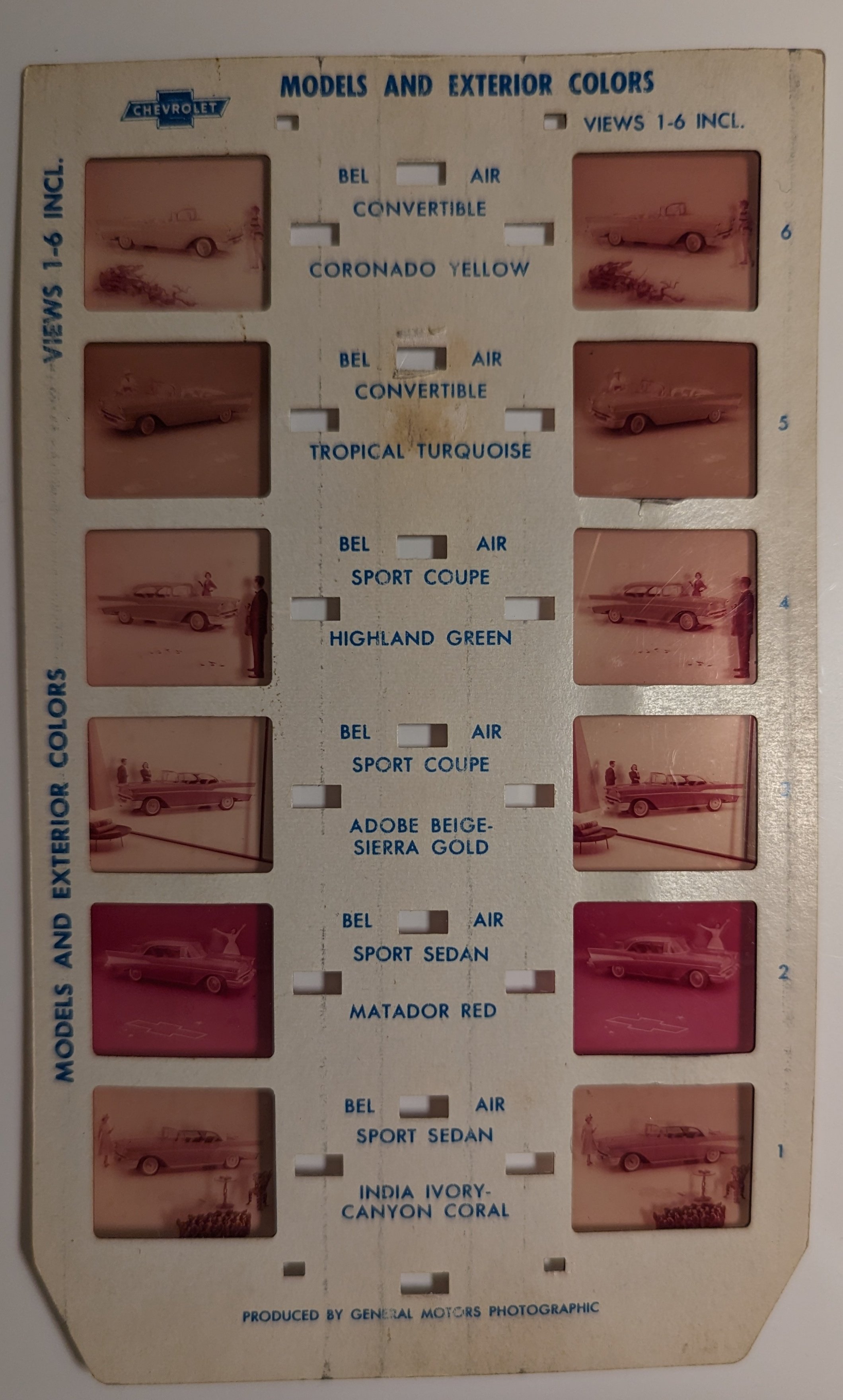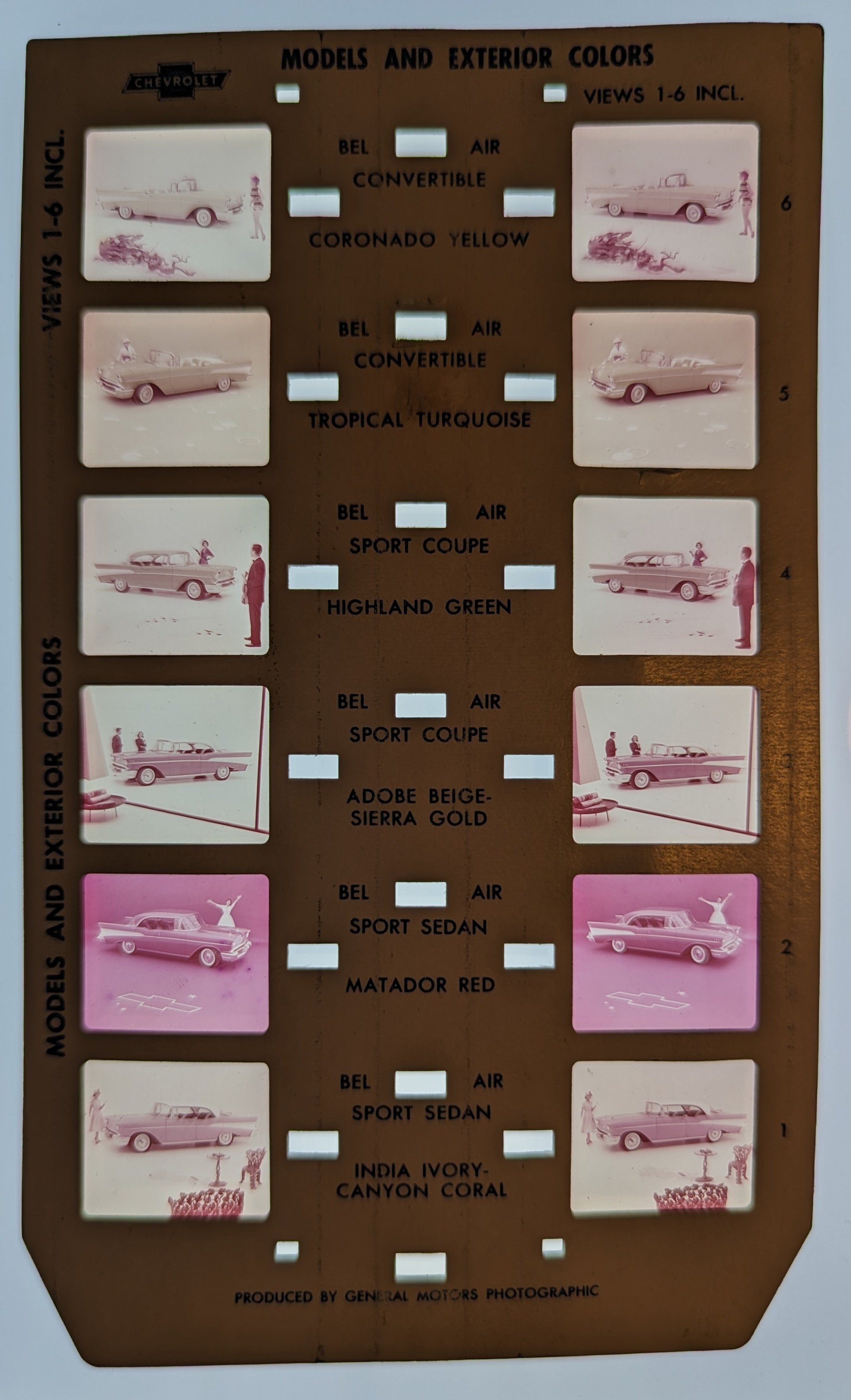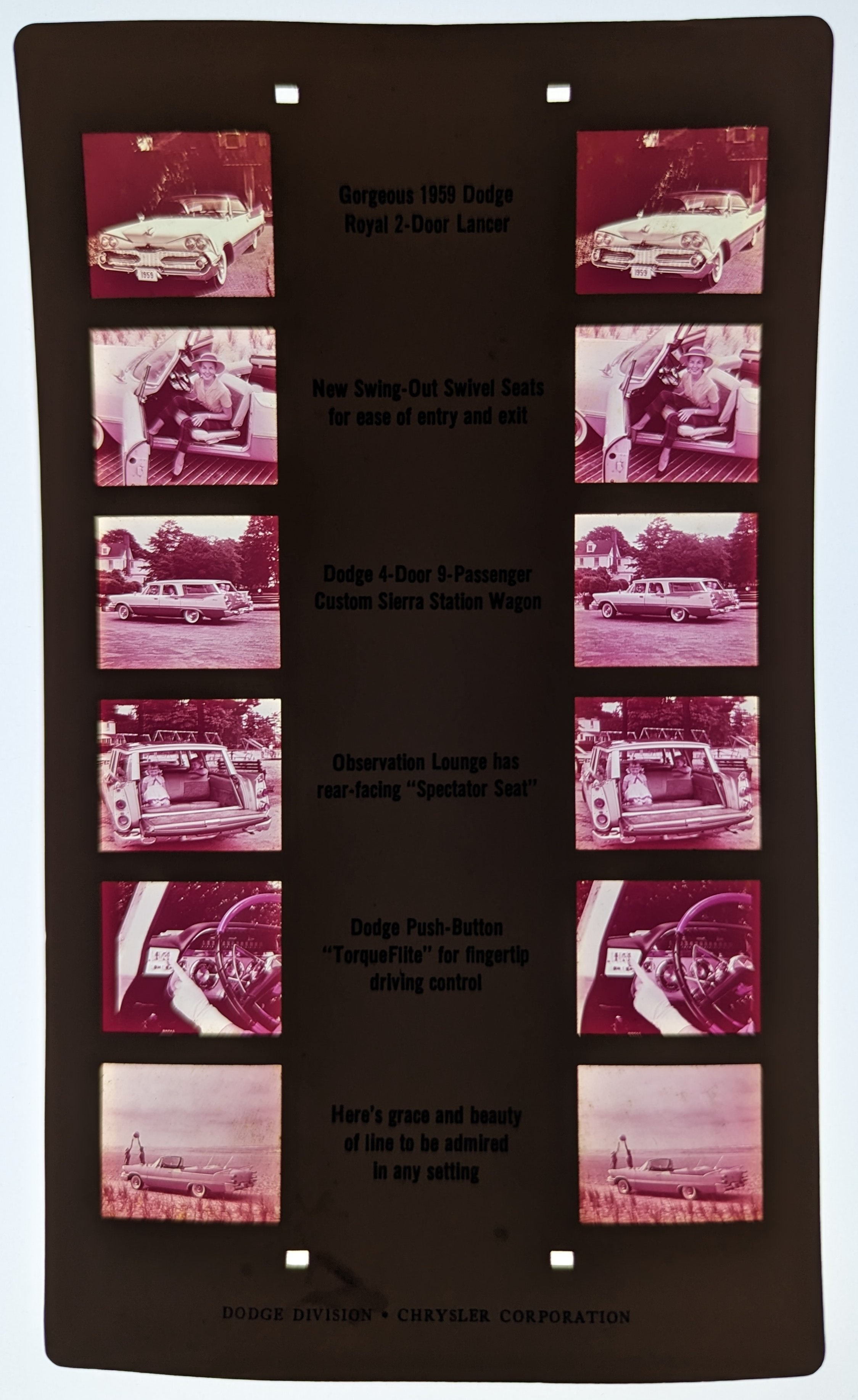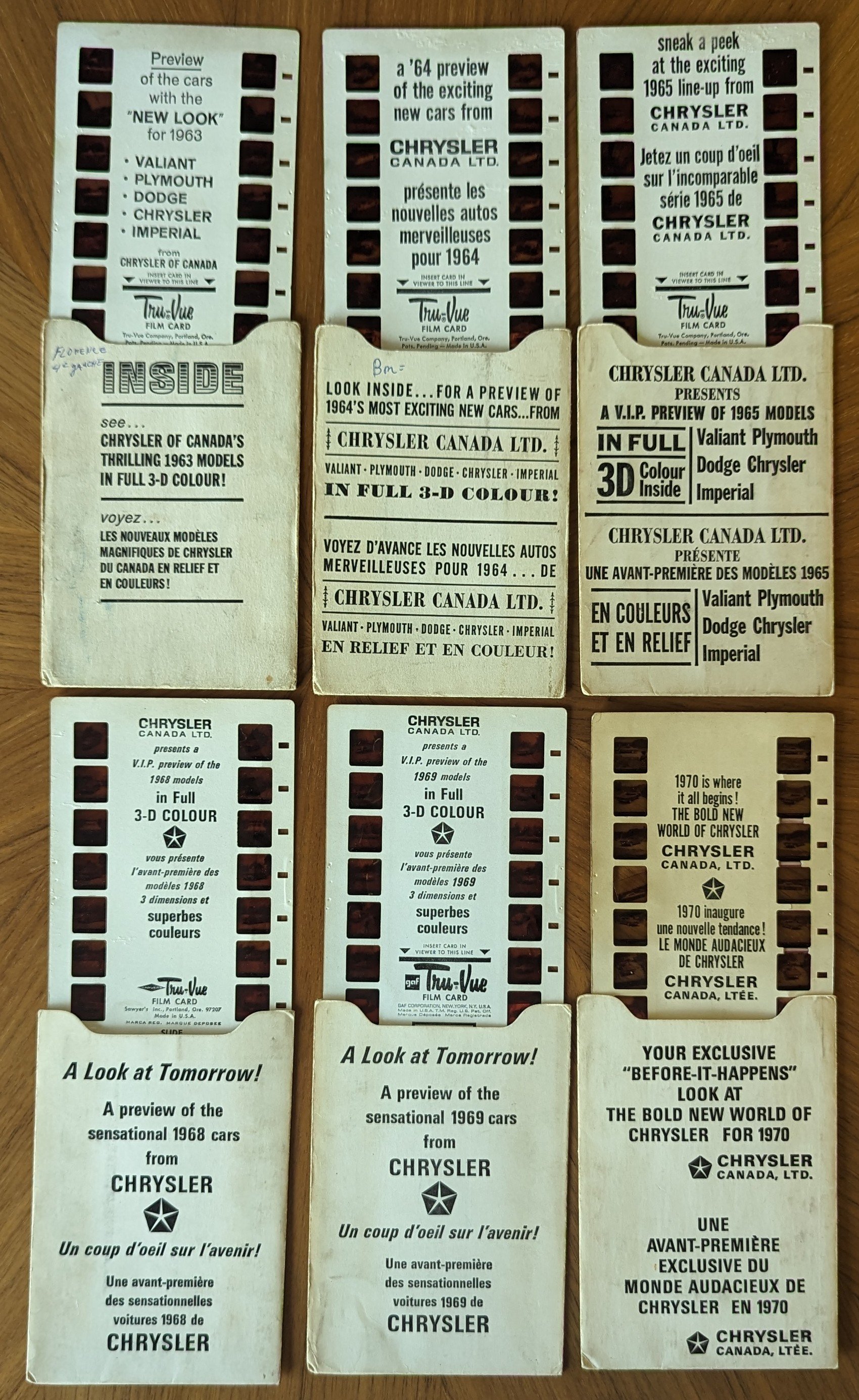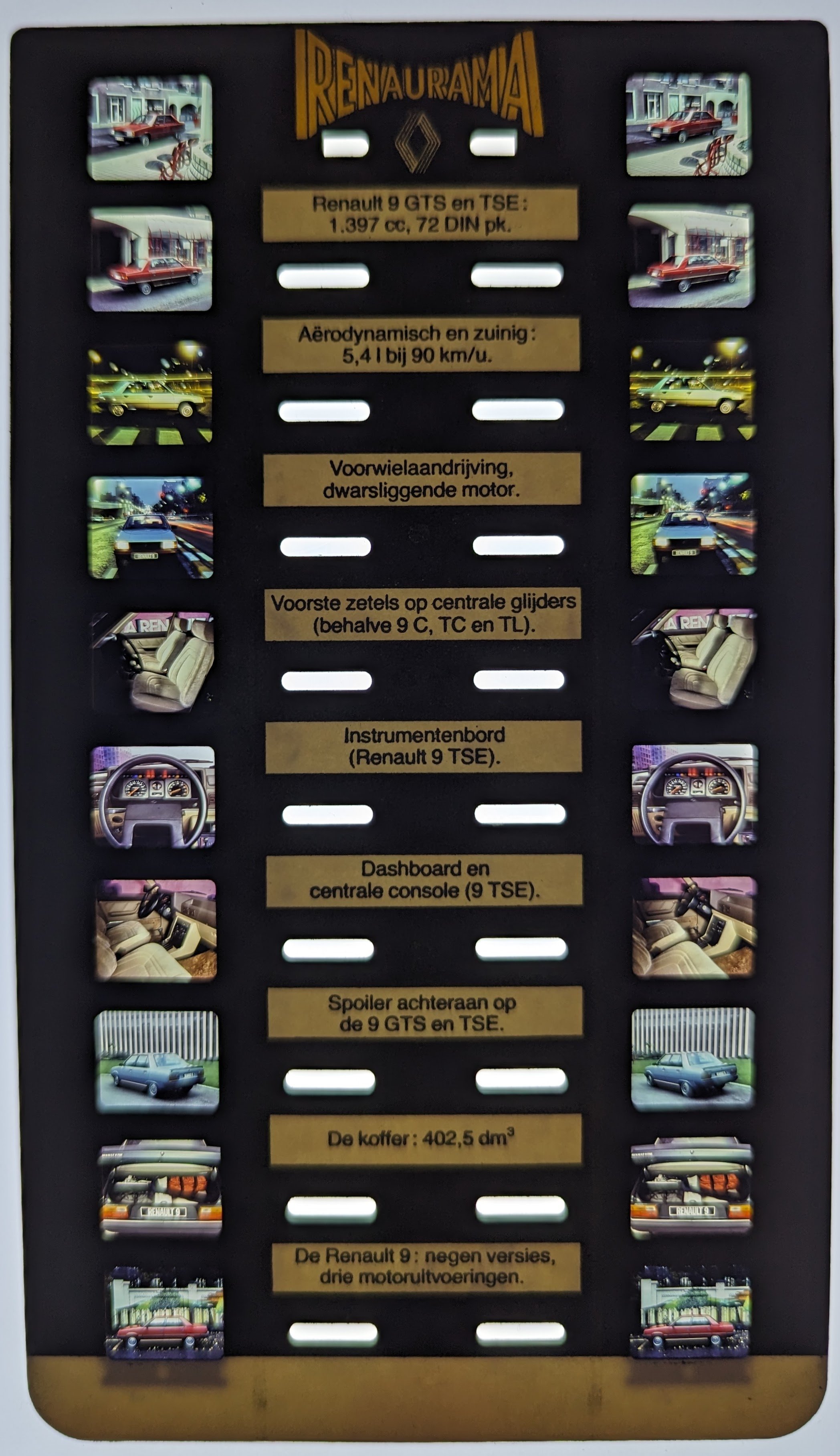Cars in 3D
Updated April 1, 2024
From De Dion Bouton in 1906 to Chevrolet and Chrysler in the 1950s-60s to Oldsmobile in the 1990s, 3D has consistently attracted car manufacturers as a fun and life-like way to advertise compared to traditional methods. We noticed car advertisements kept popping up in our stereoscope collection and thought it would be fun to discuss them as a group.
Most often, the traditional stereo viewer manufacturers will take one of their popular viewers and create a special, fully-branded advertising set for the car manufacturer. Most of the sets below have fully branded packaging while the viewer is standard-issue with no branding, for example, the Stori-Viewer, Taylor Merchant, and Stereo-foto. However, occasionally, the viewer is designed specifically for the car, like the De Dion Bouton viewer; you won’t find it used for any other purpose elsewhere.
We would classify every set below as either scarce, hard to find, or rare. For some, we’ve seen a good set come up for sale perhaps once every couple of years. For others, we haven’t seen another for sale ever — although, we’re sure they’re out there somewhere.
1906 De Dion Bouton
This rare 1906 stereoscope in book form is an advertisement for French auto manufacturer De Dion Bouton. It’s an example of a viewer specially designed to promote the vehicle. The viewer unfolds from the book which contains a paper roll with 10 stereoviews of the automobiles and factory. Two key-shaped controls on the base of the book advance the views. Inside the other side of the book is a promotional booklet for De Dion Bouton. For more photos and info, see our De Dion Bouton page.
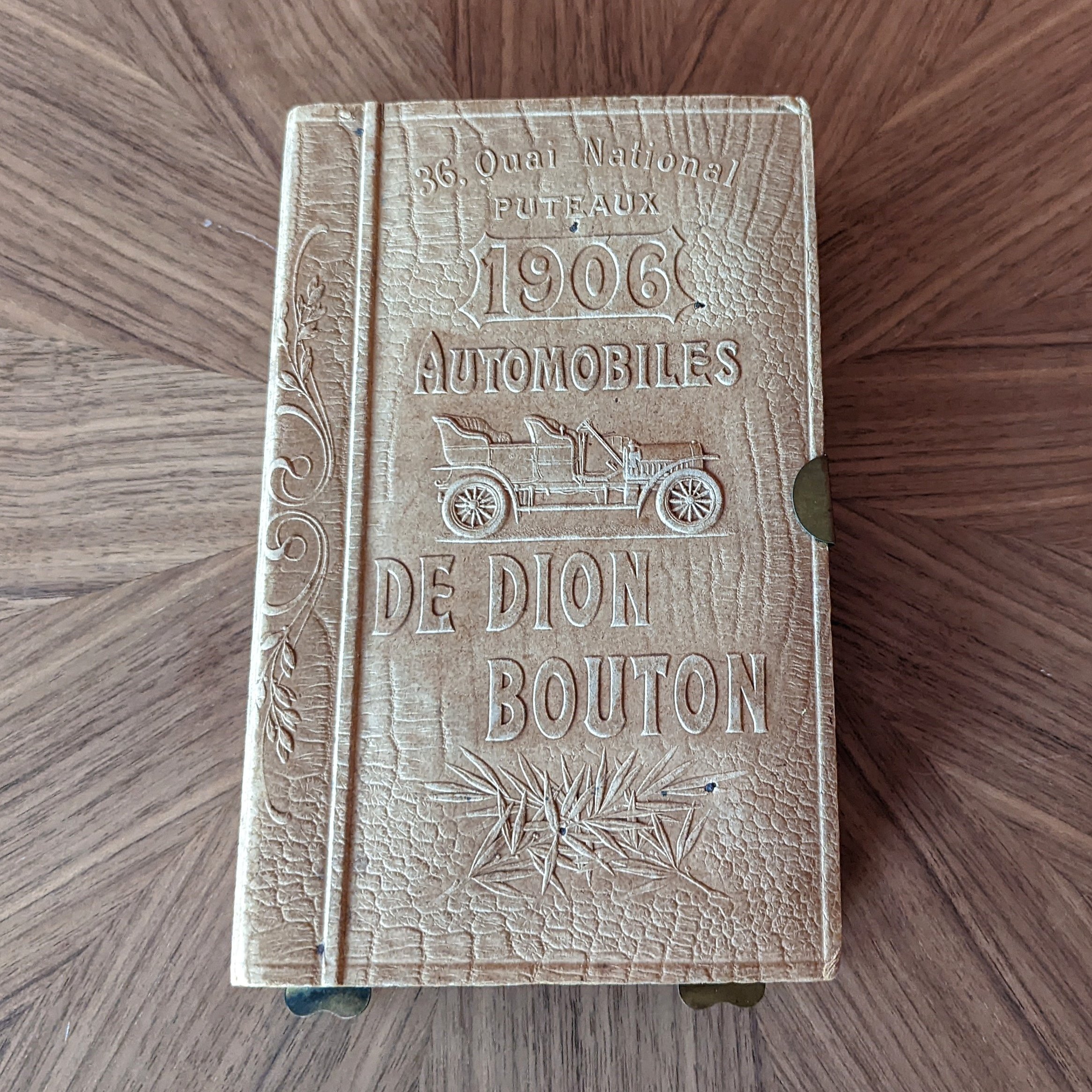

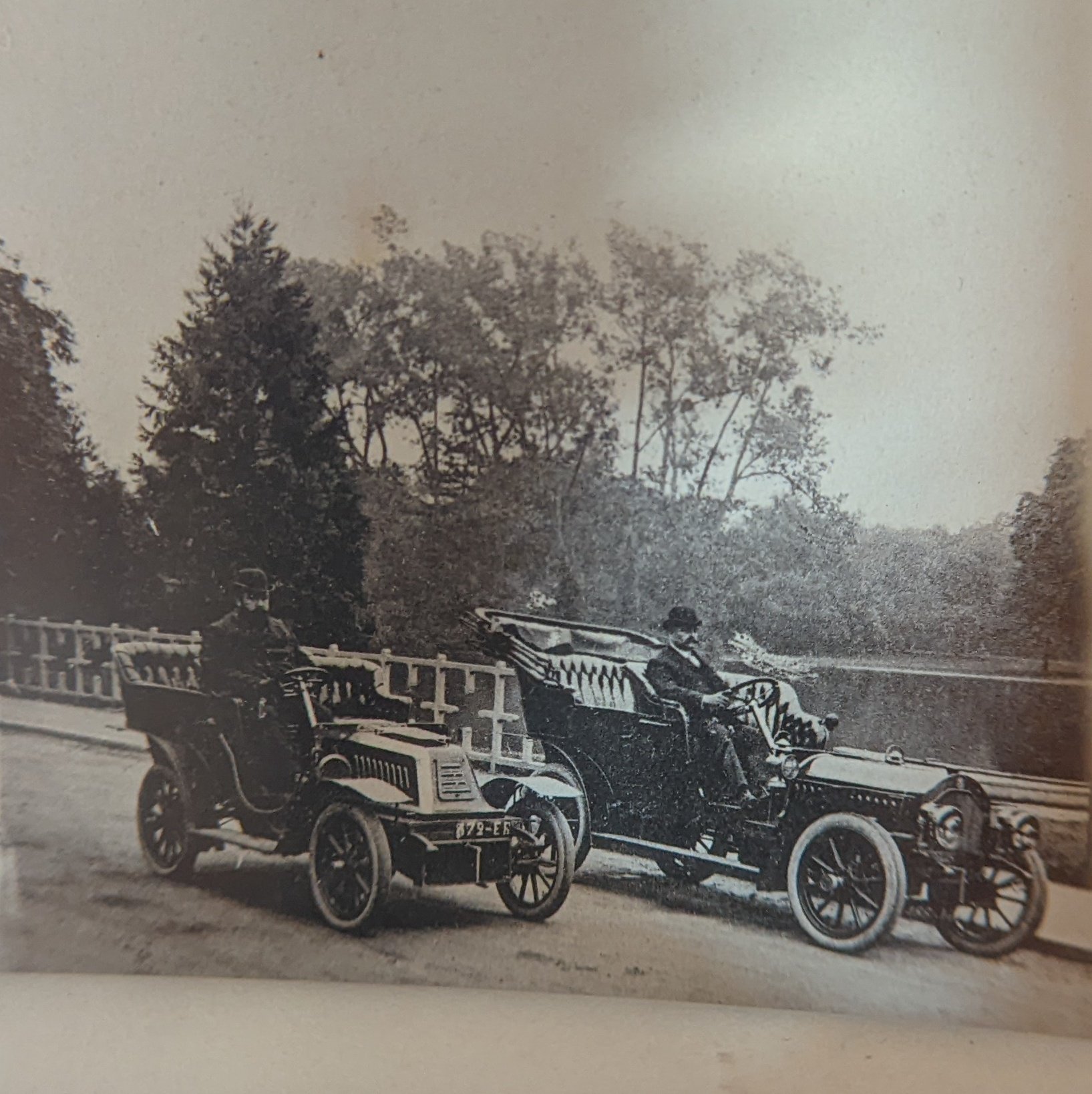
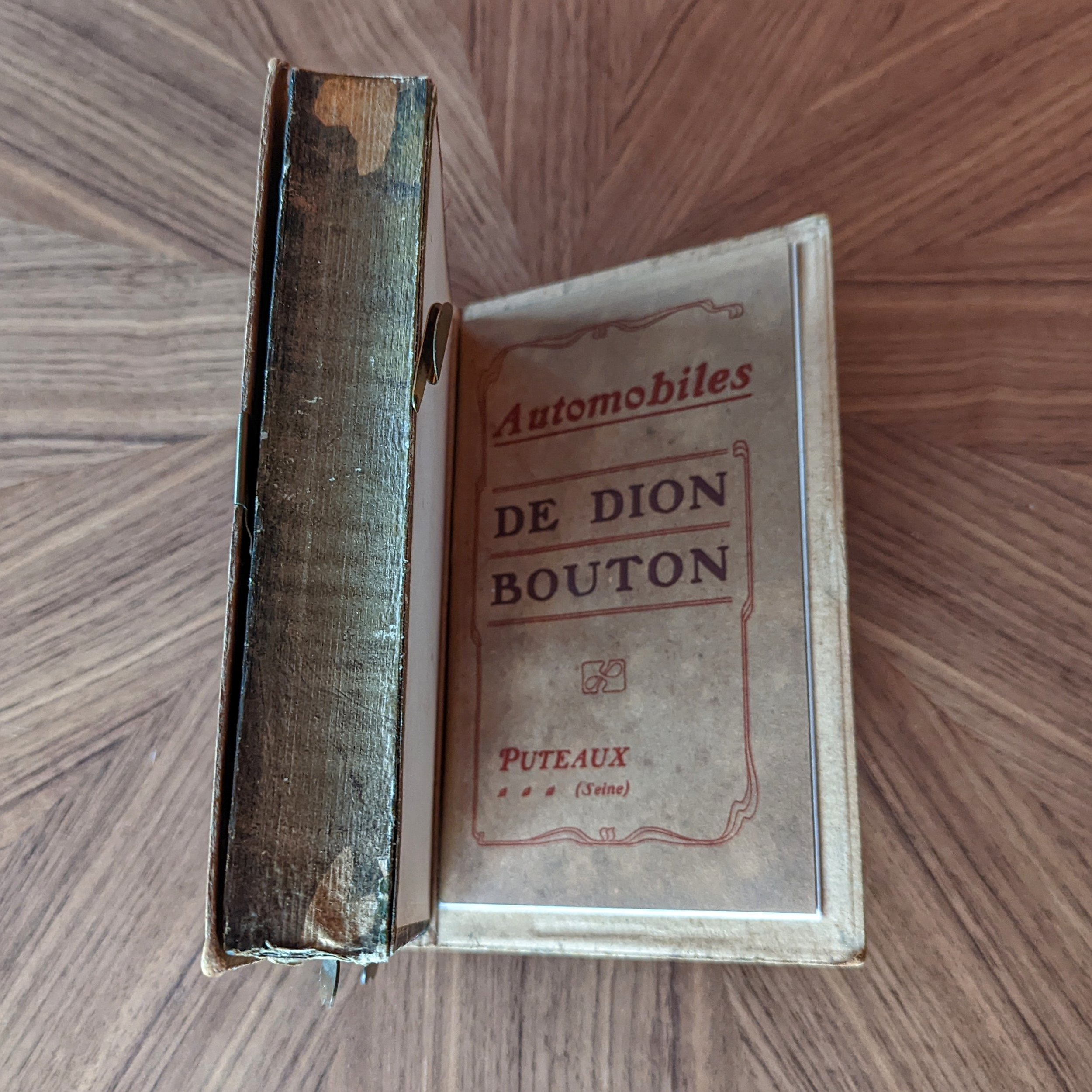
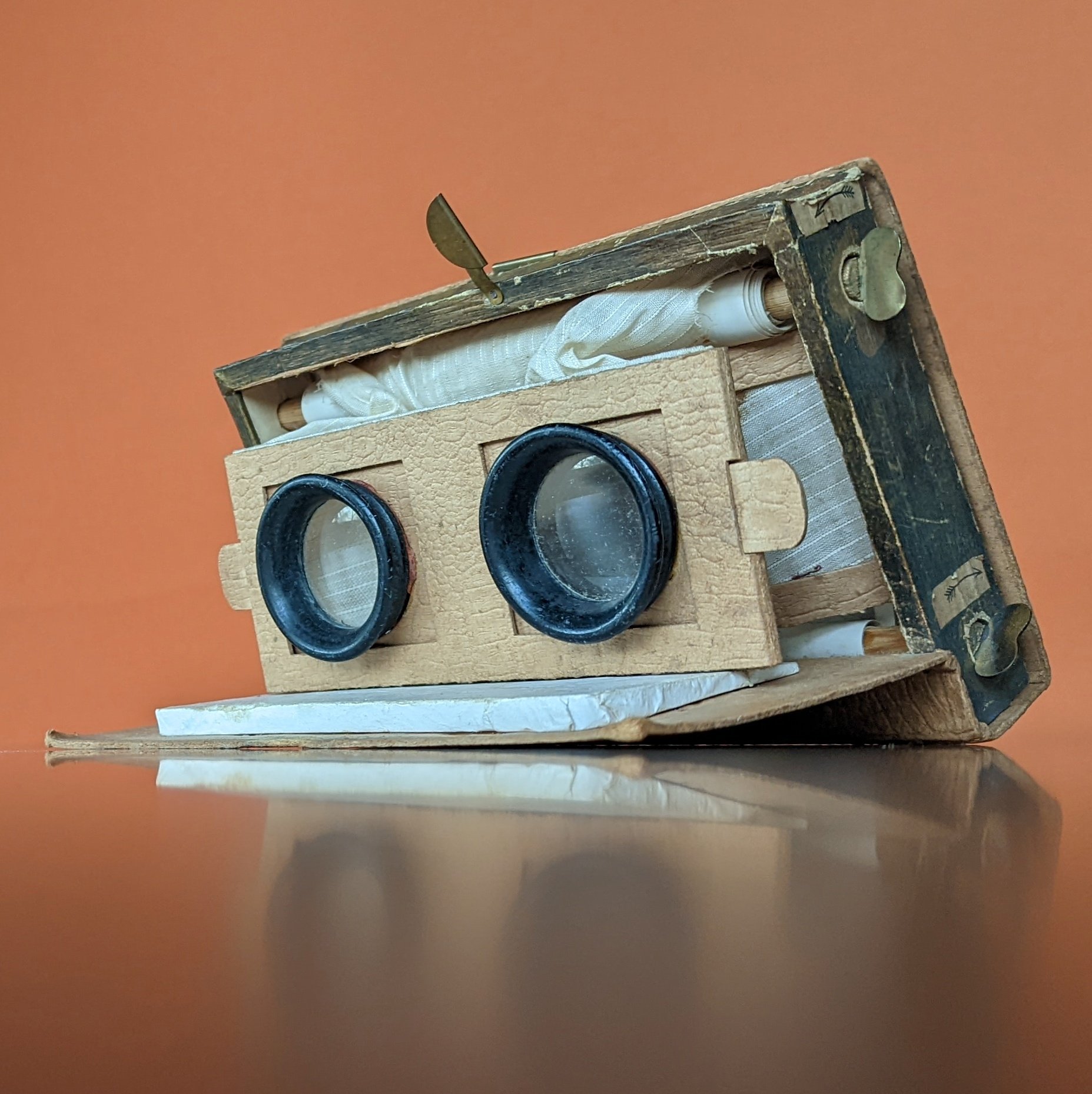
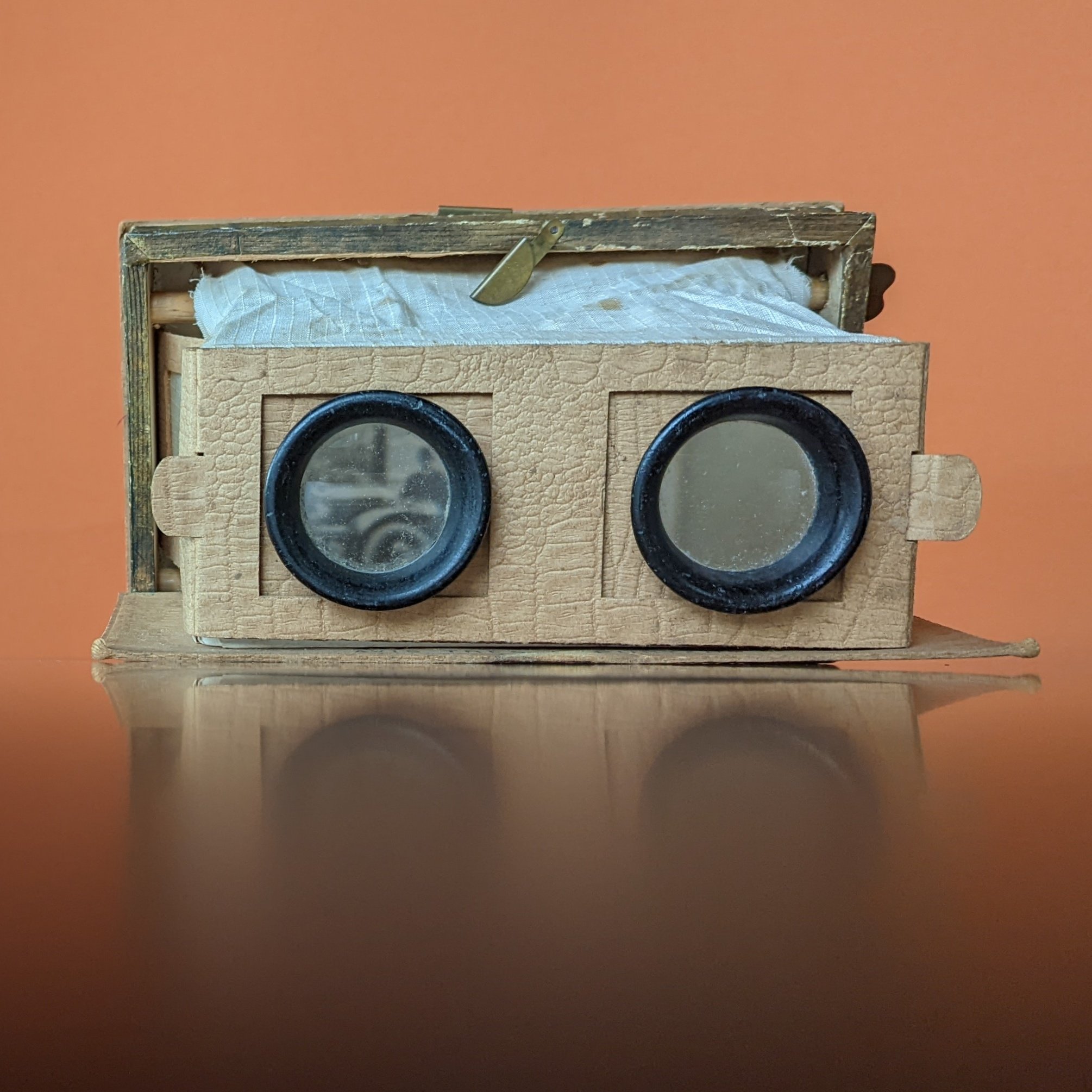
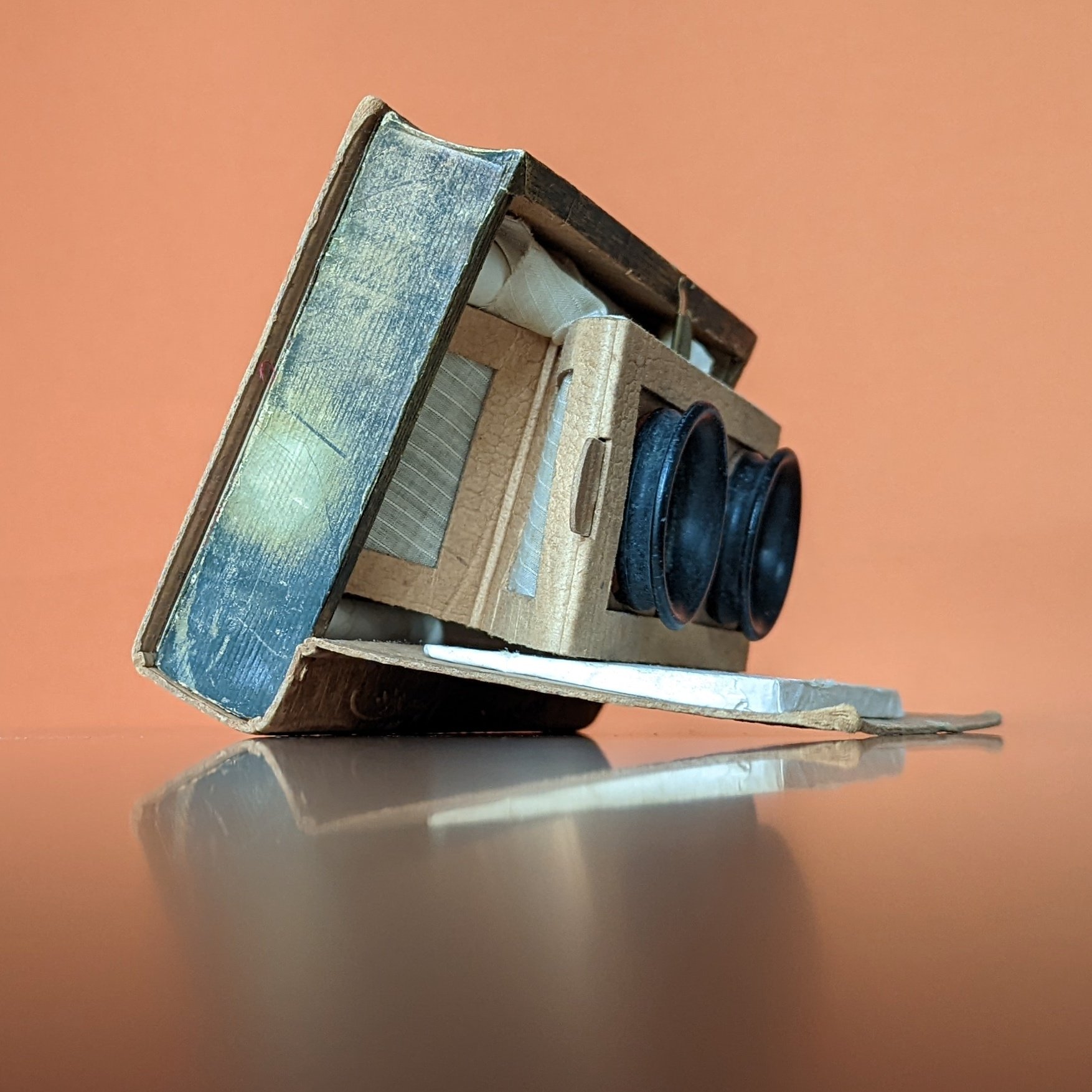
1933 Ford Motor Corp | MacyArt
In the early 1900s, Alfred Macy founded an entity called MacyArt to produce anaglyph glasses and publications. He also licensed others to print anaglyphs through a company called American Colortype. This promotional book, “Look Through the Eyes of the Engineer,” features anaglyph images of the new Ford V8 and was produced by MacyArt. The “Ford-a-Scope” 3D glasses were produced by American Colortype.
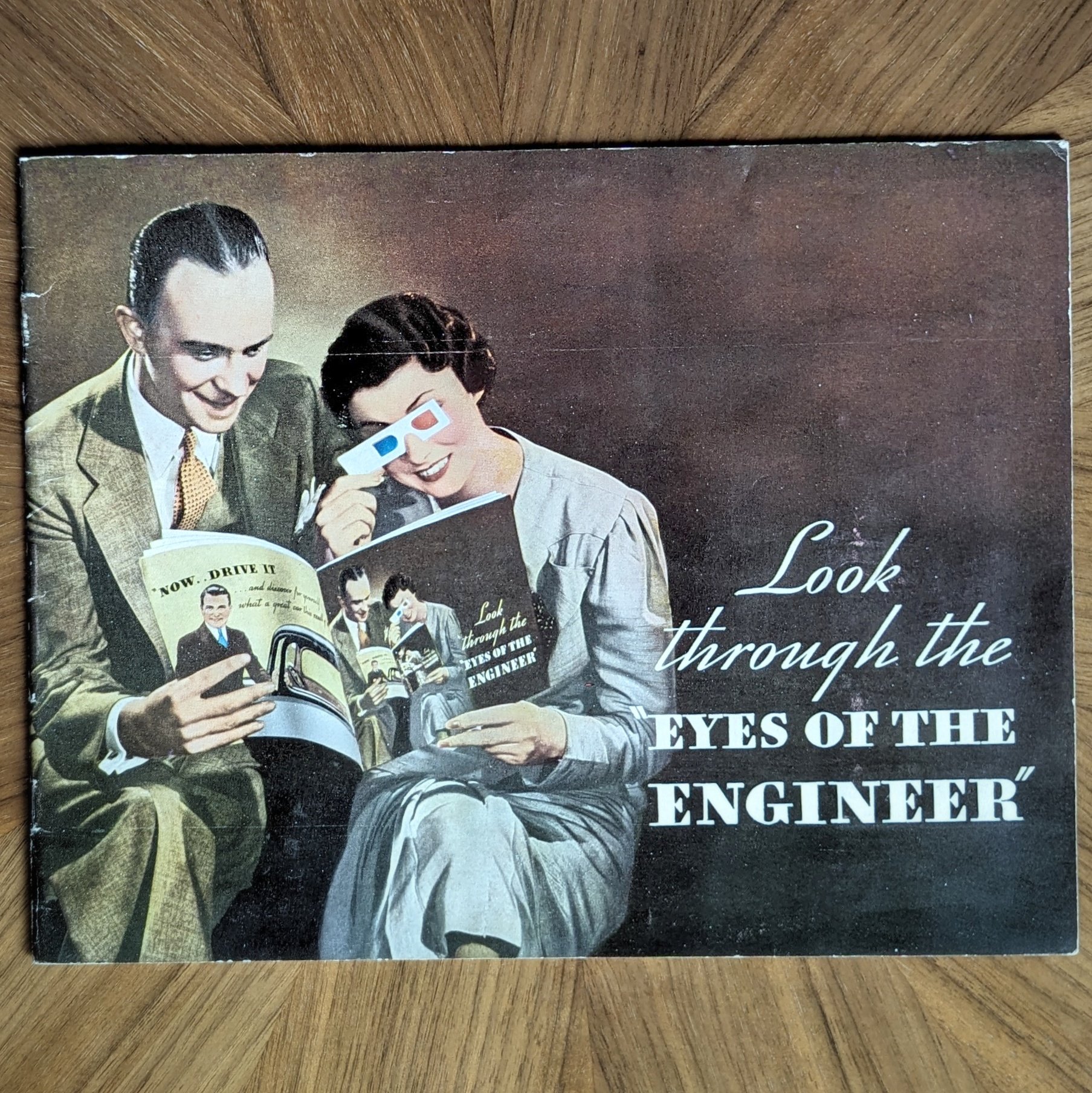
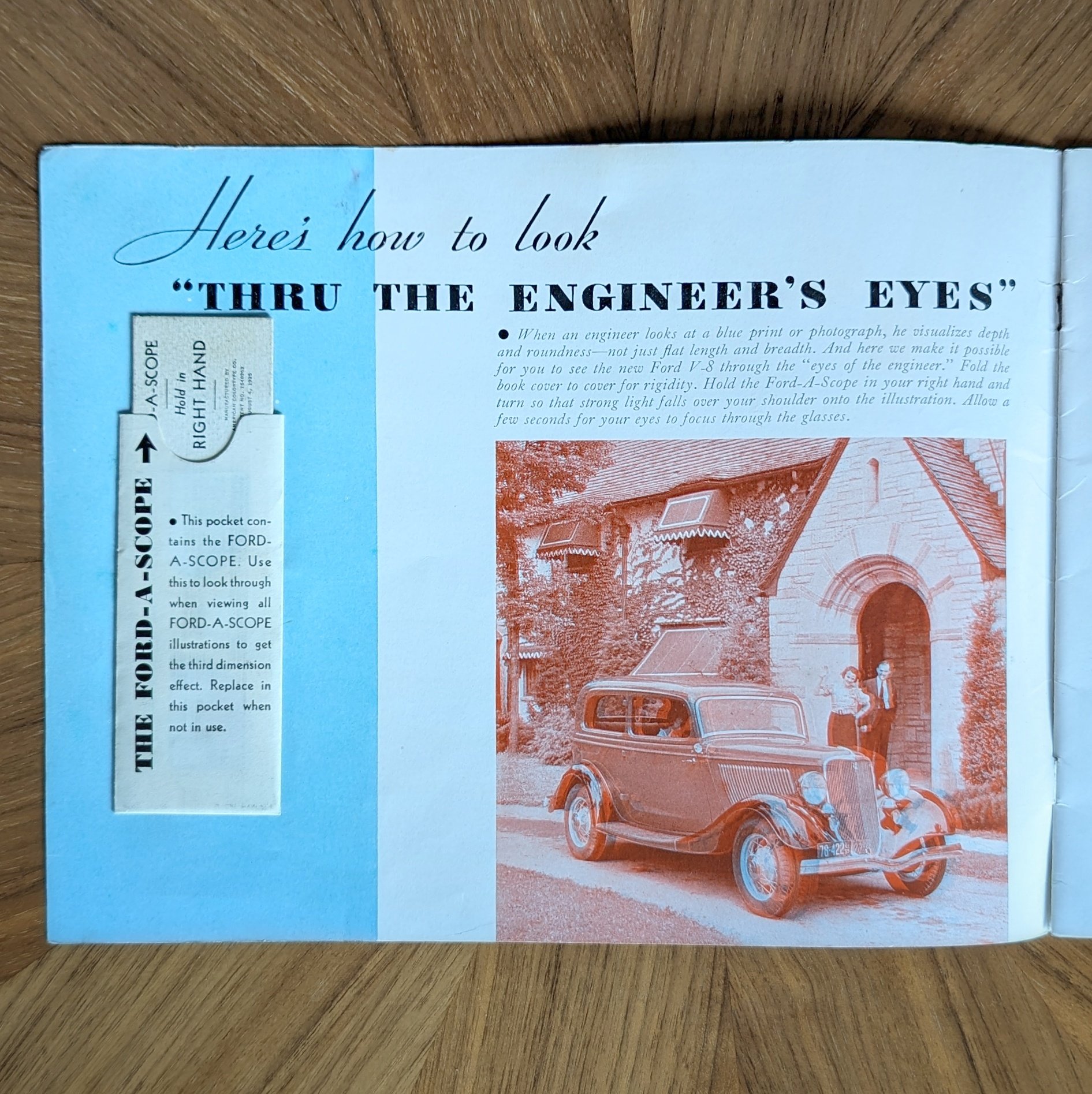
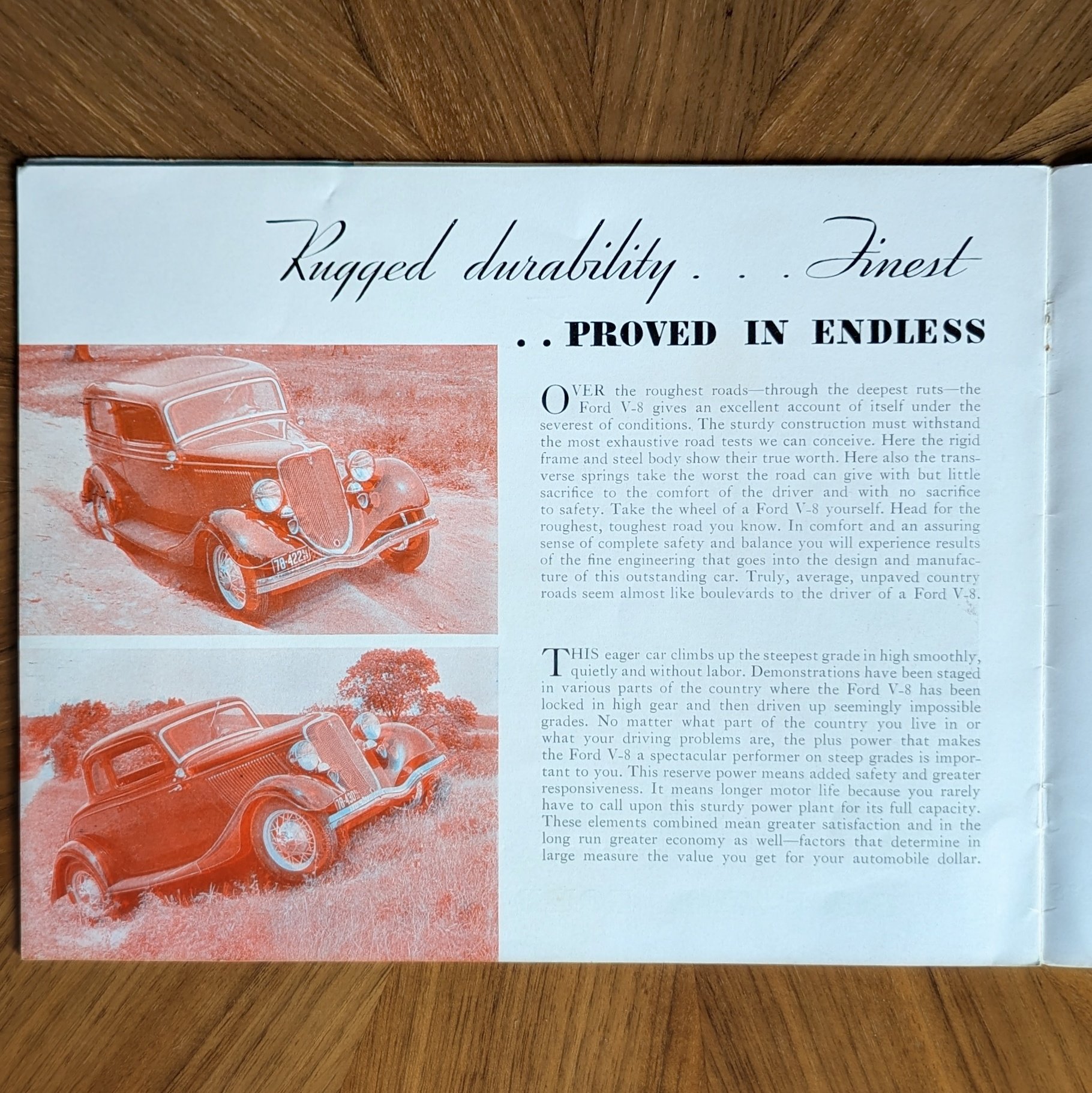
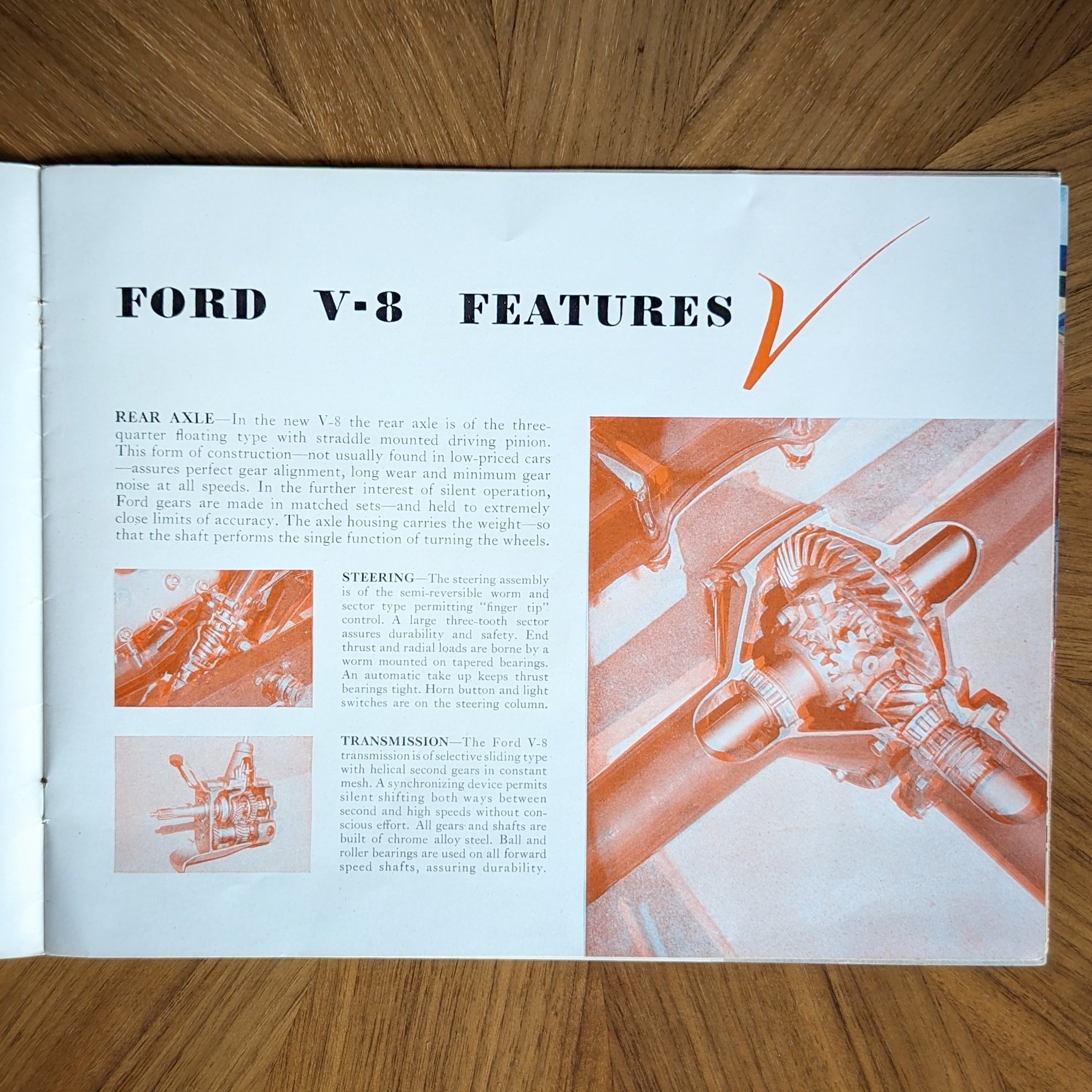
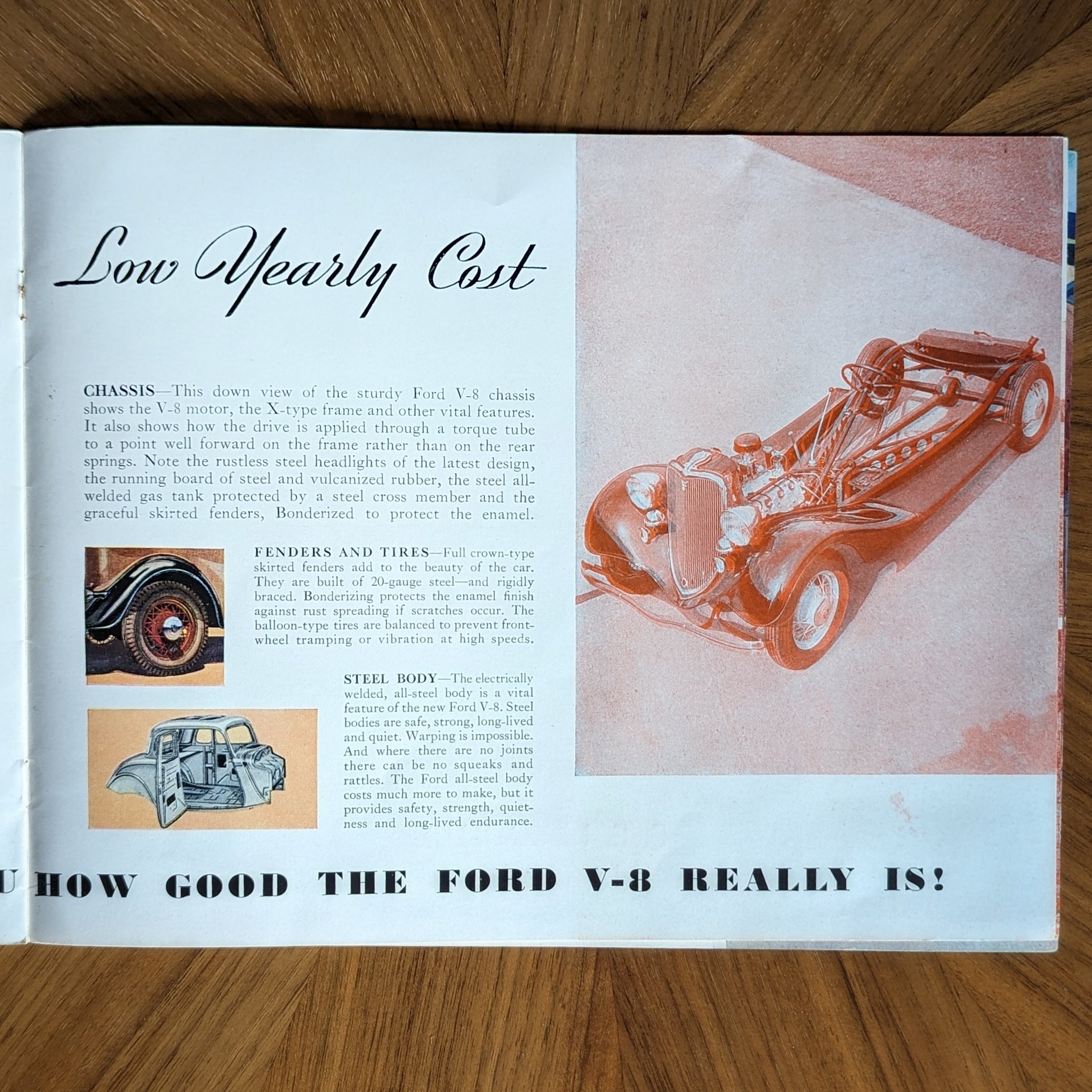

1949 Ford Motor Corp | Tru-Vue
While Tru-Vue mass-produced over 400 general-interest 3D filmstrips, they produced less than 100 limited-quantity advertising 3D filmstrips. Because of the limited quantities, these promotional filmstrips are all very hard to find today and can be quite pricey compared to the more common Tru-Vue filmstrips. We have about 35 in our collection and this is one of our favorites. This rare 1949 color Tru-Vue filmstrip, “Here’s the Ford in Your Future,” was created as a 3D advertisement for Ford Motor Corp. It has 15 stereo pairs and while the color has faded, it’s still detectable. The filmstrip could be used with any of the Tru-Vue filmstrip viewers.
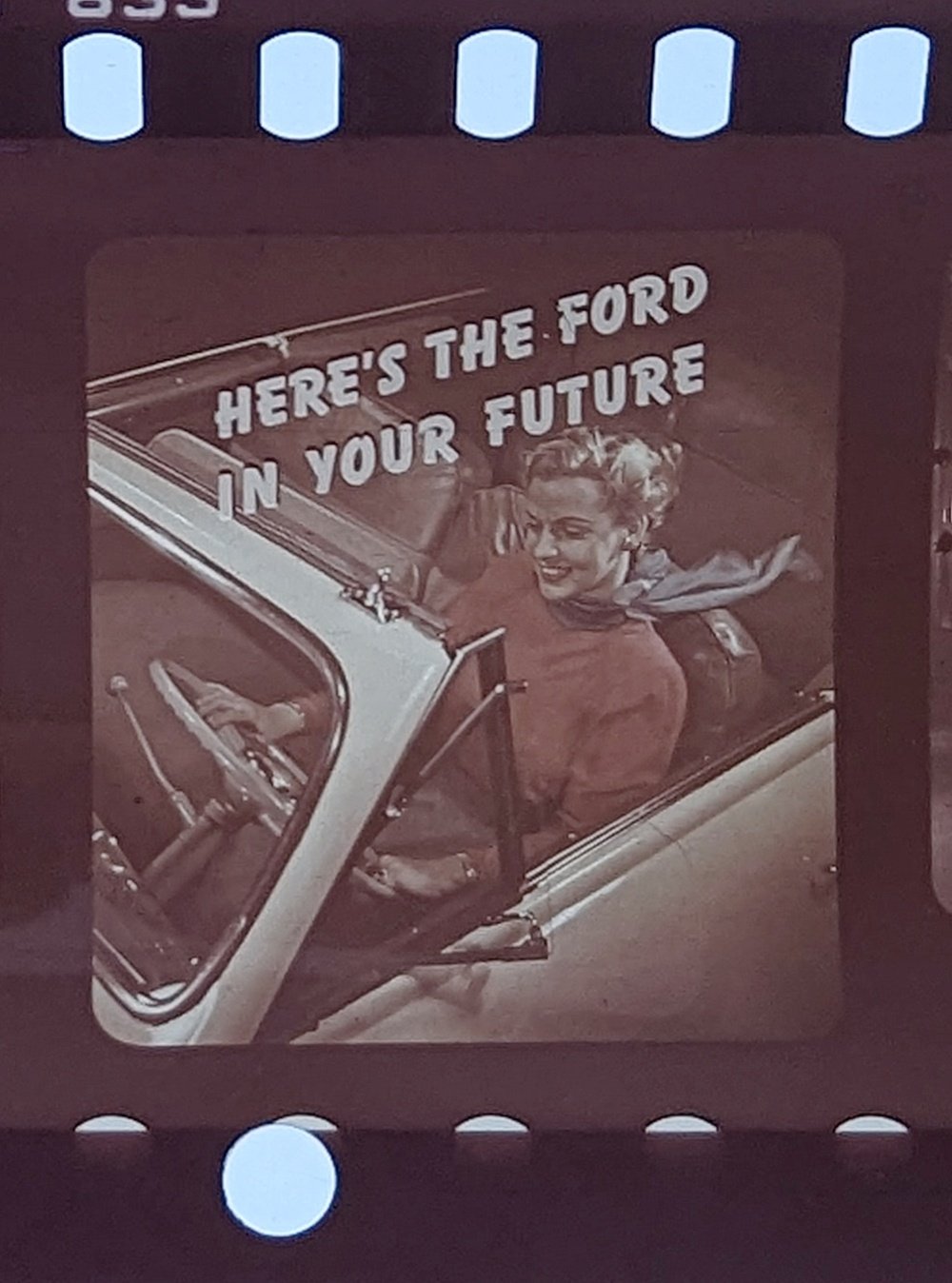
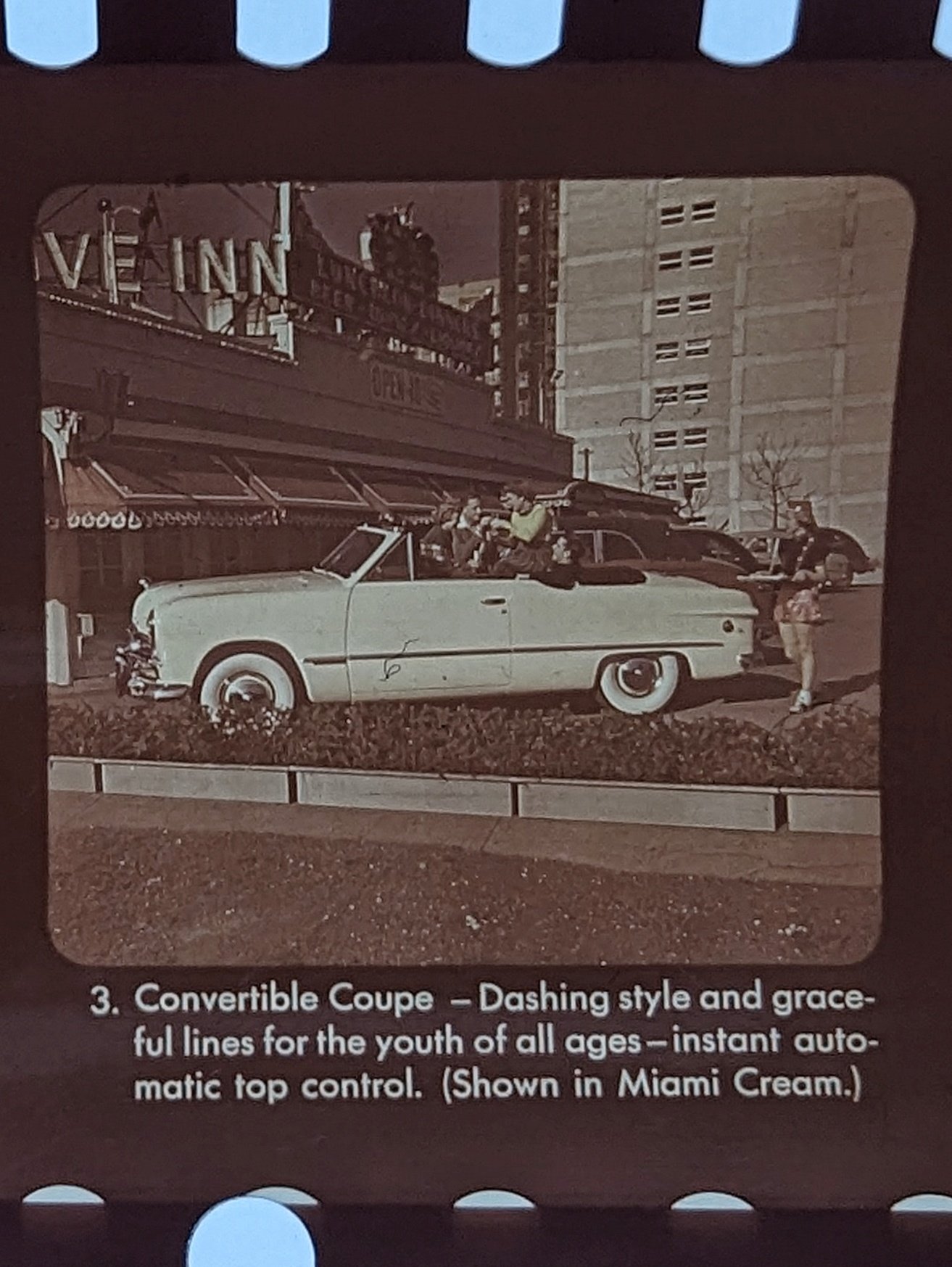
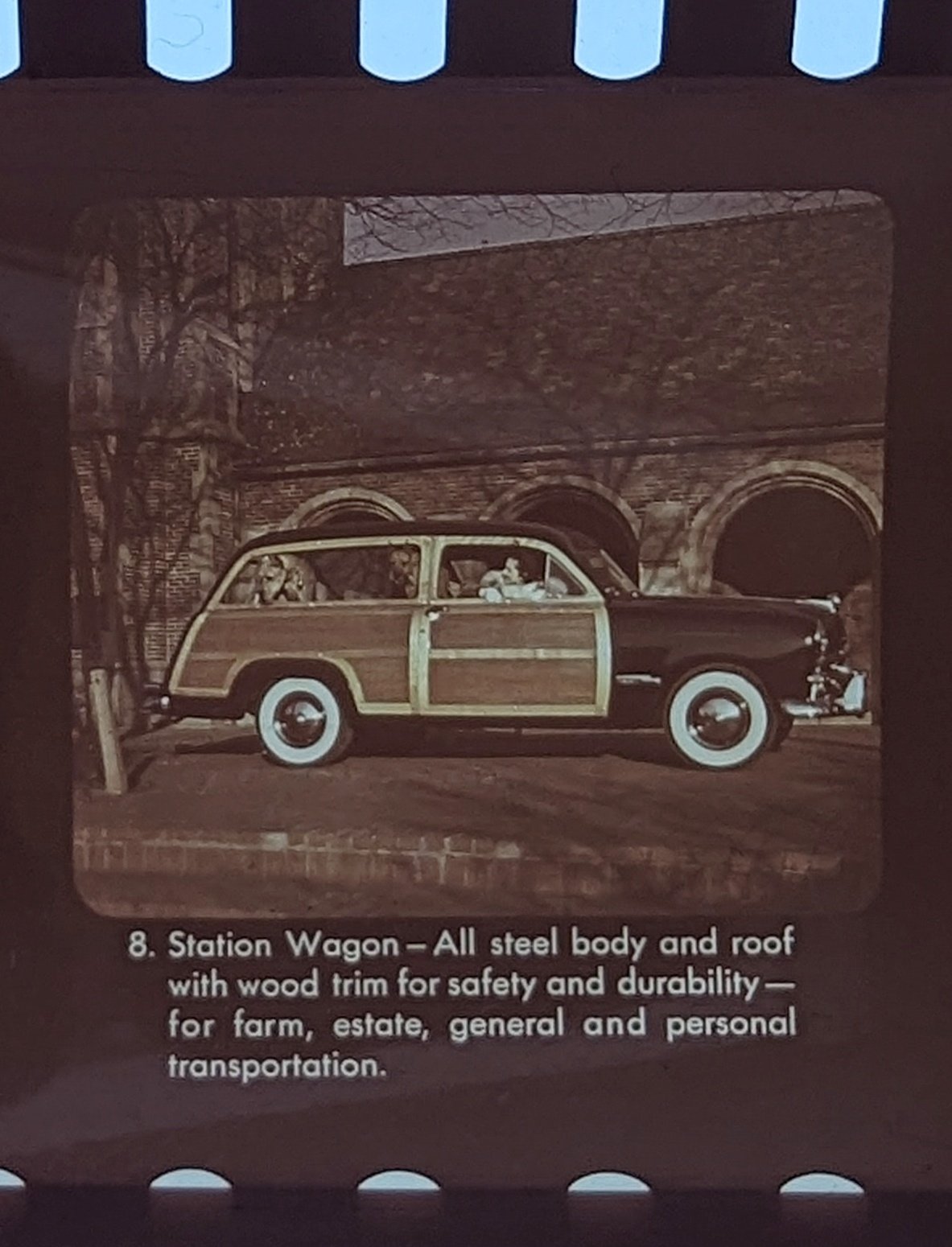
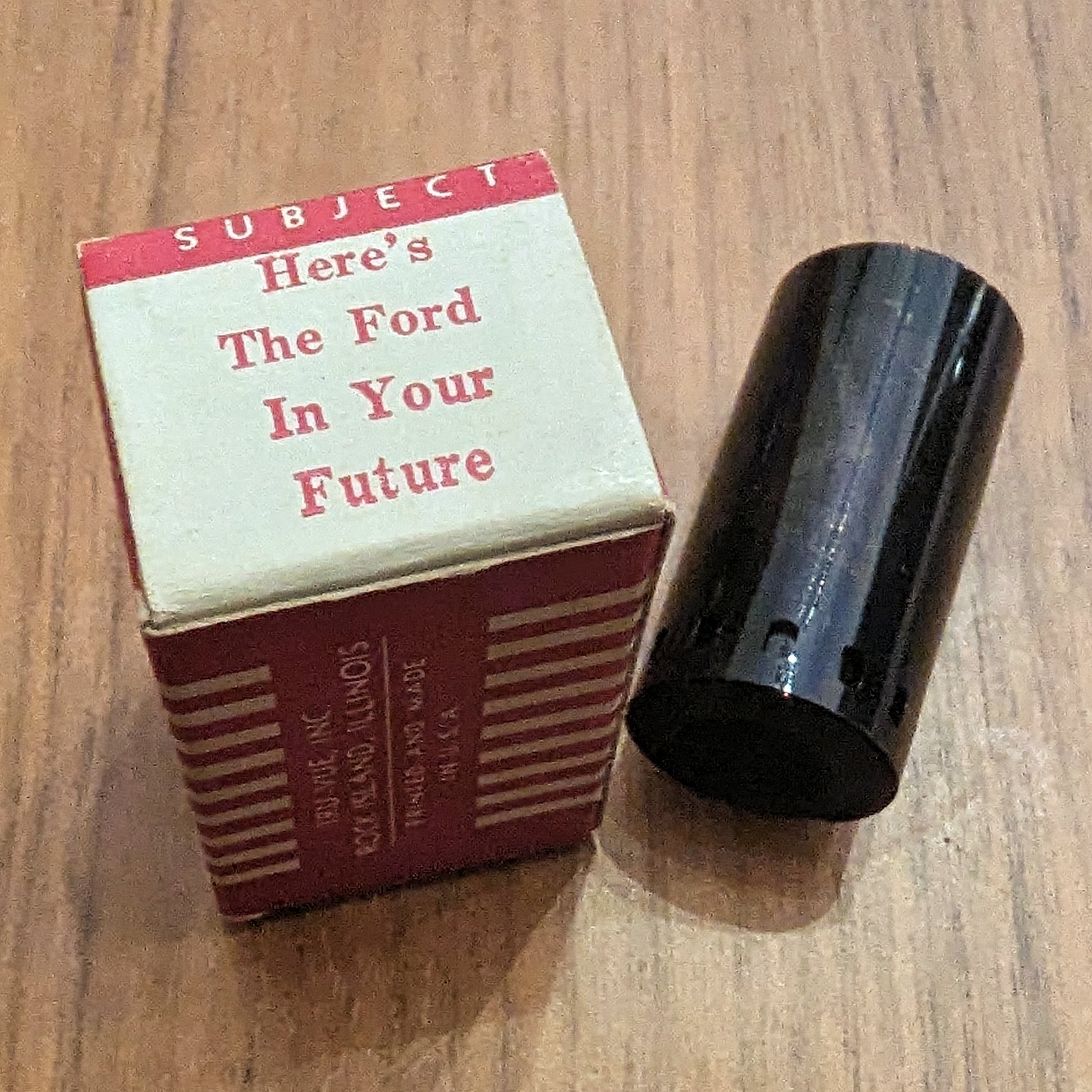
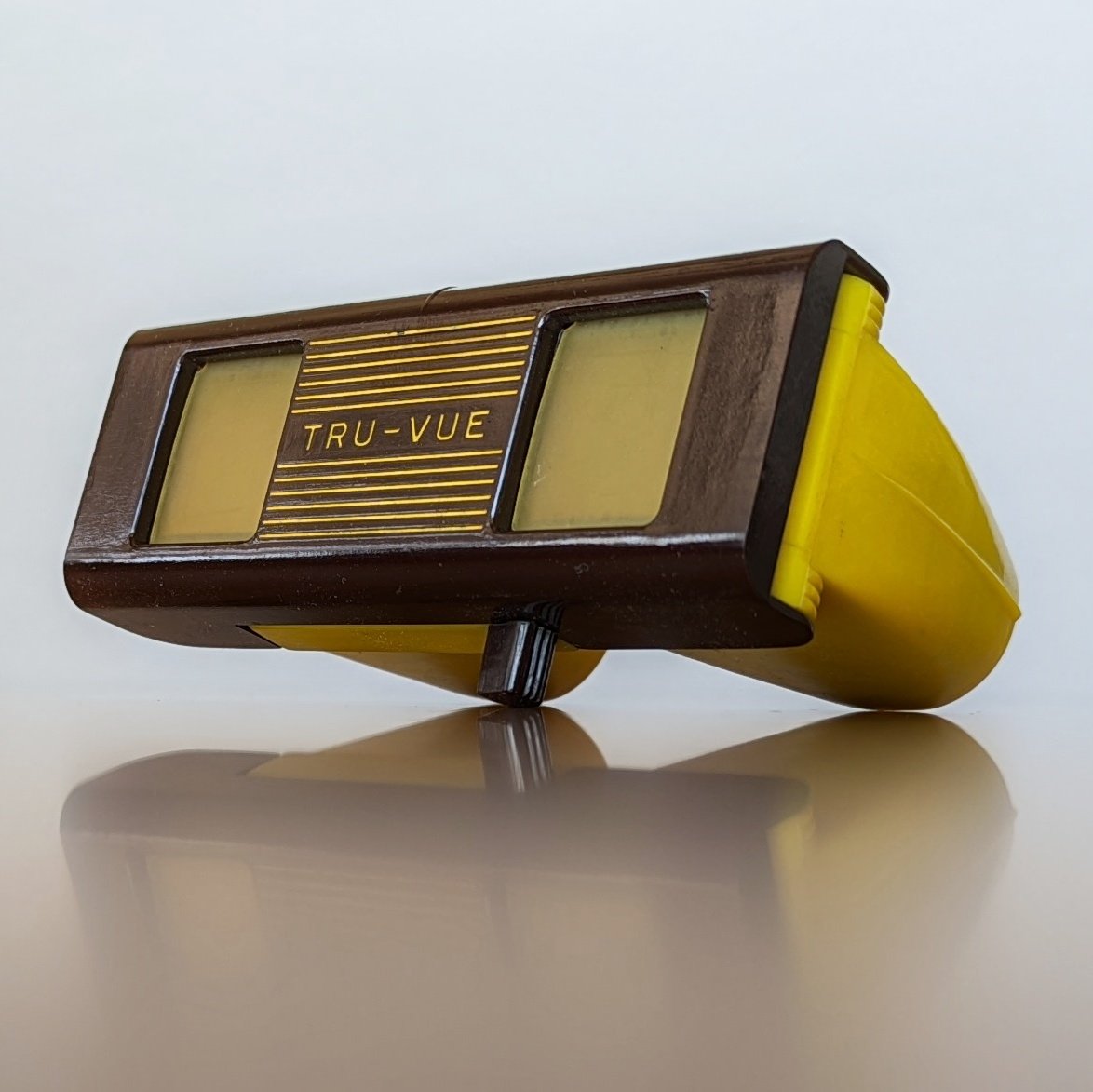
1951 Oldsmobile Futuramic Three Dimension Theater
This Oldsmobile set comes in a branded case with a standard-issue red-button Stereo Realist viewer and glass slides showing off their 1951 series of “Rocket” engine cars, their regular fleet, and some of their buildings. These pop up from time to time but it’s difficult to find one with a complete set of slides.
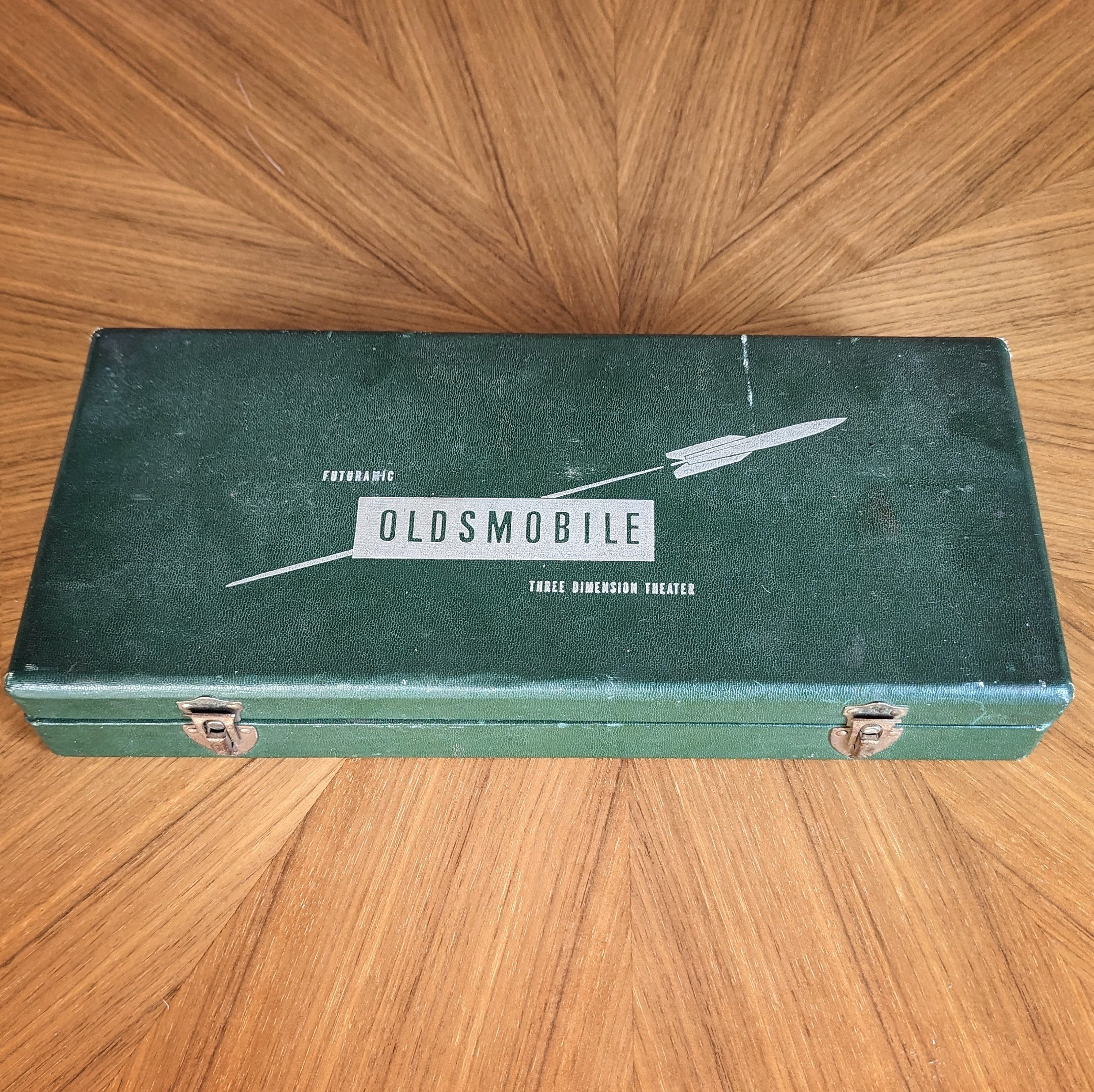
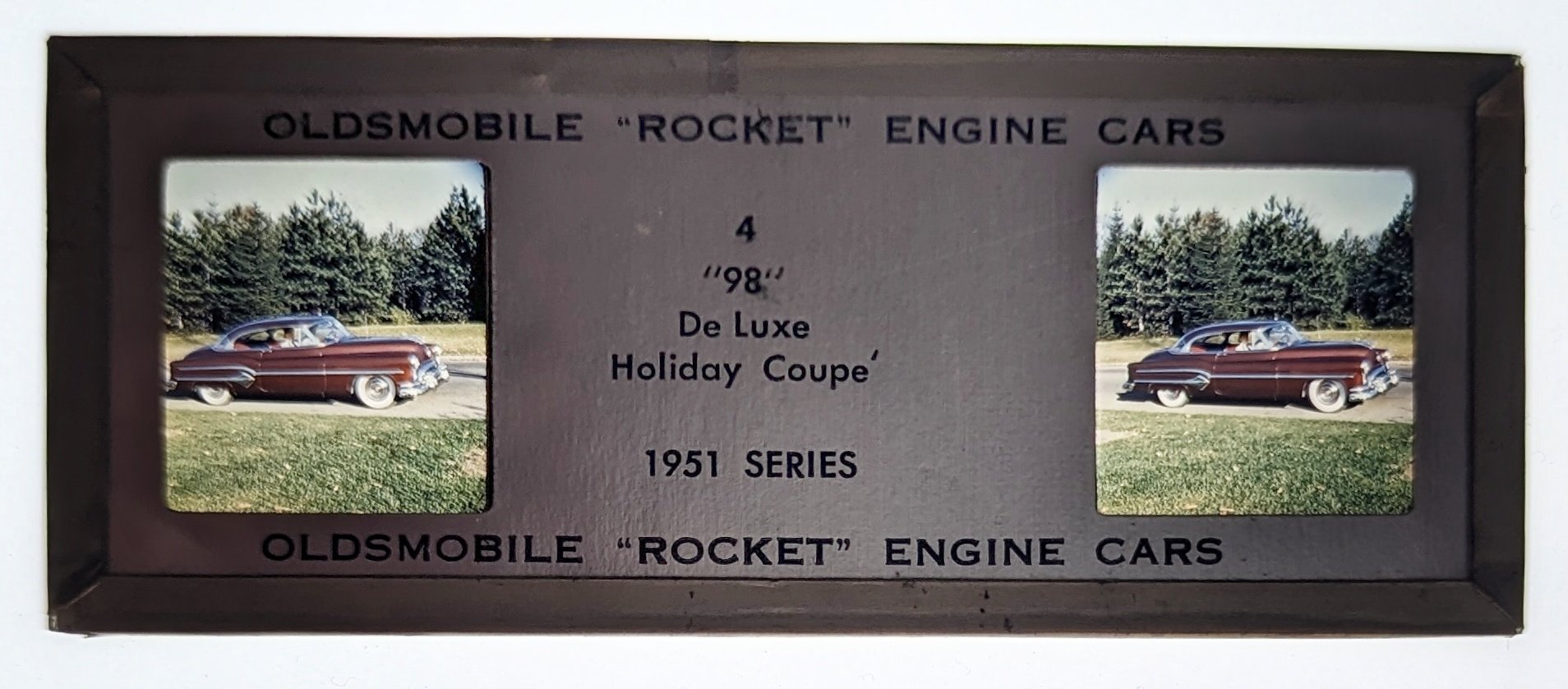

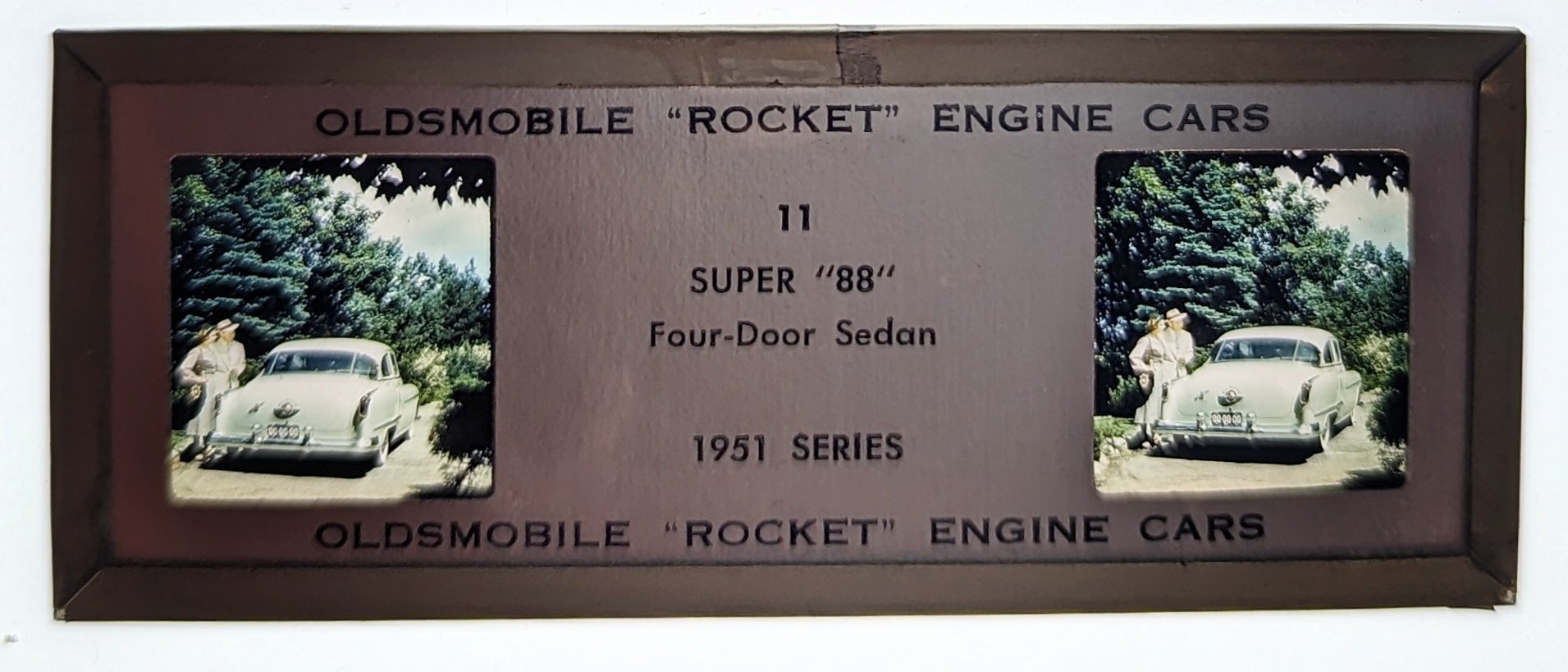
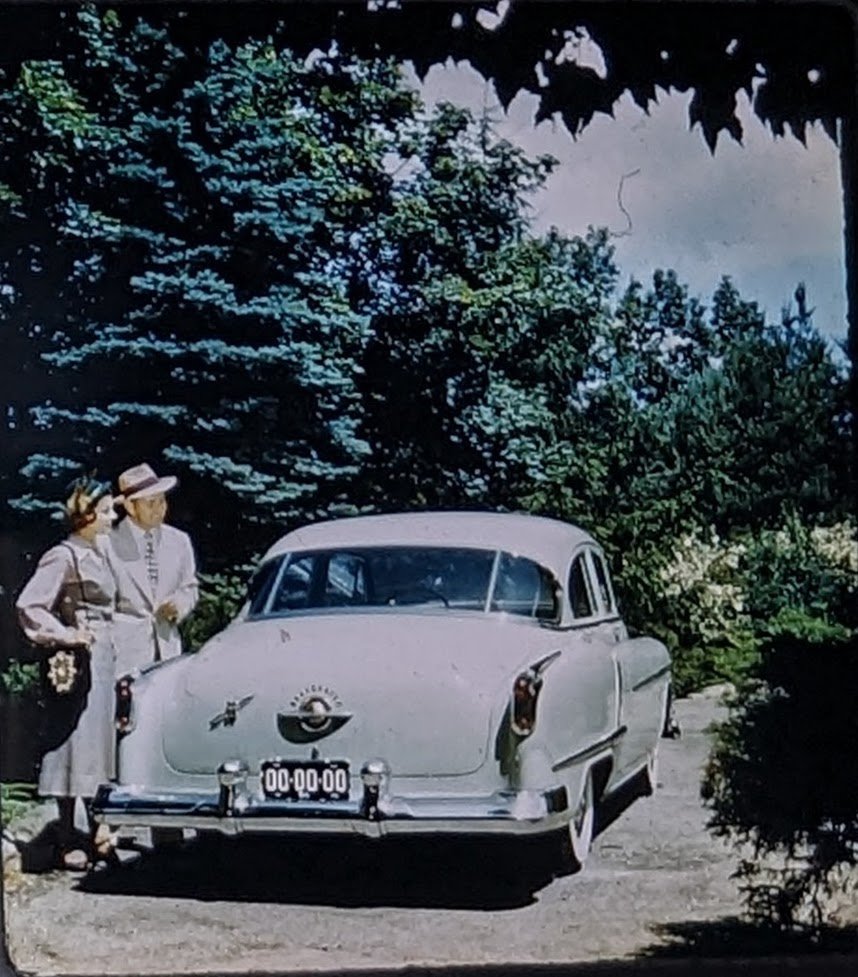
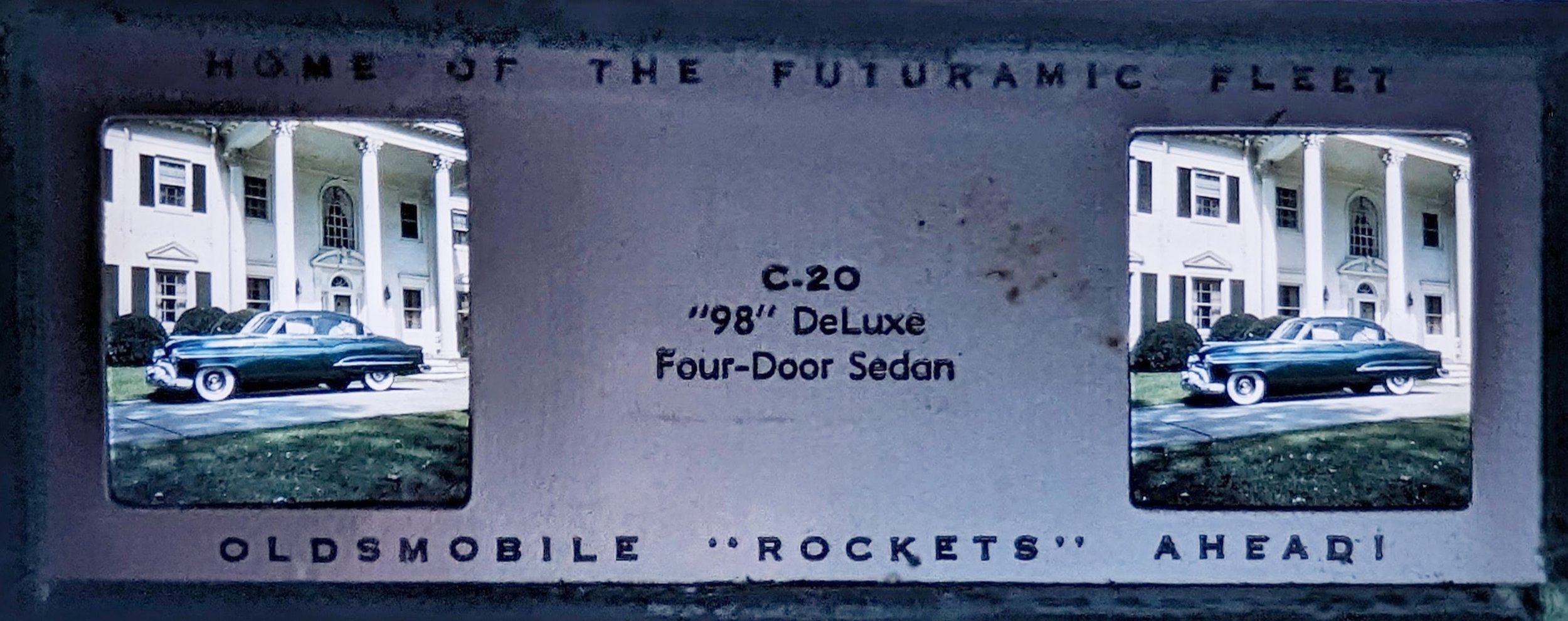
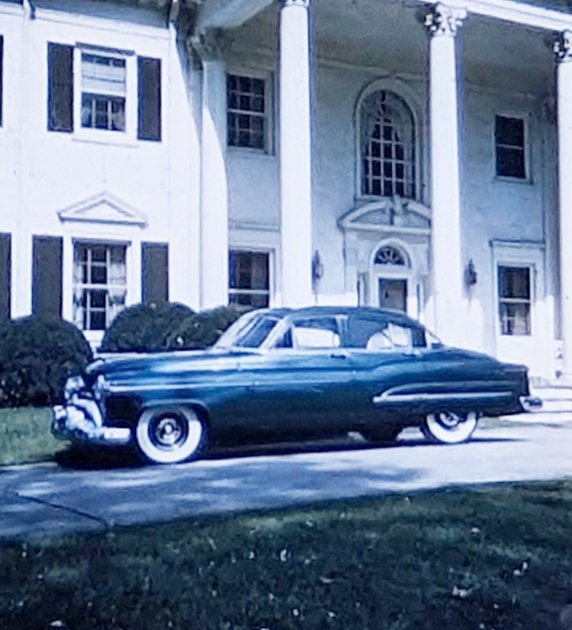
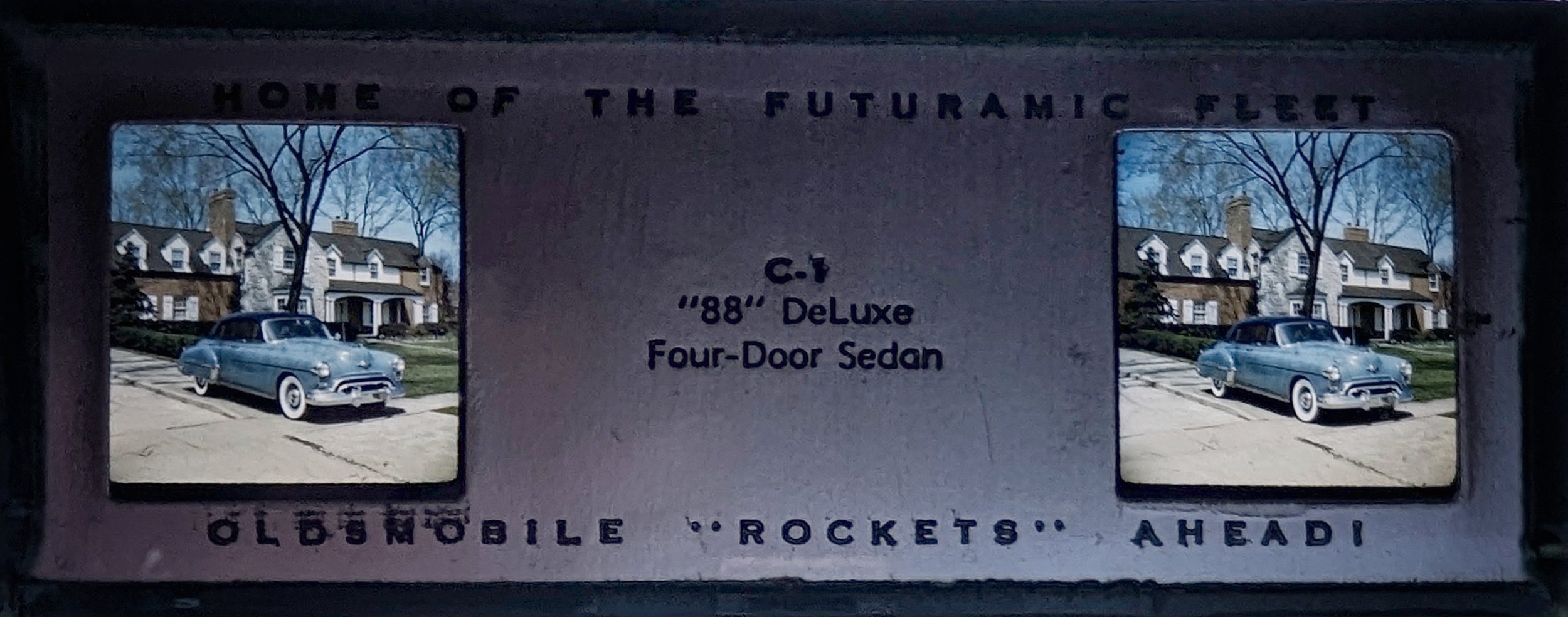
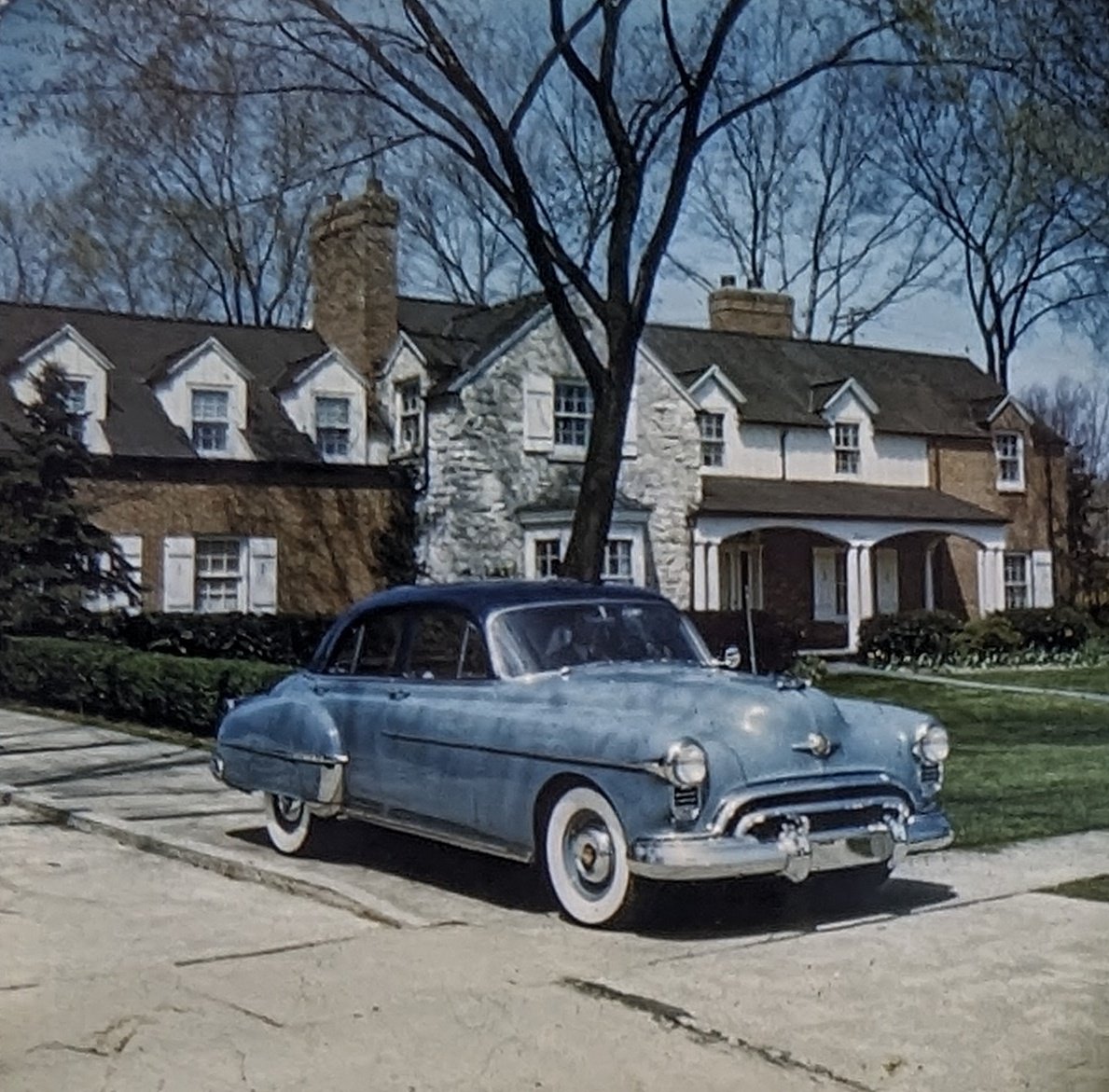
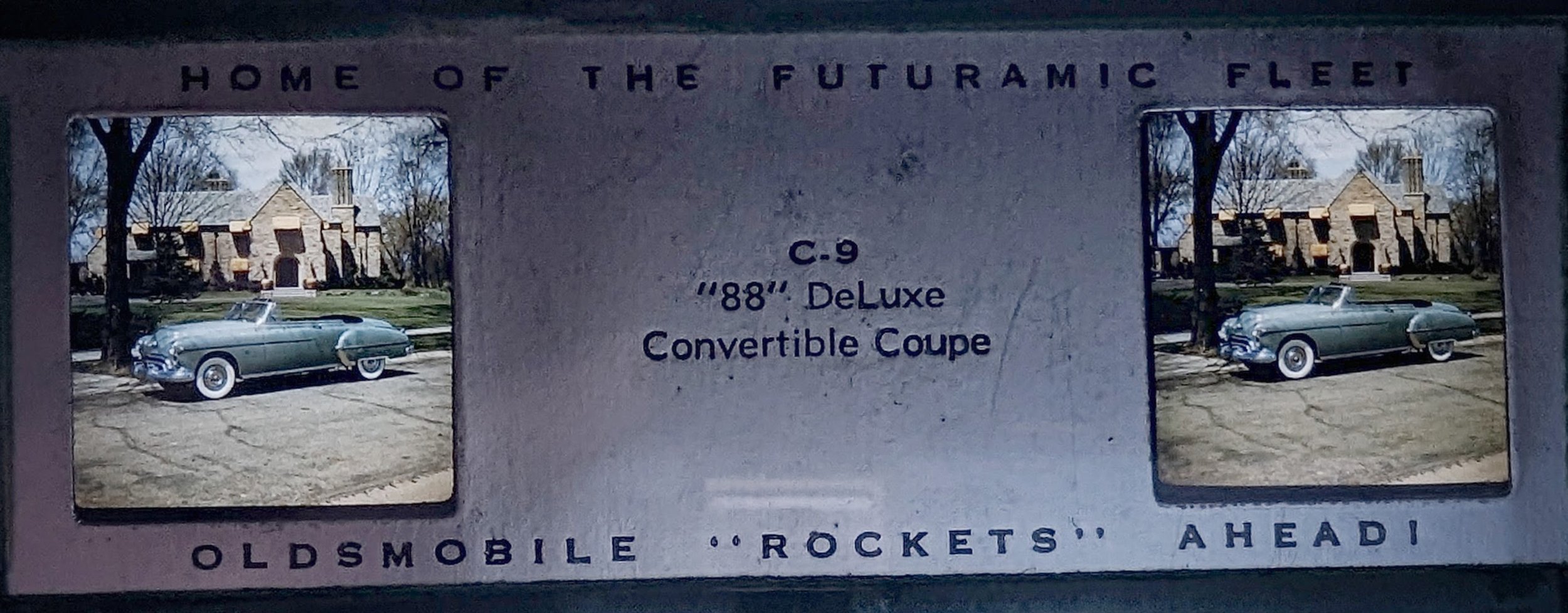

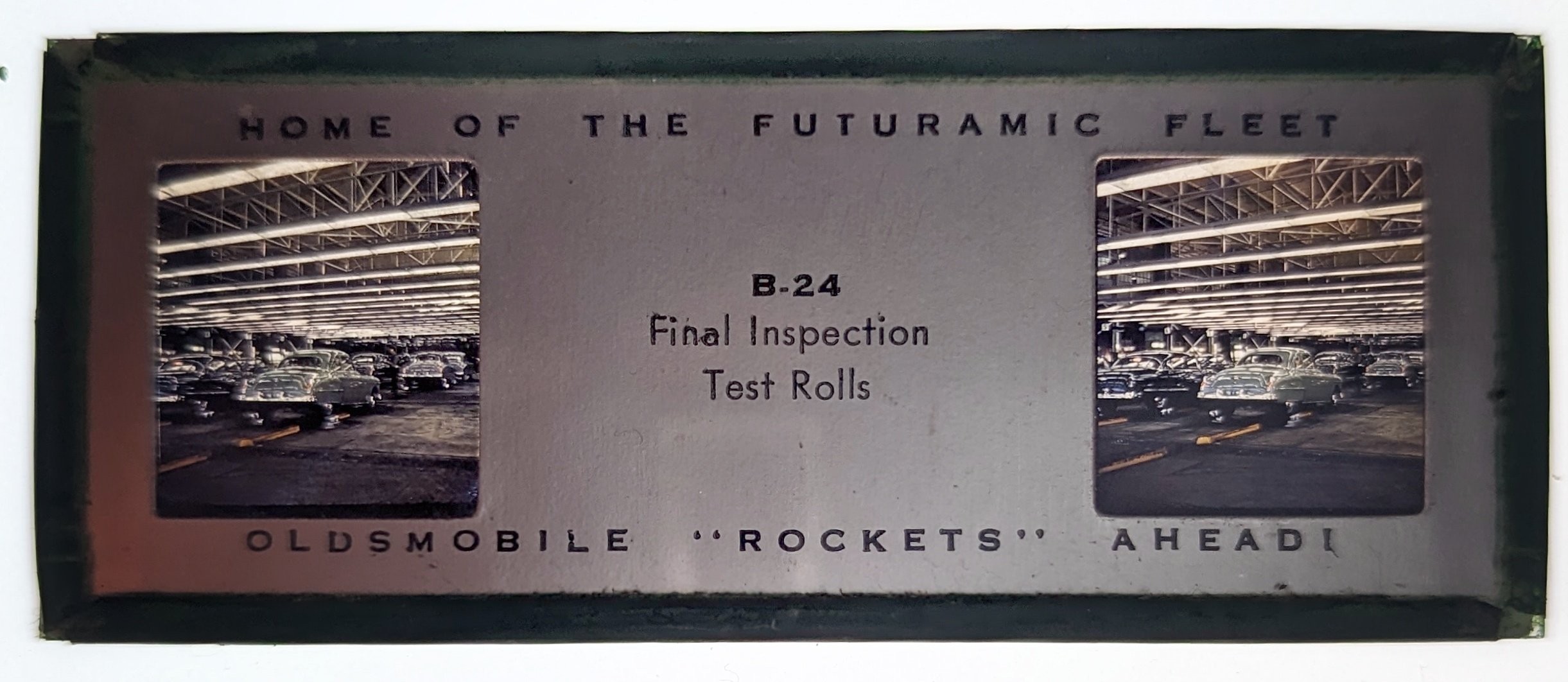
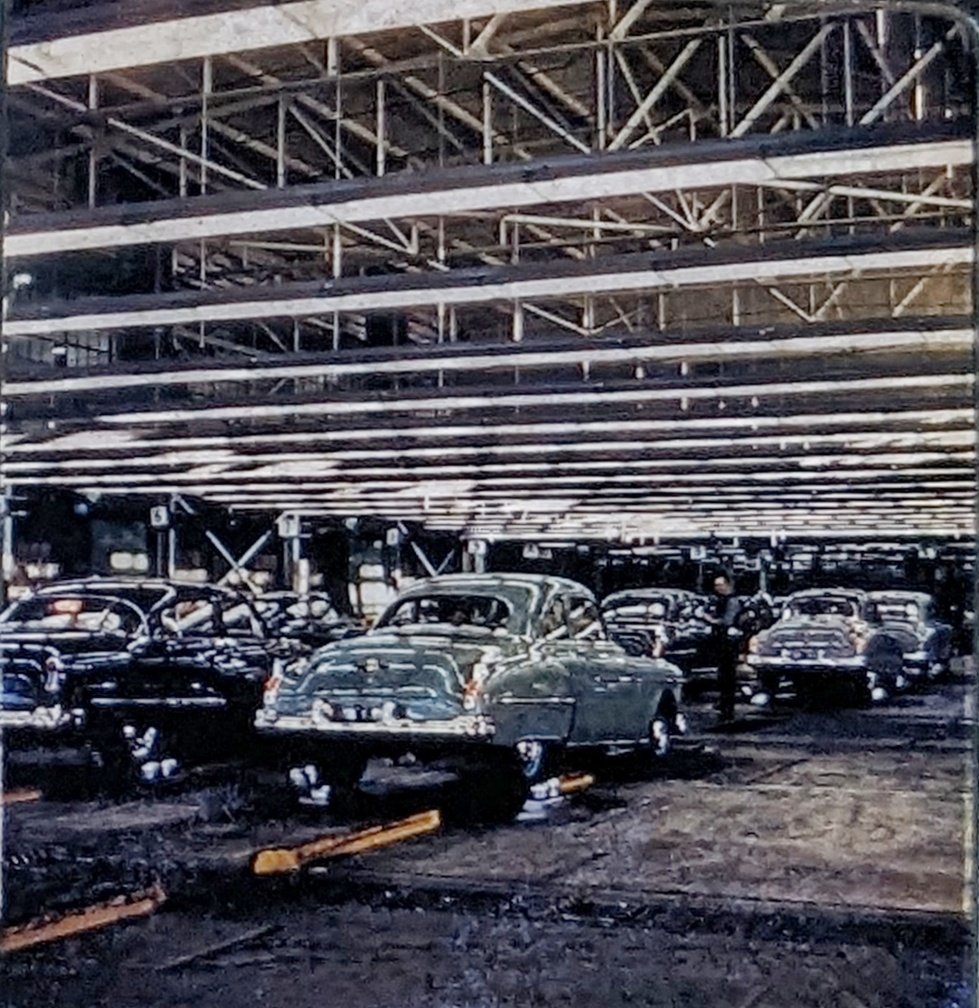
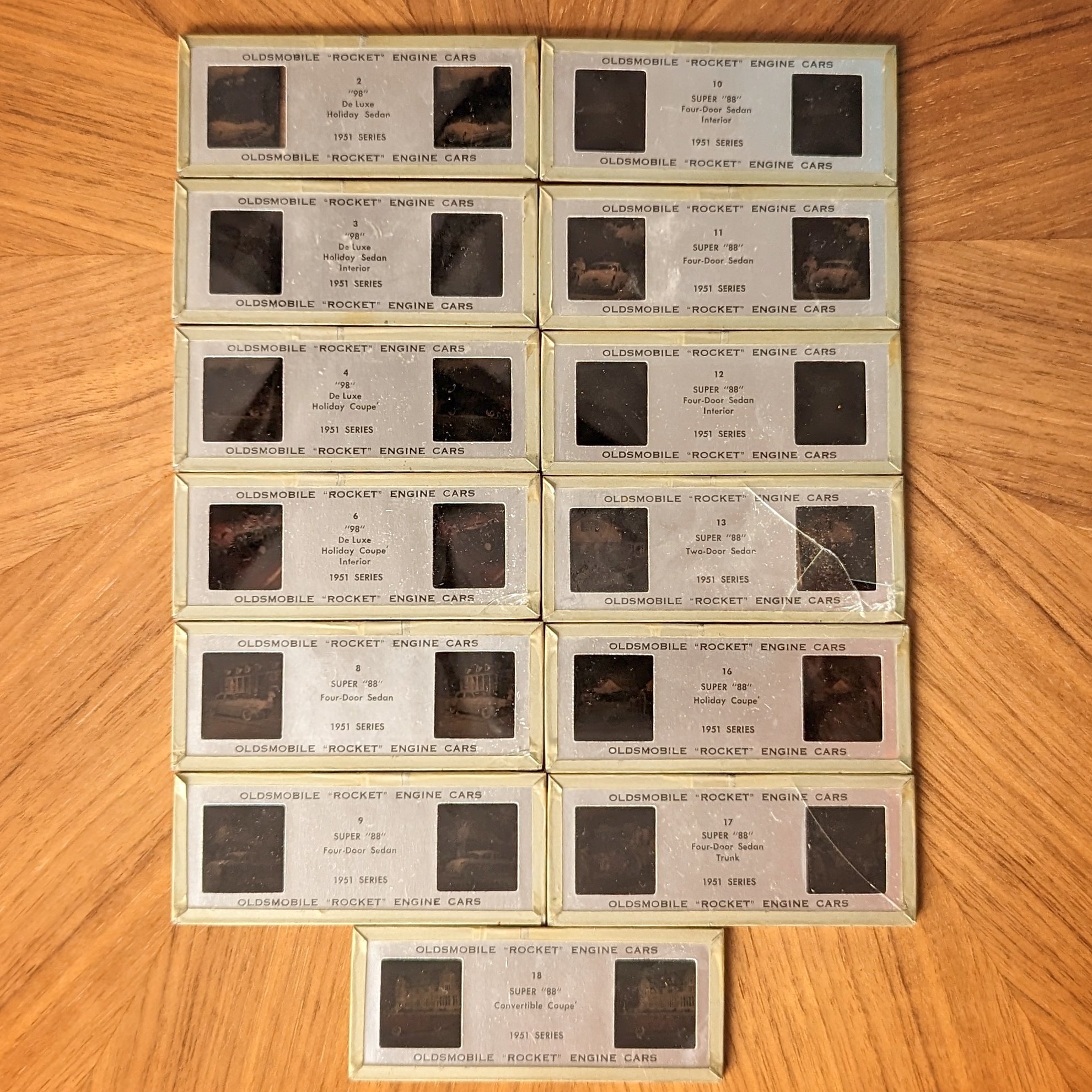

1952 Hudson | TDC
This set contains 3D slides of the 1952 Hudson Hornet, Pacemaker, Wasp, and Commodore. Similar to the Oldsmobile set above, this set of Realist-format slides comes in a handy briefcase along with a stereo viewer but this stereo viewer is the battery-powered TDC viewer. Inside the case, a printed sheet identifies each slide. The slides were produced by Pictures-Detroit, Inc.
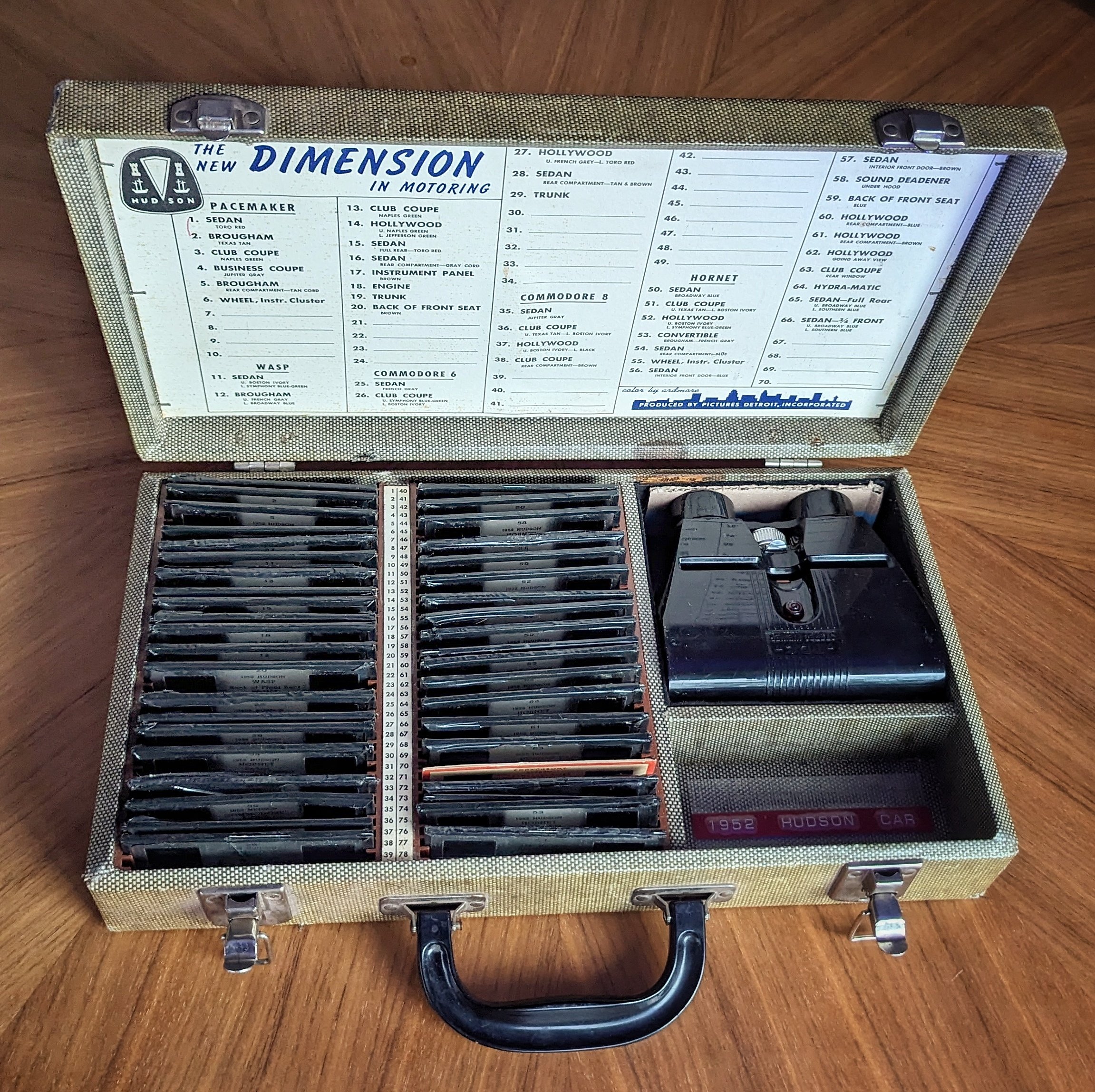

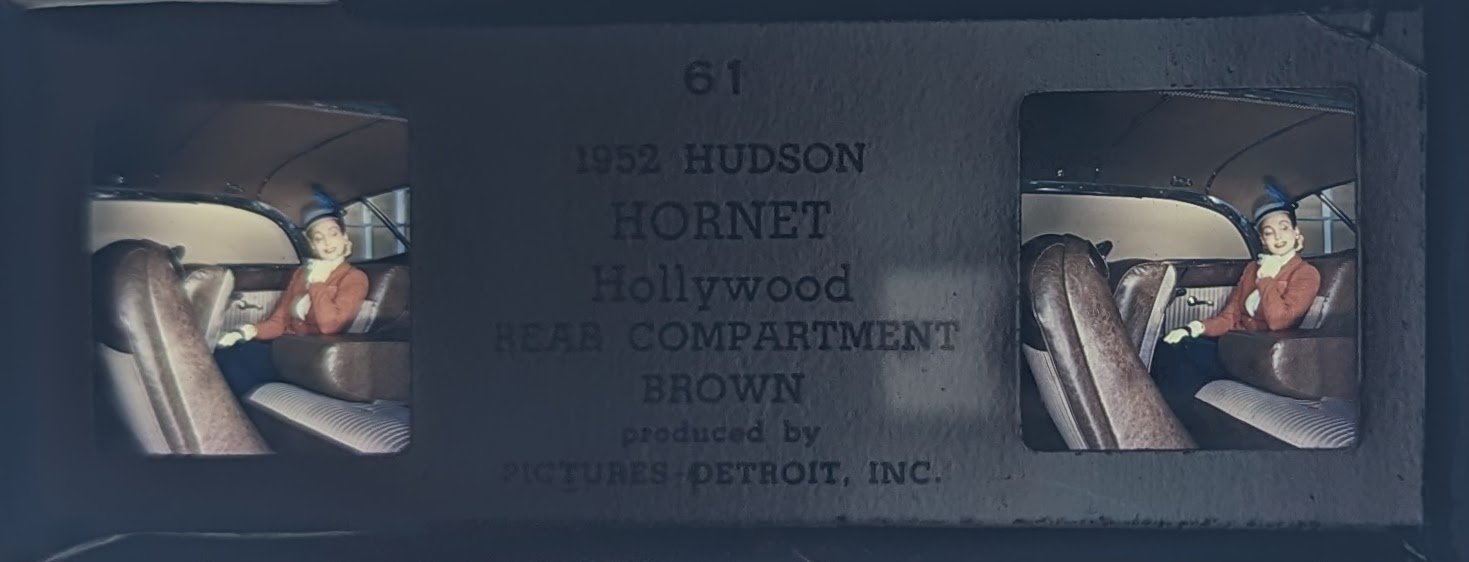
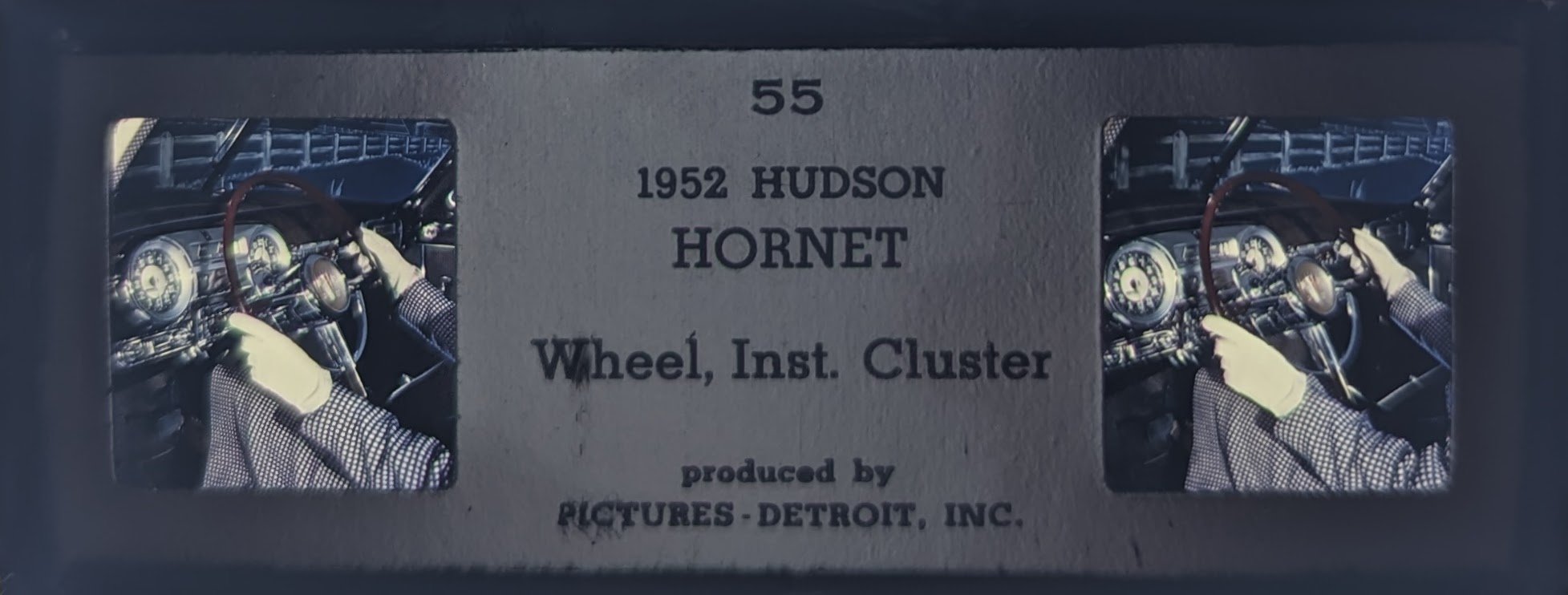
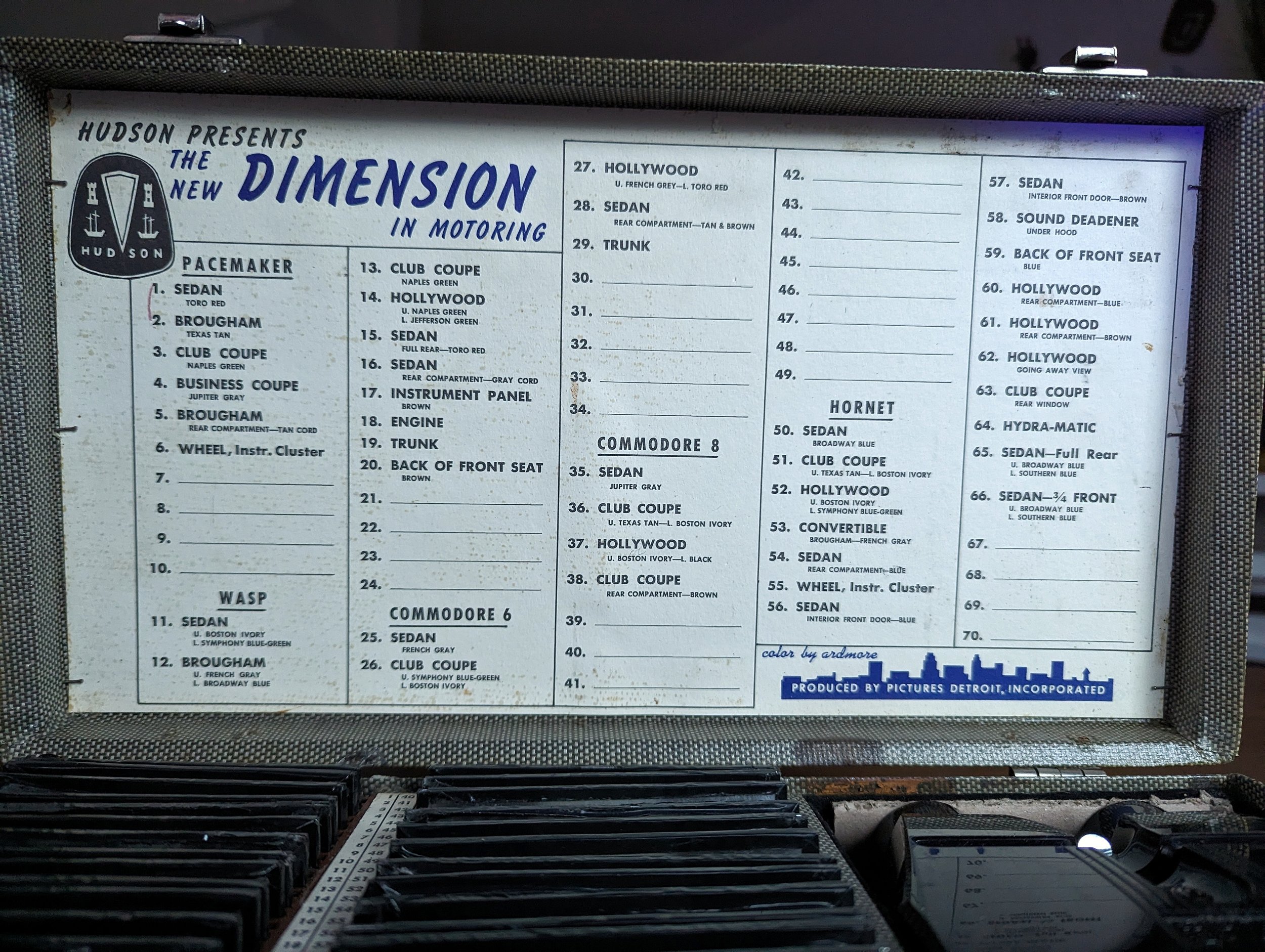
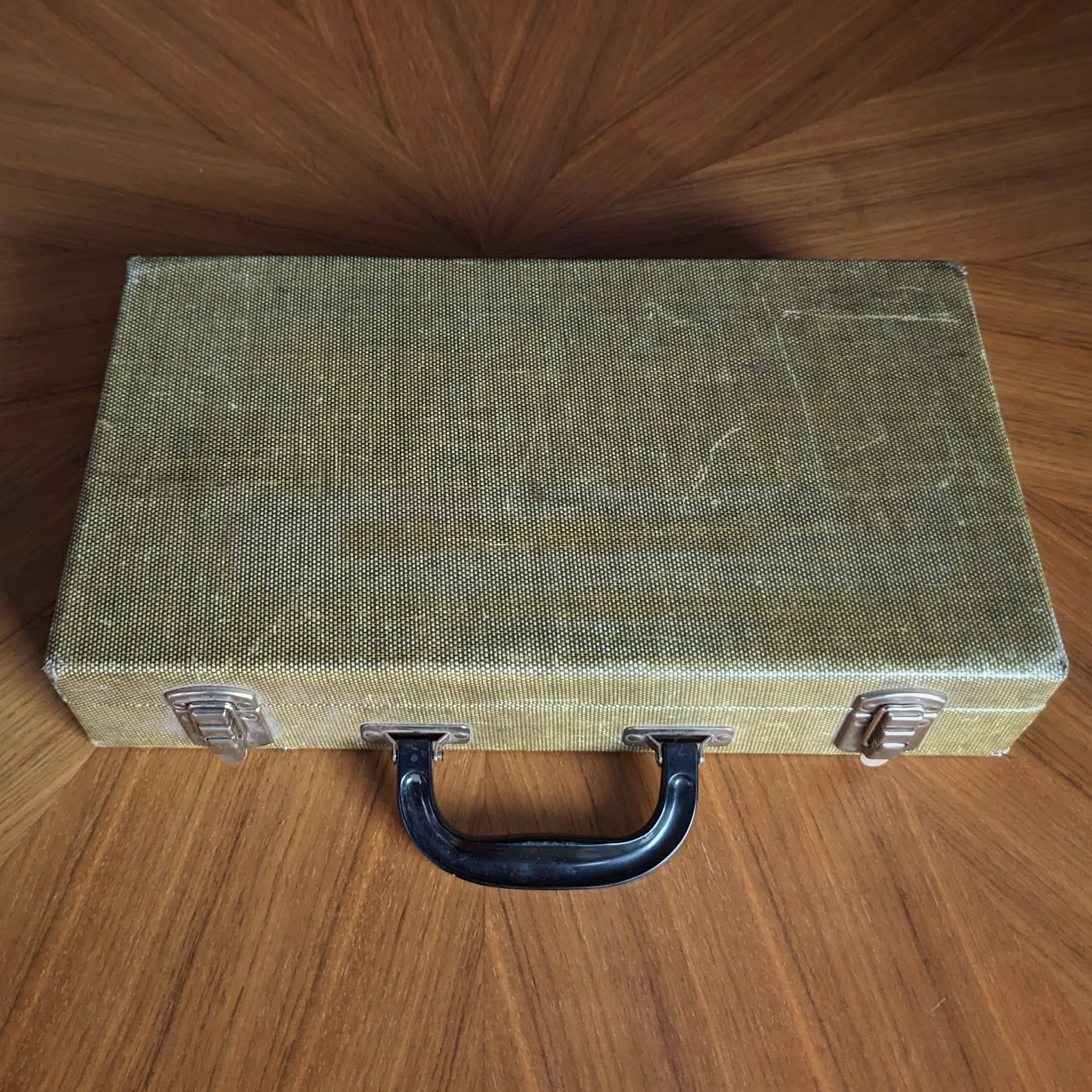
1950s Daimler Benz | Stereo-foto
This German Stereo-foto stereoscope contains 20 color stereoviews on a film roll and offers a fascinating glimpse into the making of Benz vehicles. The viewer is a standard-issue, unbranded Stereo-foto viewer from the 1950s. Some of the colors on the film are still bright. Stereo-foto viewers provide great 3D viewing and don’t come up for sale often. If they do, they’re usually in Germany and it’s rare to find one with cars. For more info and photos, visit our Daimler Benz Stereo-foto page.
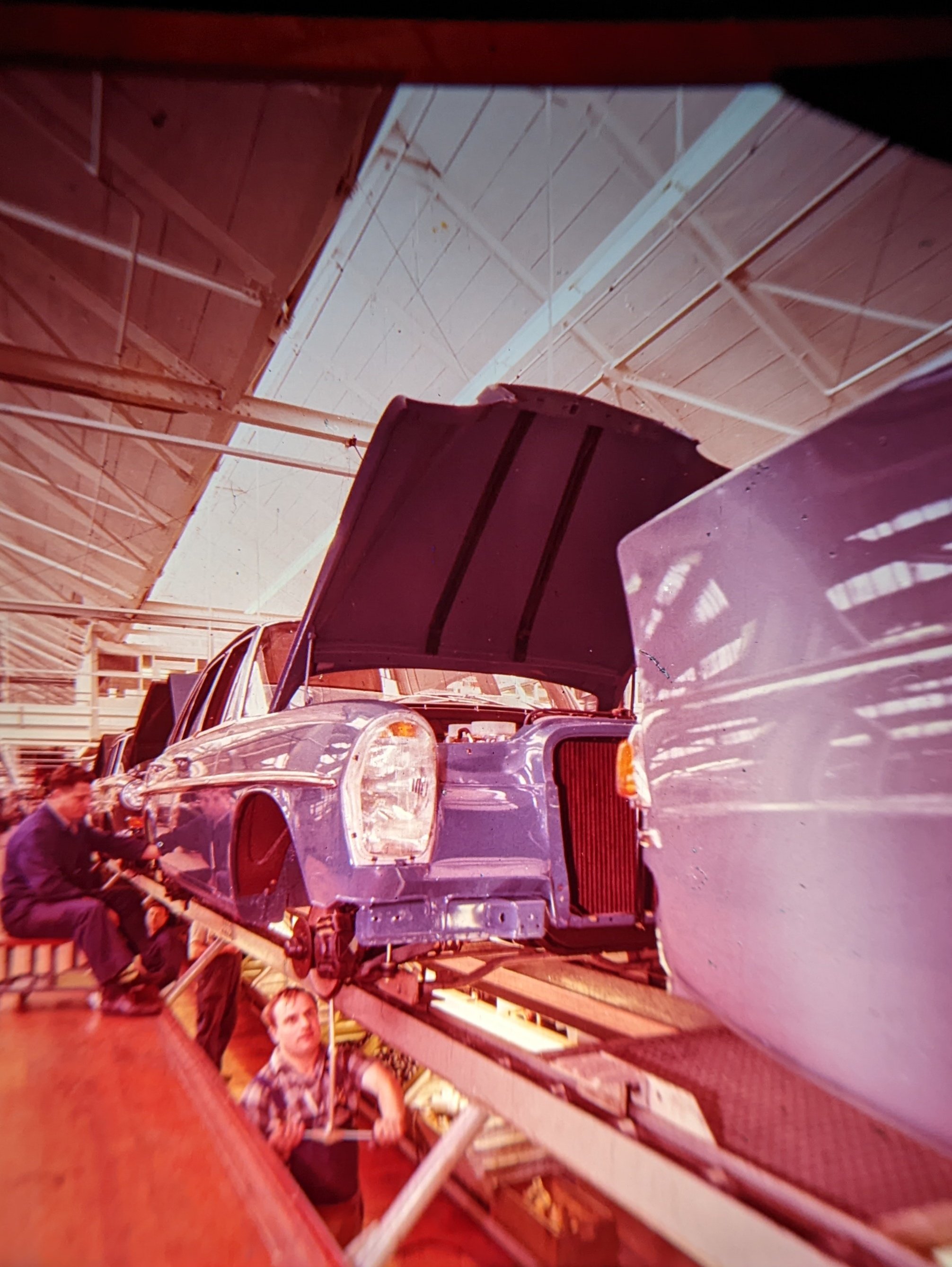

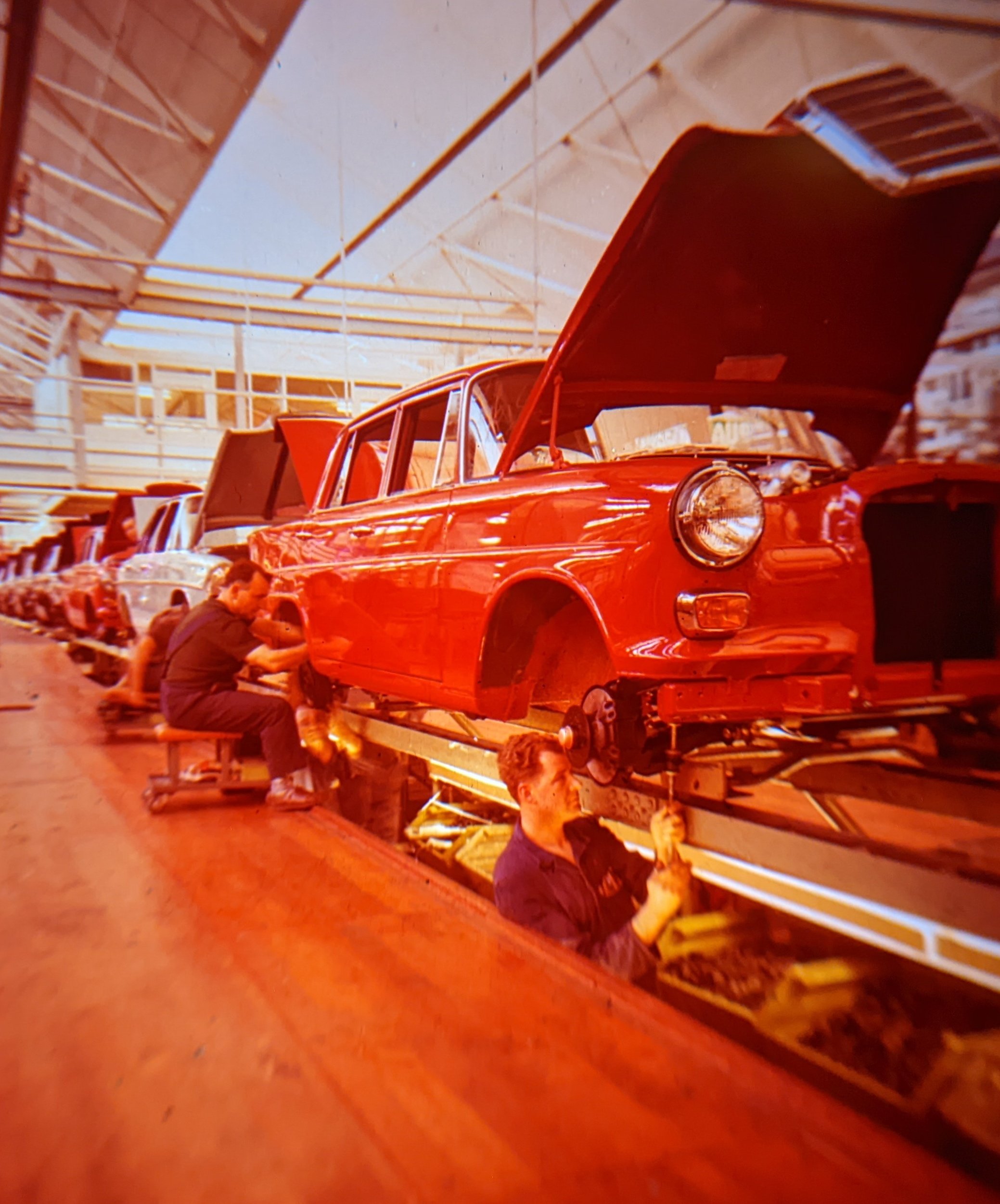


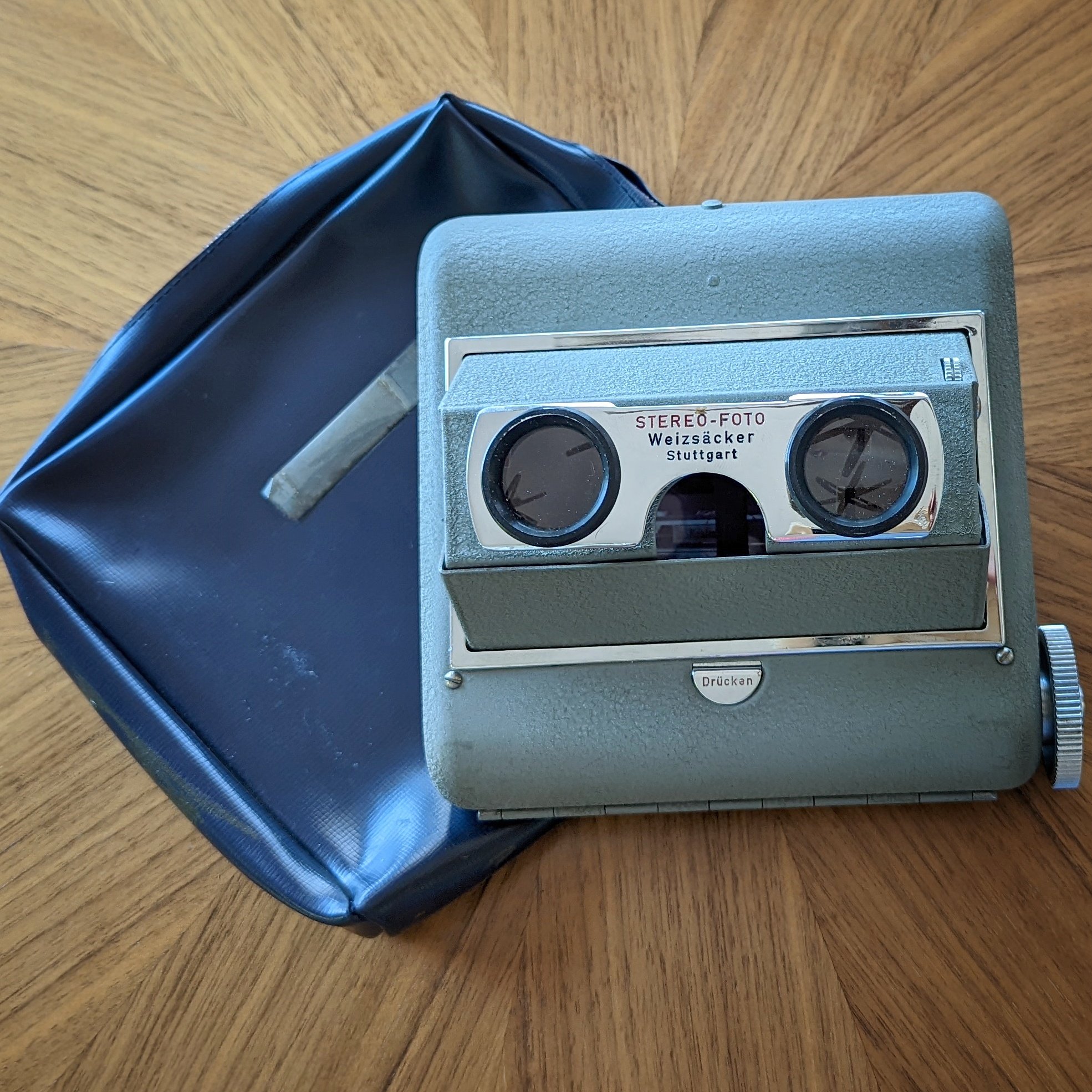
1950s Porsche / Hahn Motorfahrzeuge | Stereo-foto
This rare Stereo-foto film roll shows Porsche vehicles in vivid color. Of the 15+ Stereo-foto viewers in our collection, only a very few are branded. This is one of them, as shown in the last photo. We also have an unbranded one. For more info and photos , visit our Porsche Stereo-foto page.

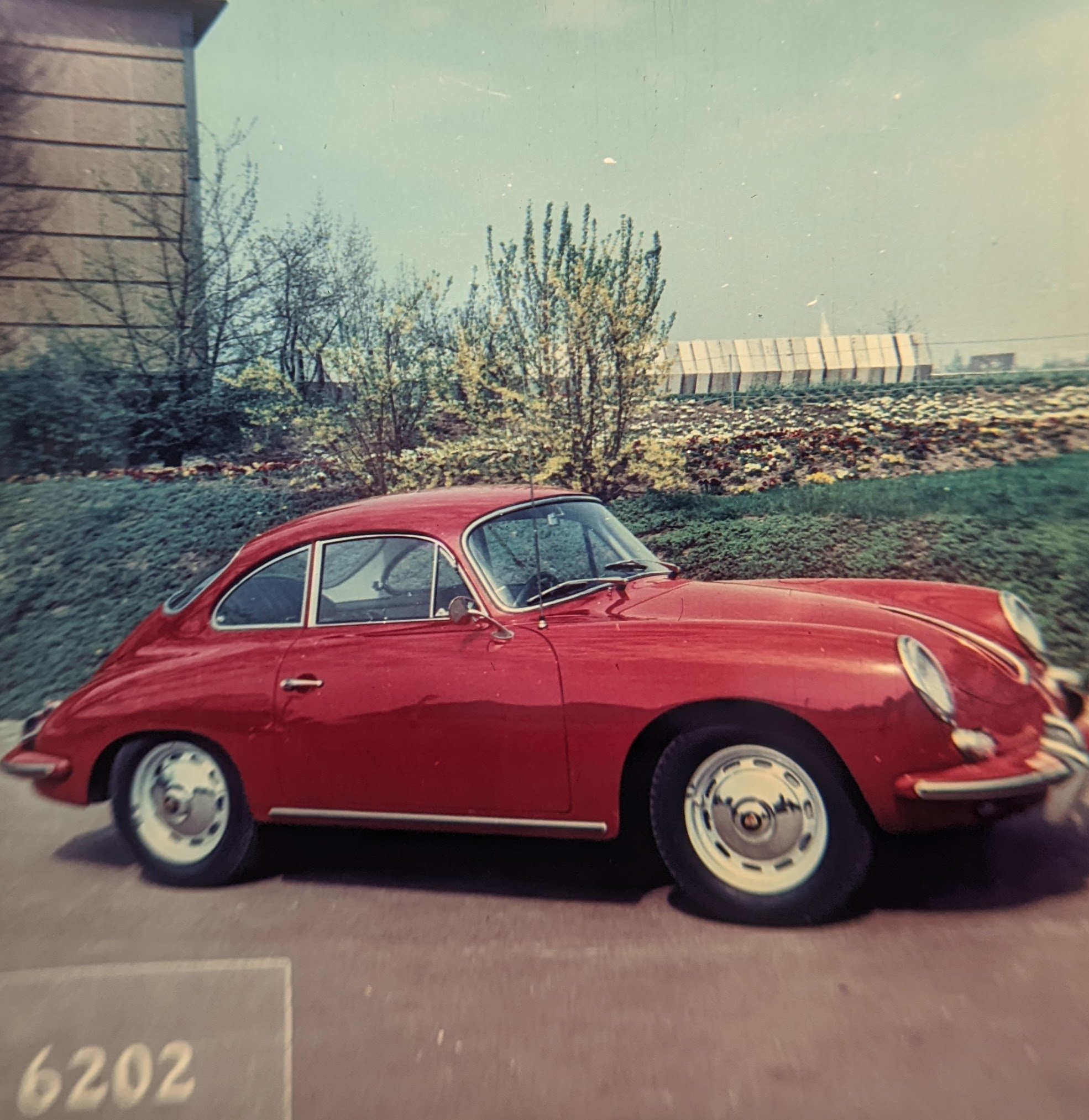
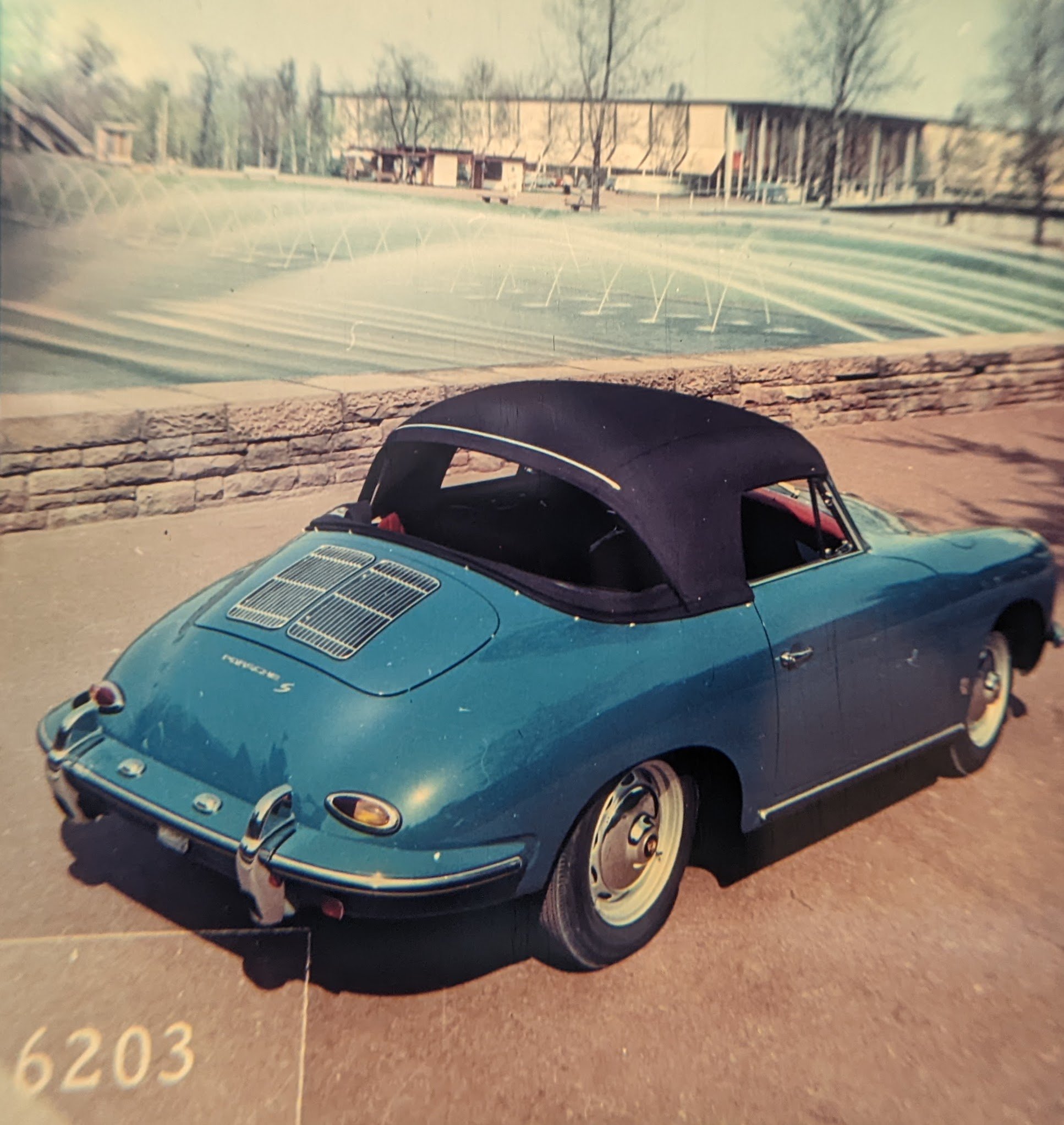
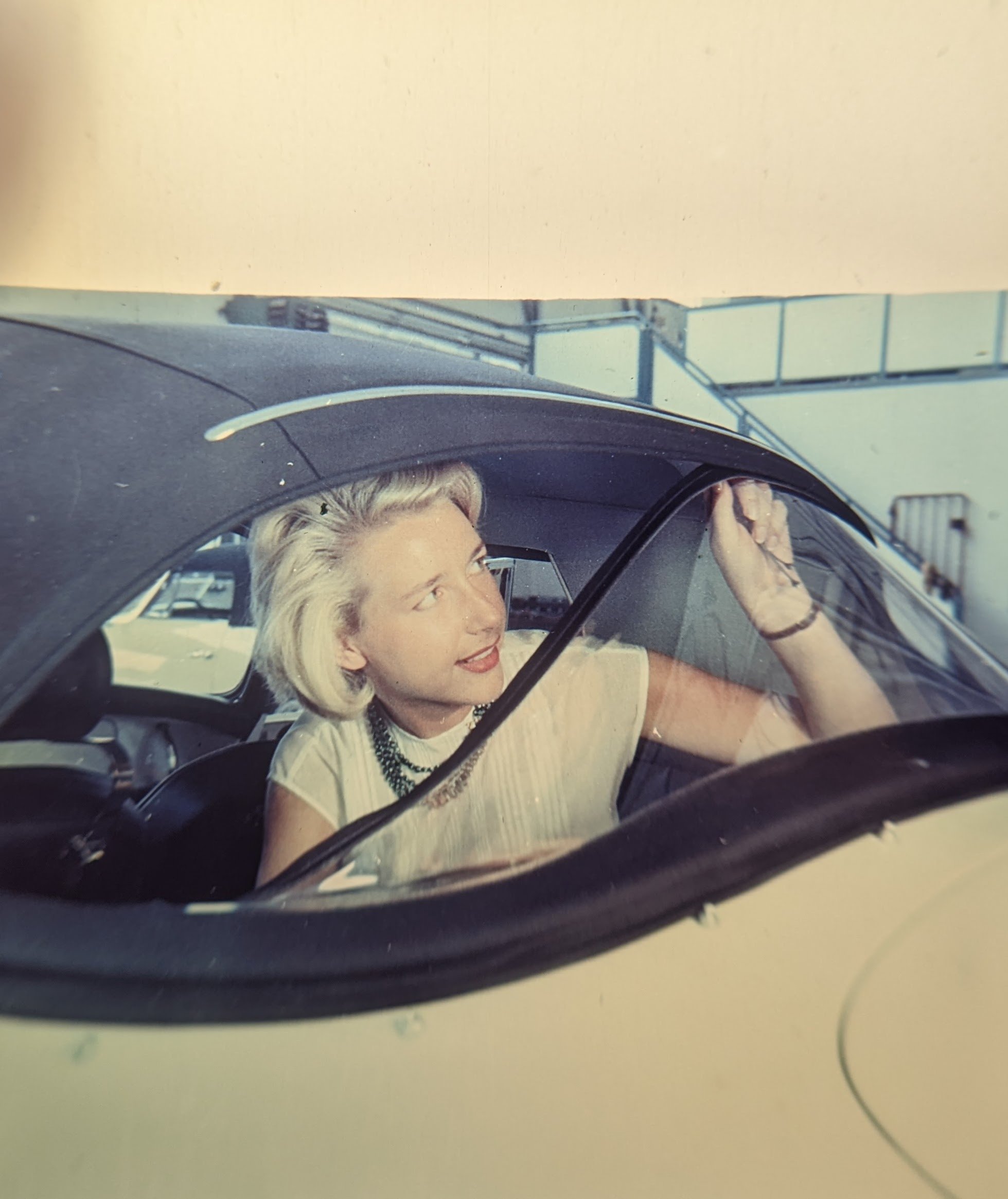
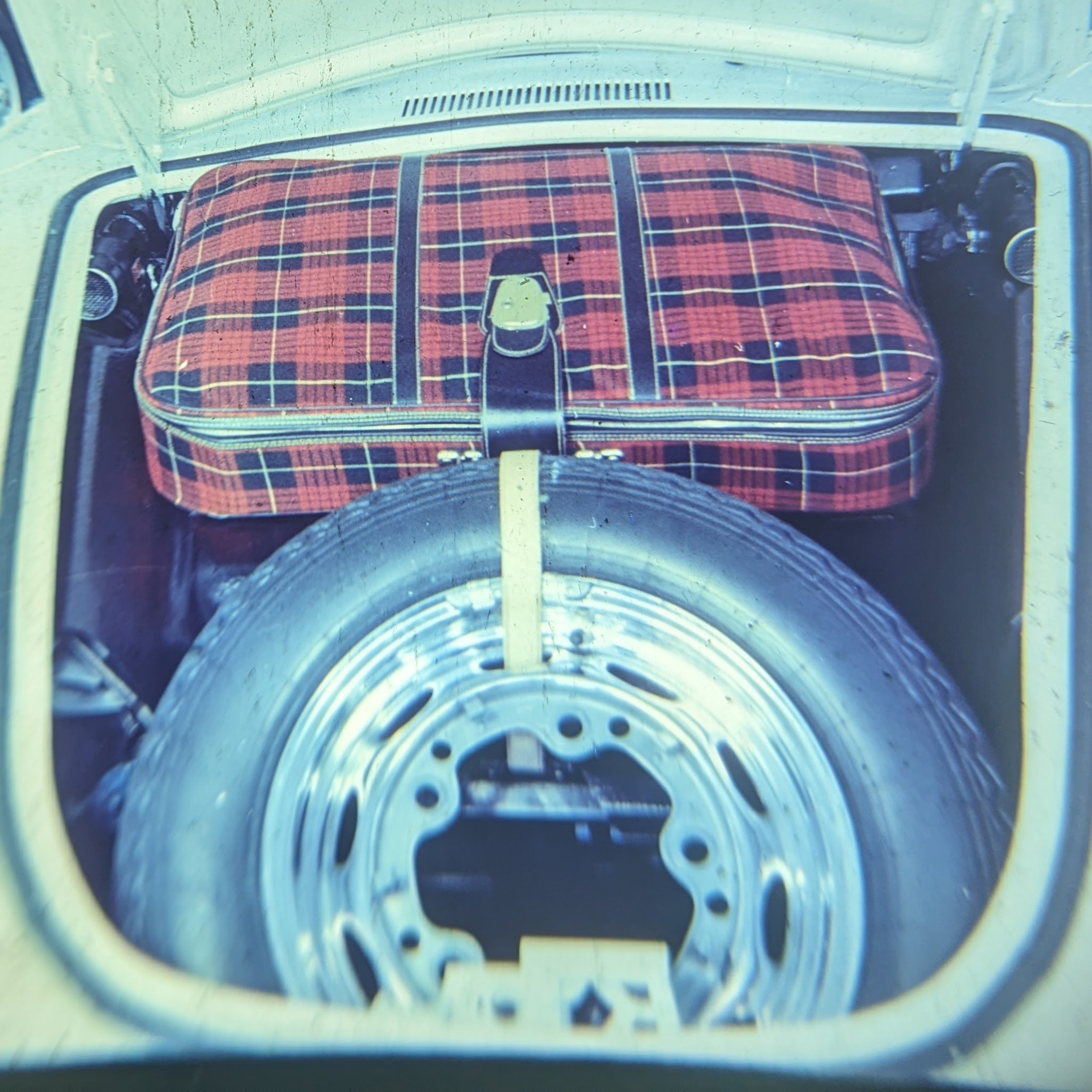

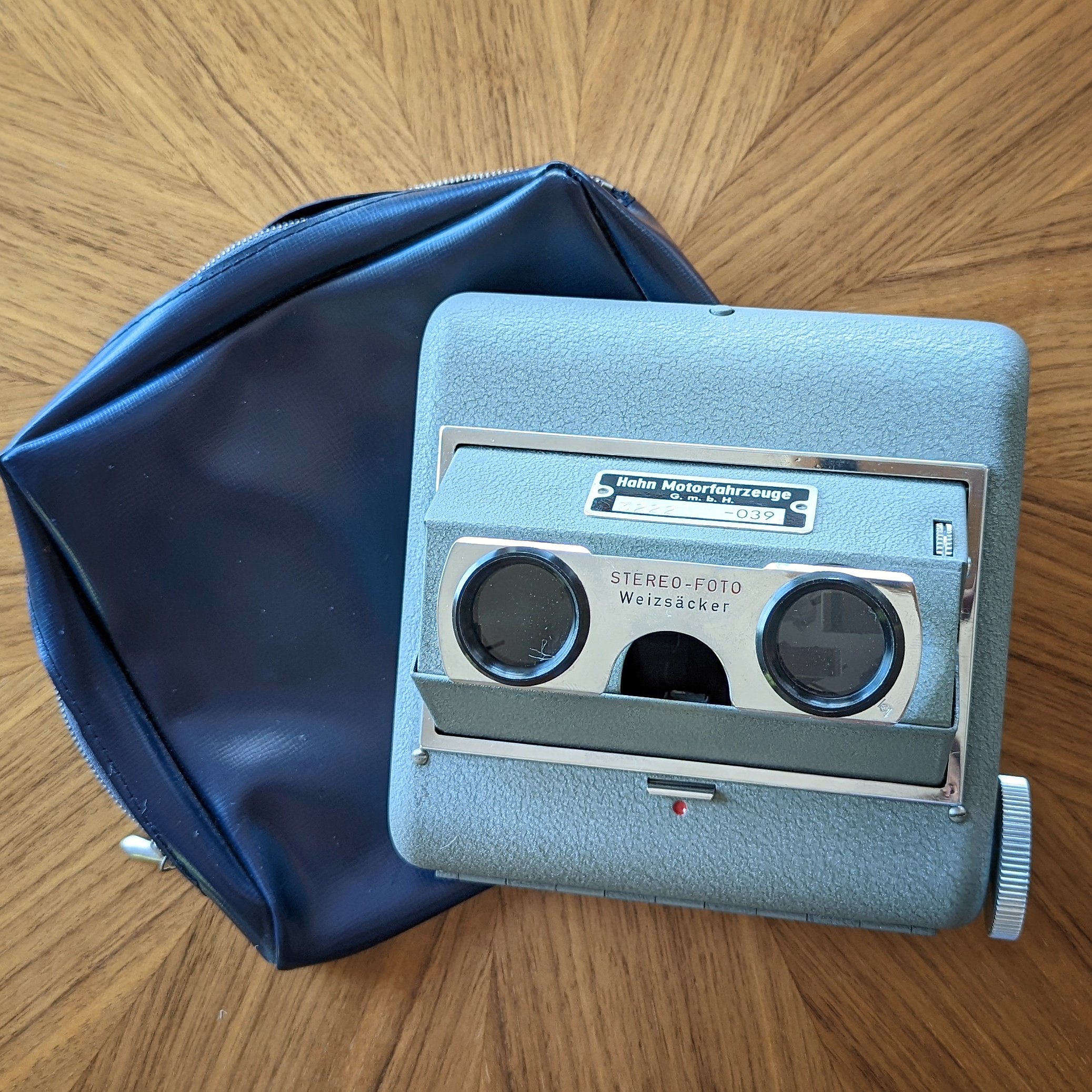
1950s Volkswagen | Stereo-foto
Another rare auto film found in a German Stereo-foto viewer shows the inside operation of a Volkswagen factory in 3D. This particular stereoview roll is in black & white. For more info and photos, visit our Volkswagen Stereo-foto page.
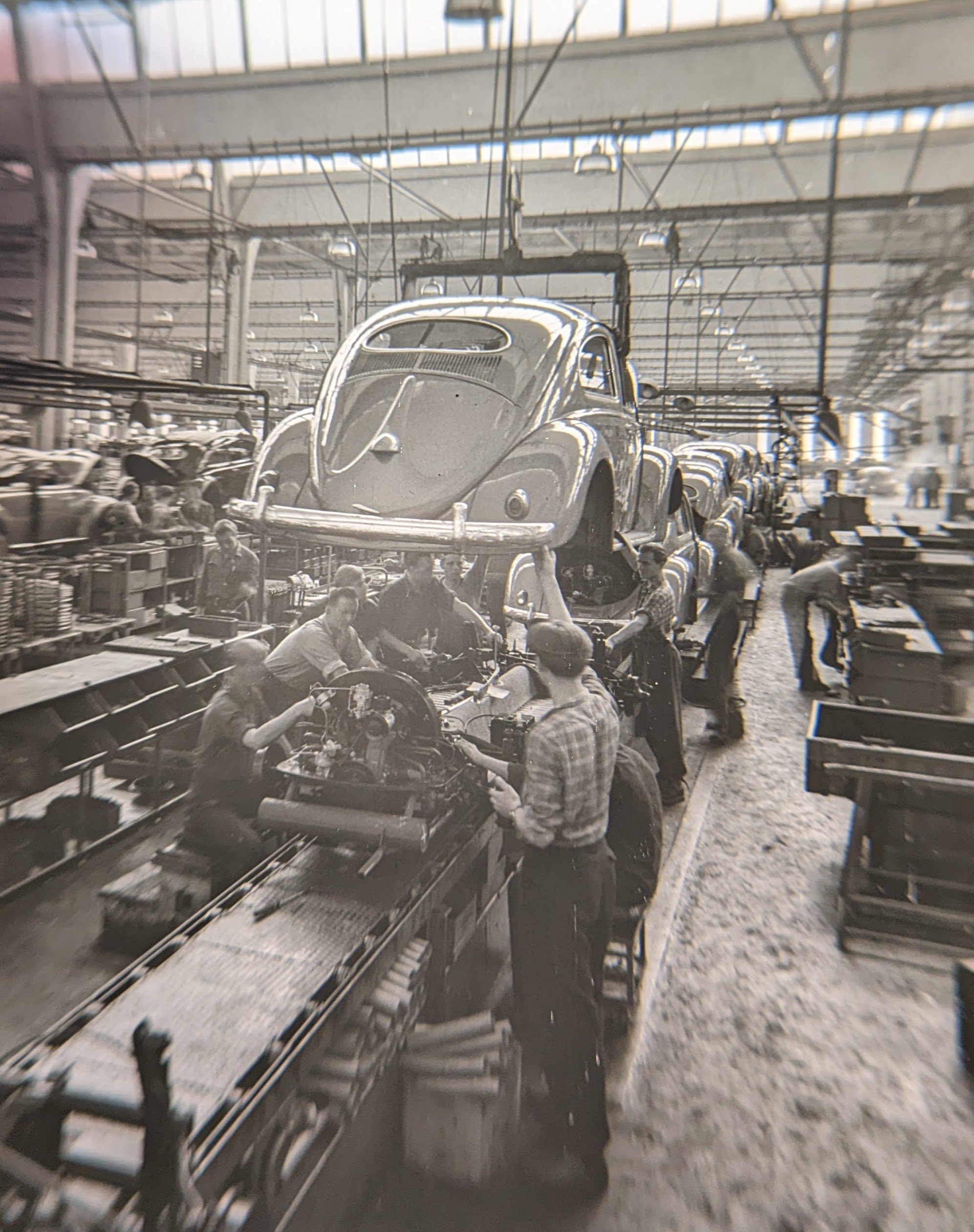
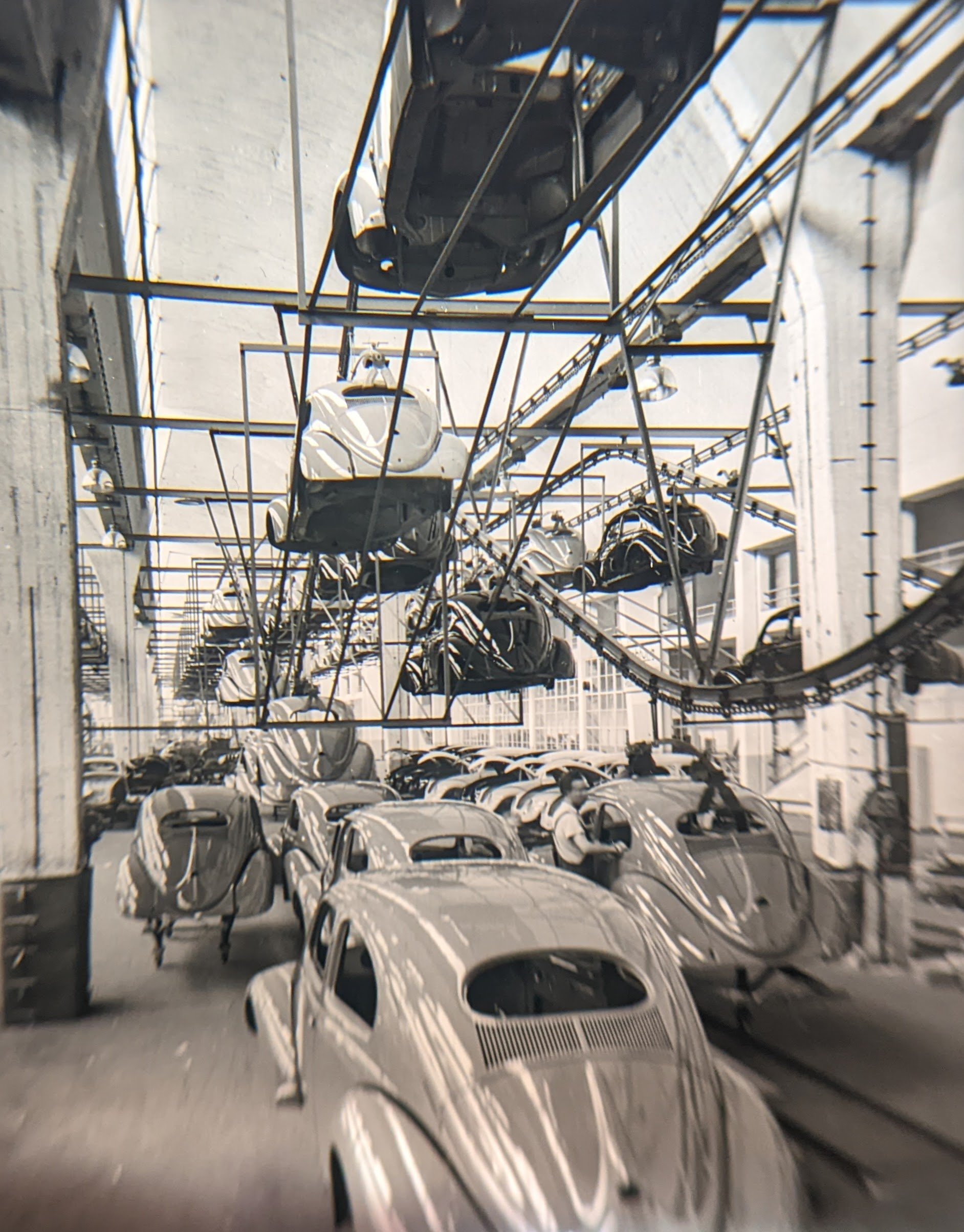
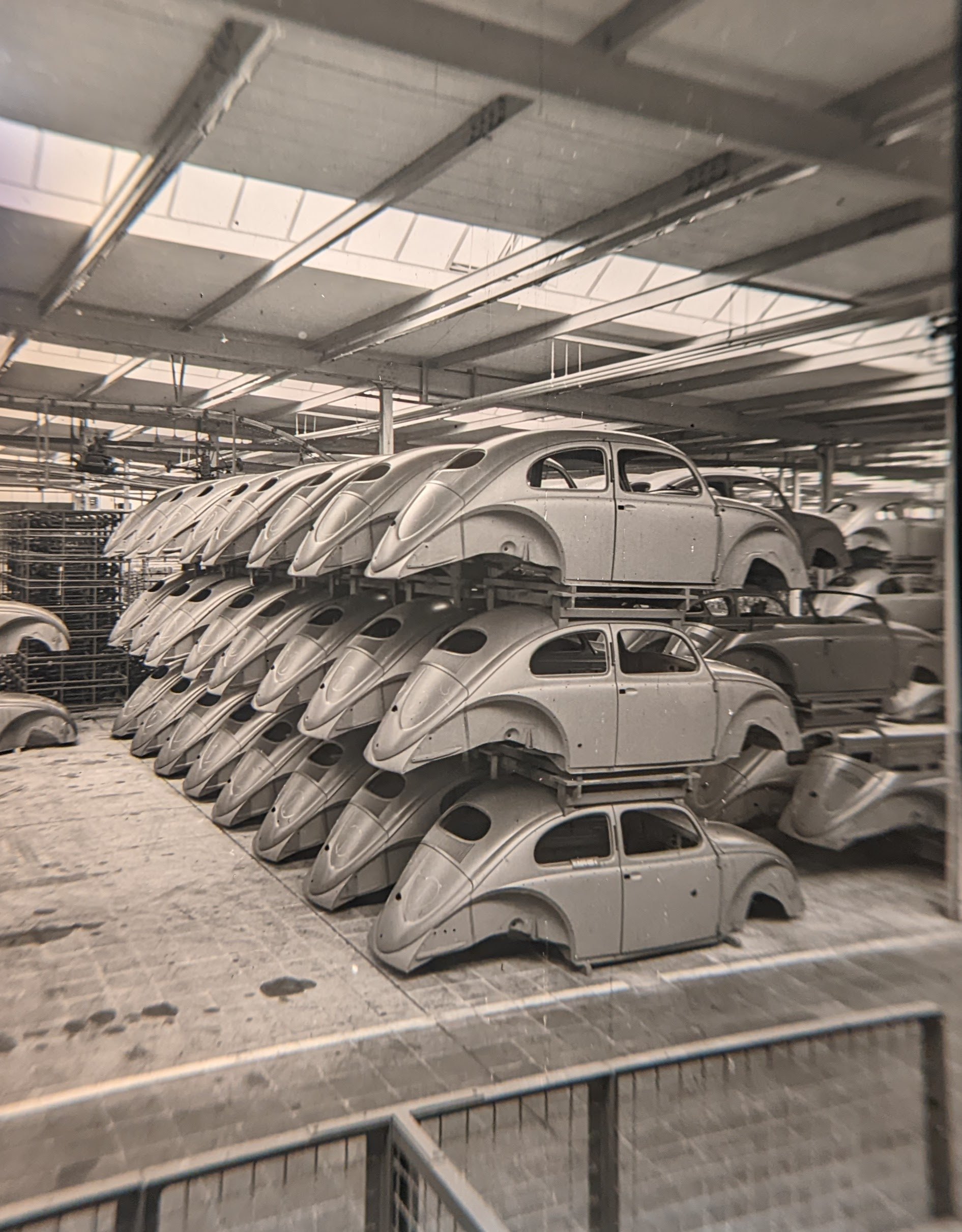
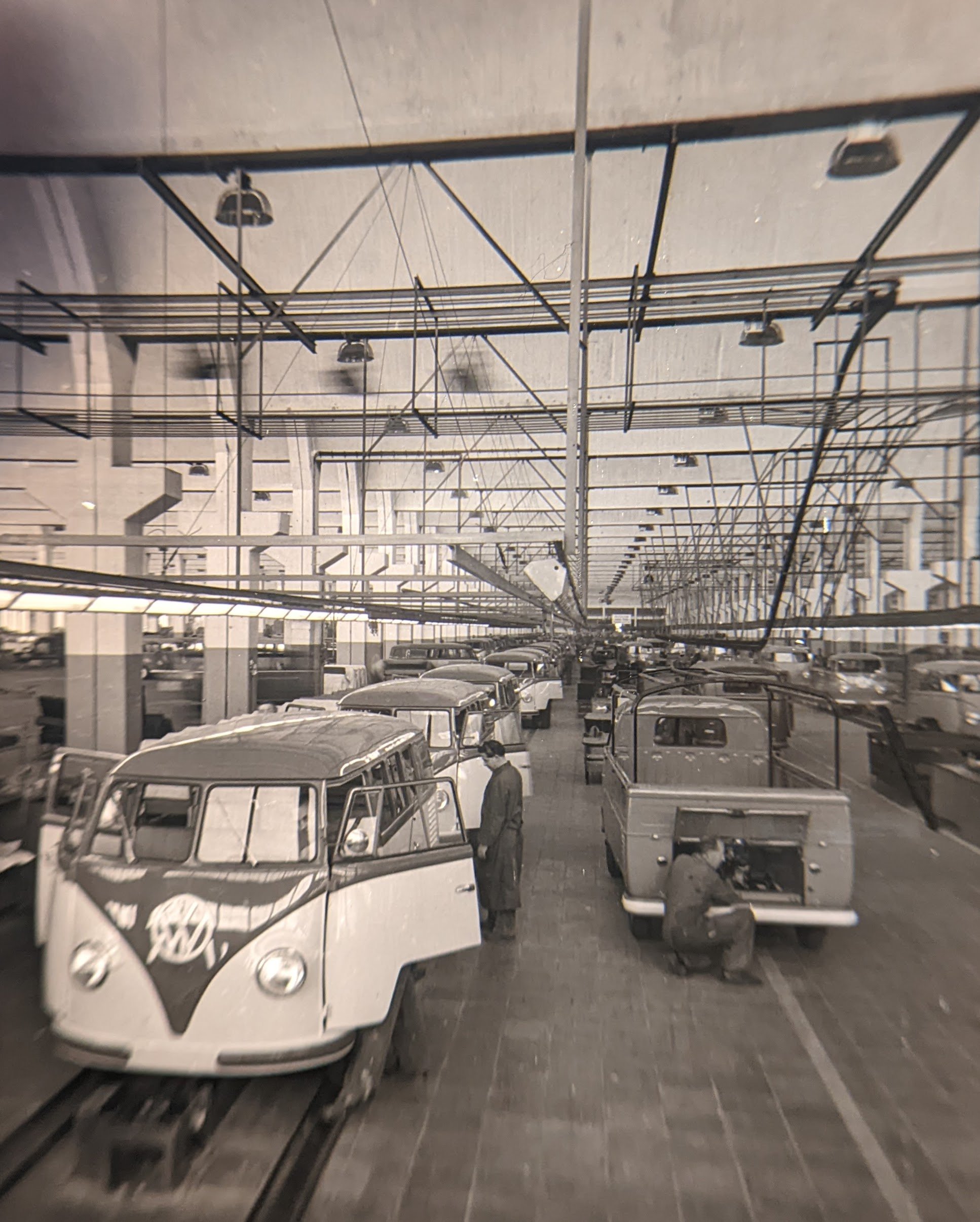
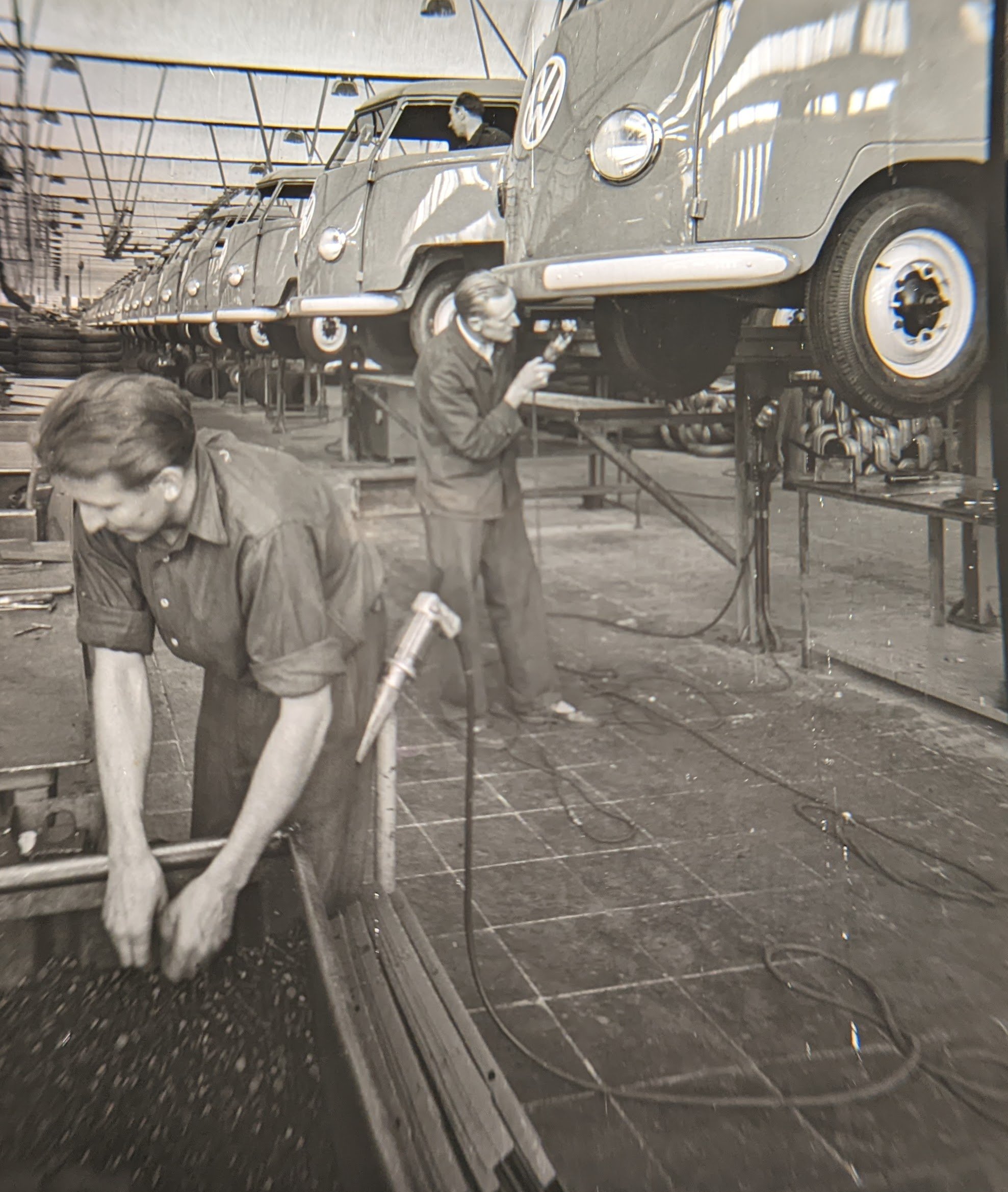
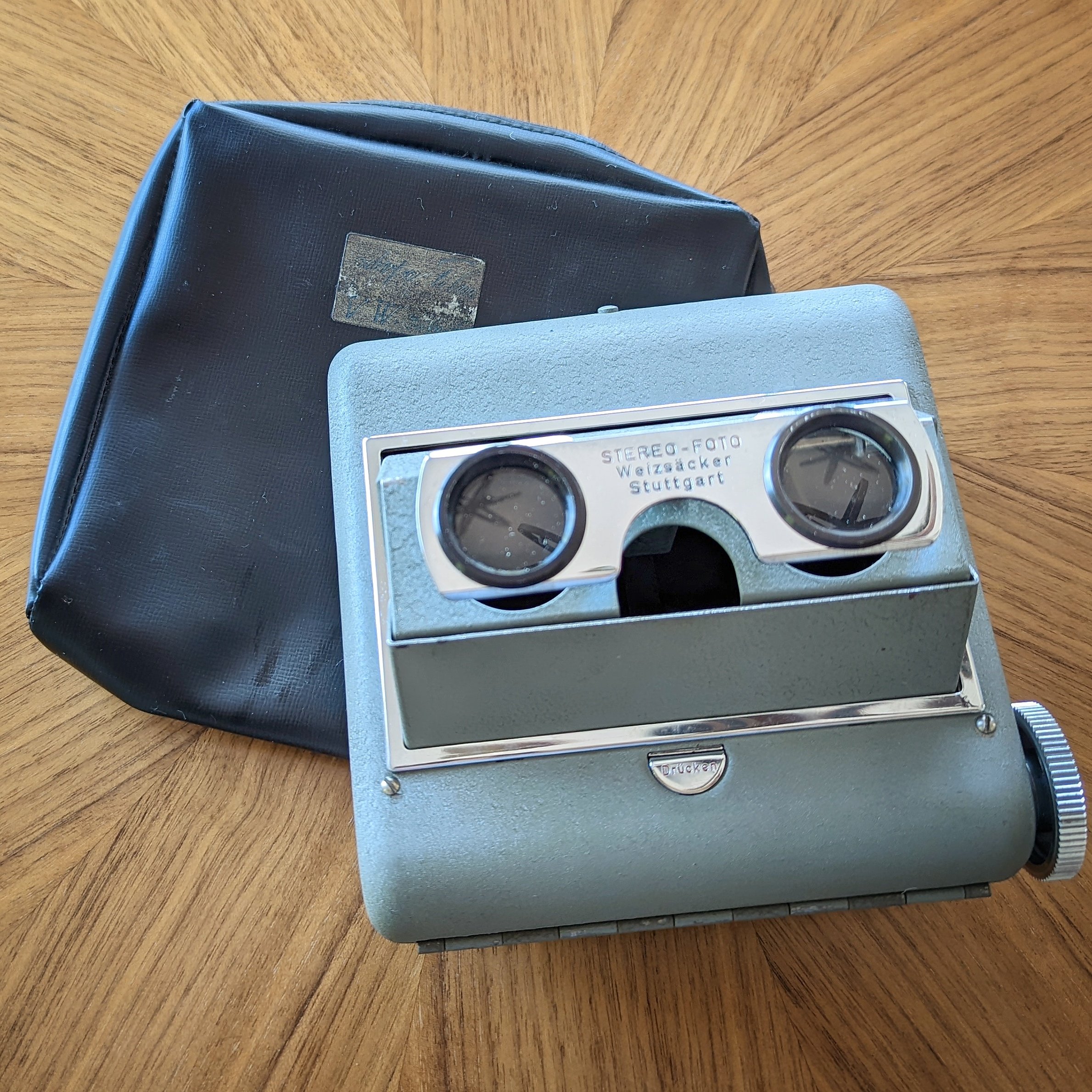
1954-57 GM Chevrolet | Multi-Vue
This 1950s battery-operated stereo viewer is branded GM Photographic and we’ve only seen it used to advertise GM’s Pontiac and Chevrolet lines. The Pontiac set (which we don’t have) comes in a brown leather case and this Chevrolet set comes in a black case. For 1954, we have the Chevrolet car model, color selector, car interior trim selector, and car accessory selector slides. For 1957, we have the Chevrolet car model and color selector slides and index card.

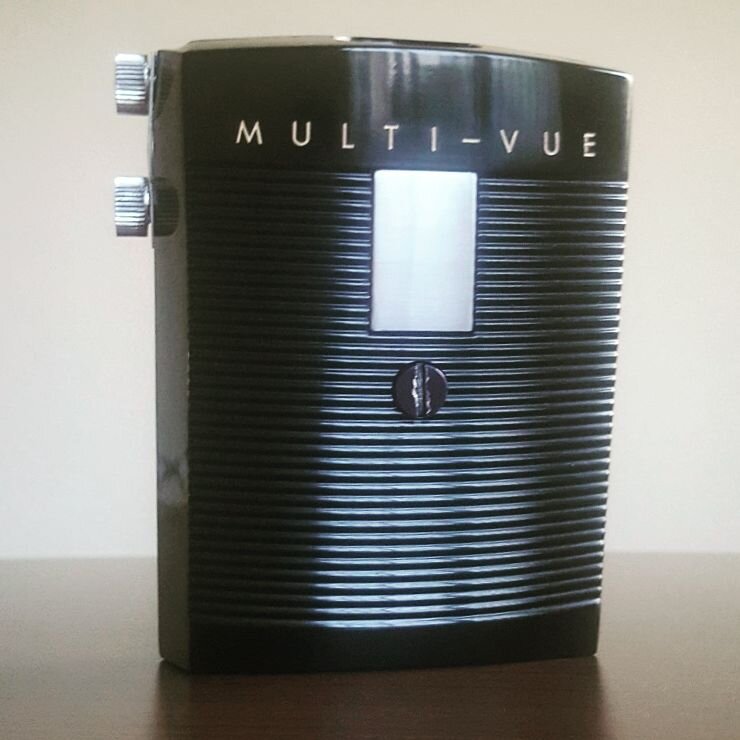

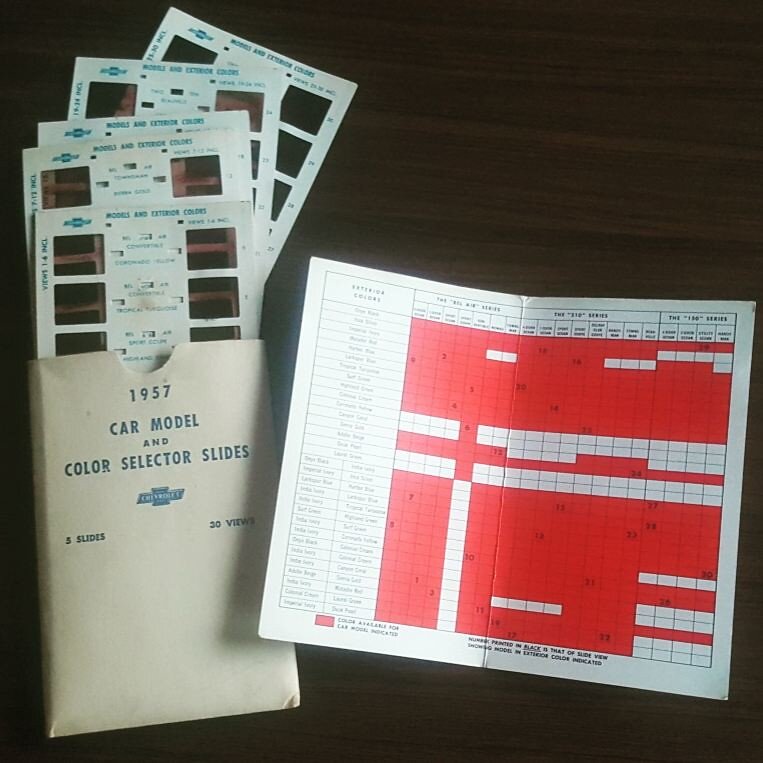
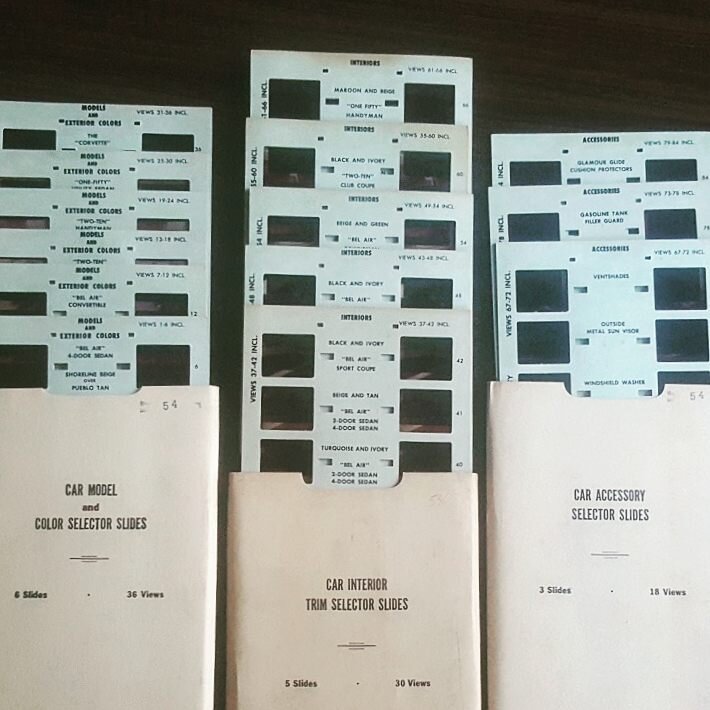
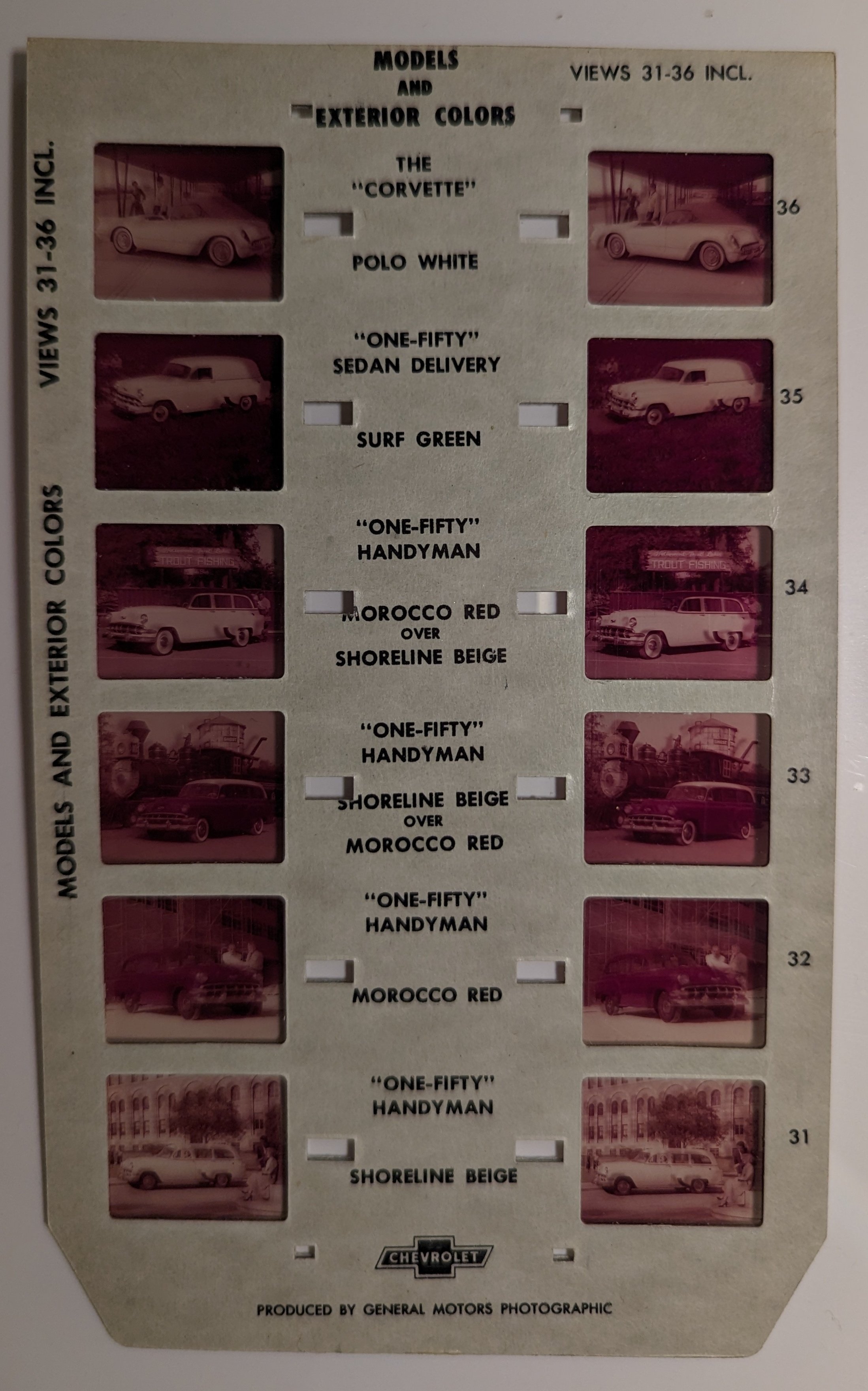
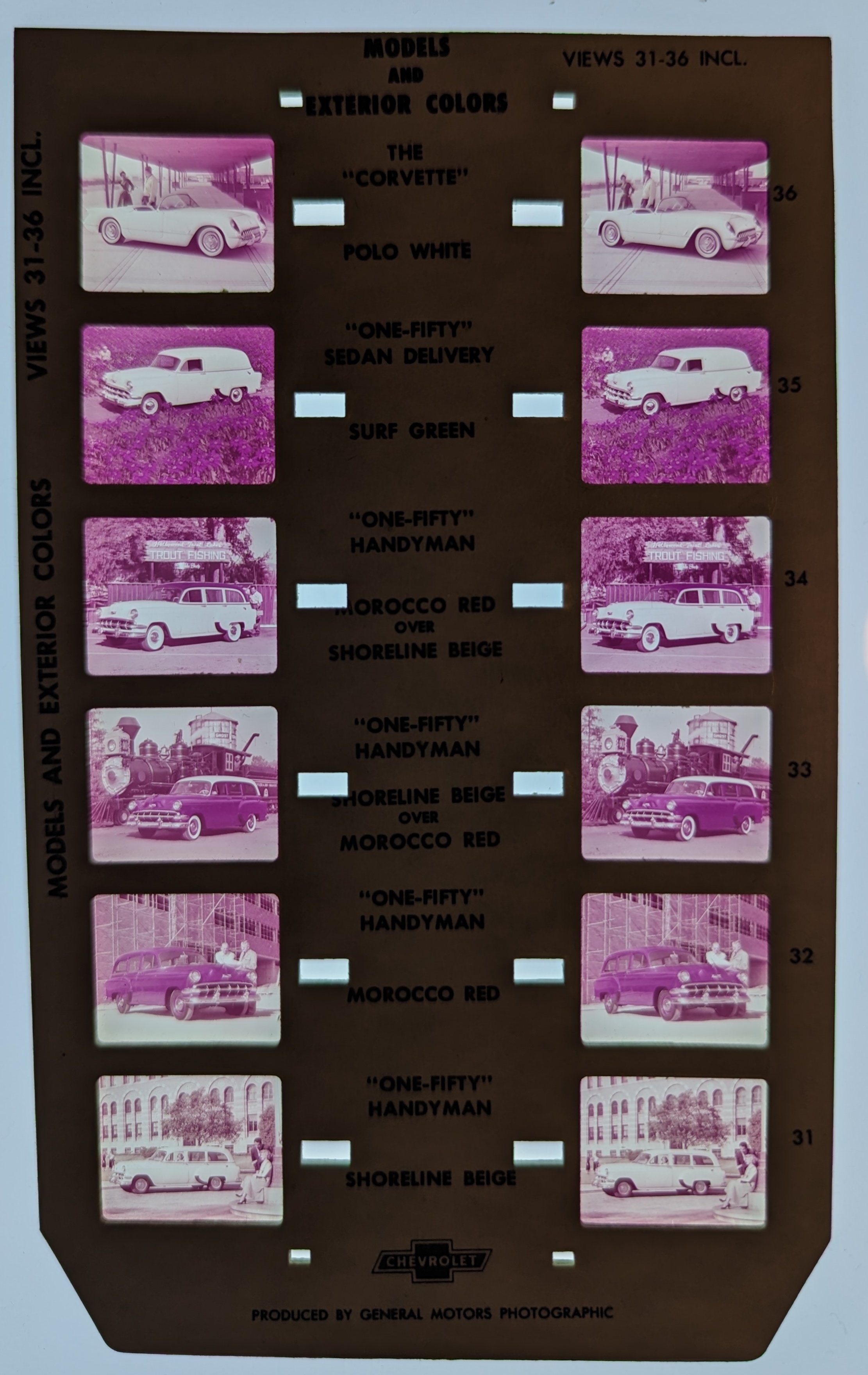

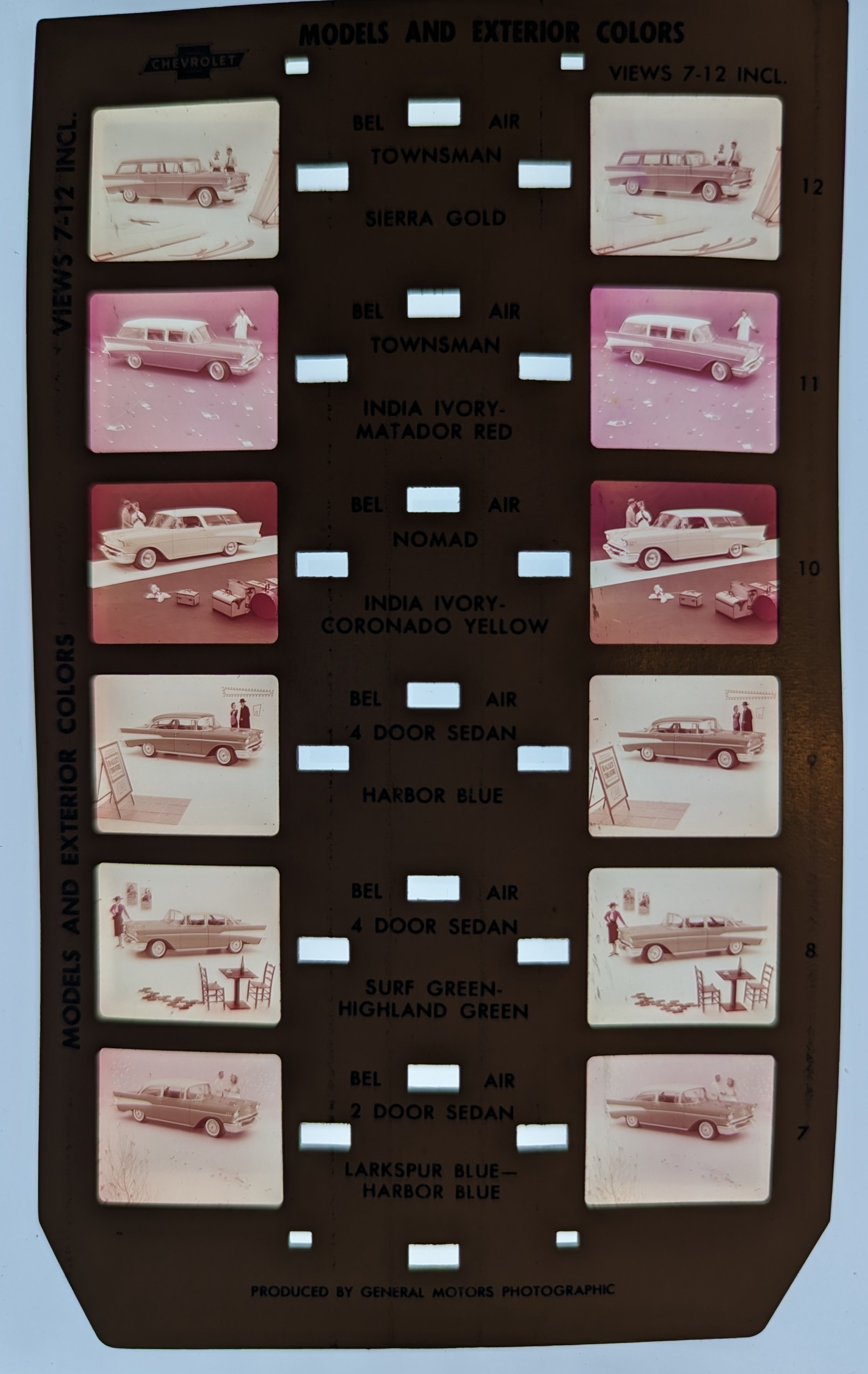
1956 De Soto Motor Corp | Taylor Merchant
This set only came with 2 stereo slides showing off the accessories and fins of a 1956 De Soto vehicle. The only thing branded in this set is the vinyl case. The slides are unmarked and the cardboard Taylor Merchant viewer is standard-issue. See our Taylor Merchant page to see more of these advertising sets.


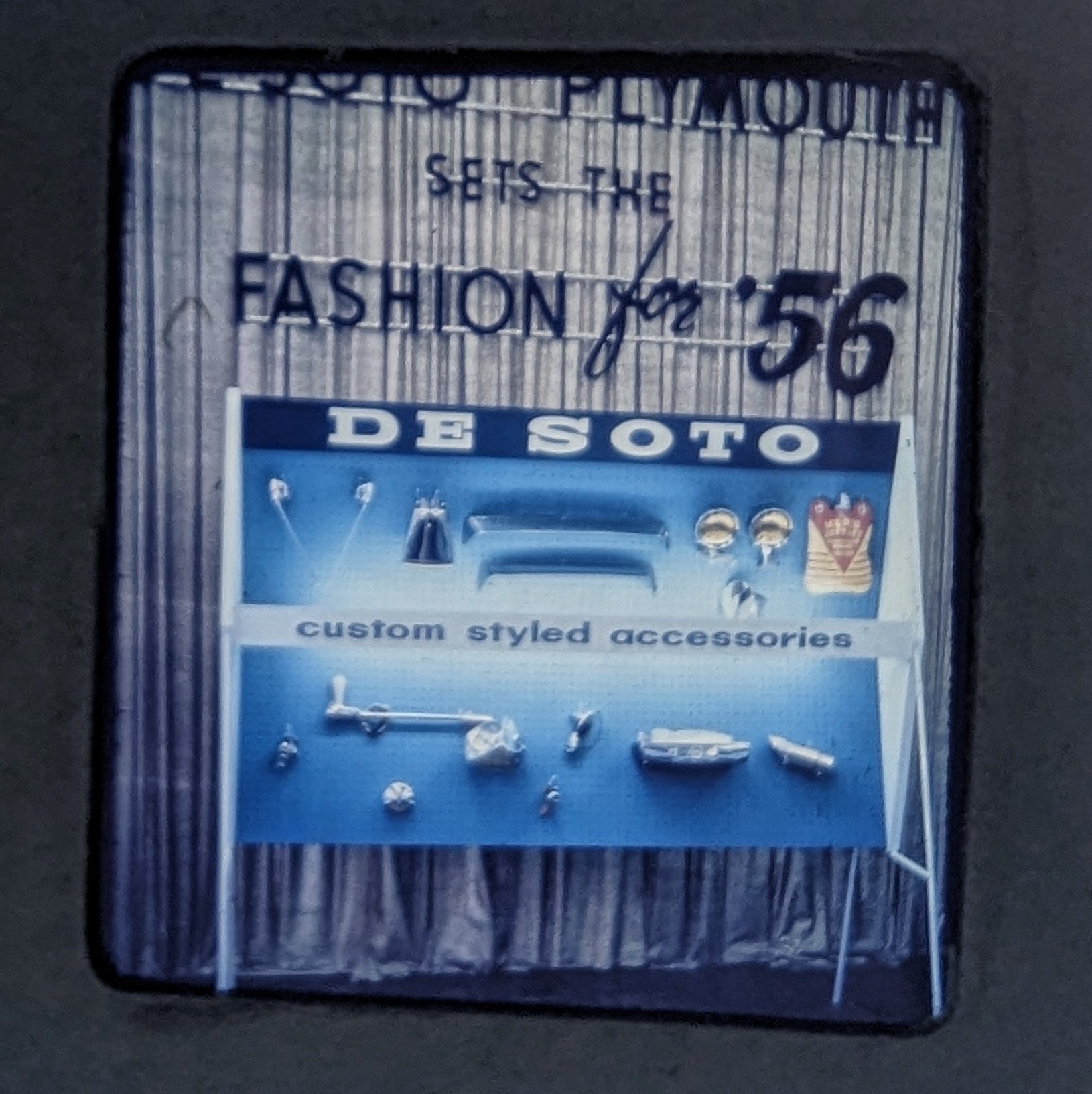

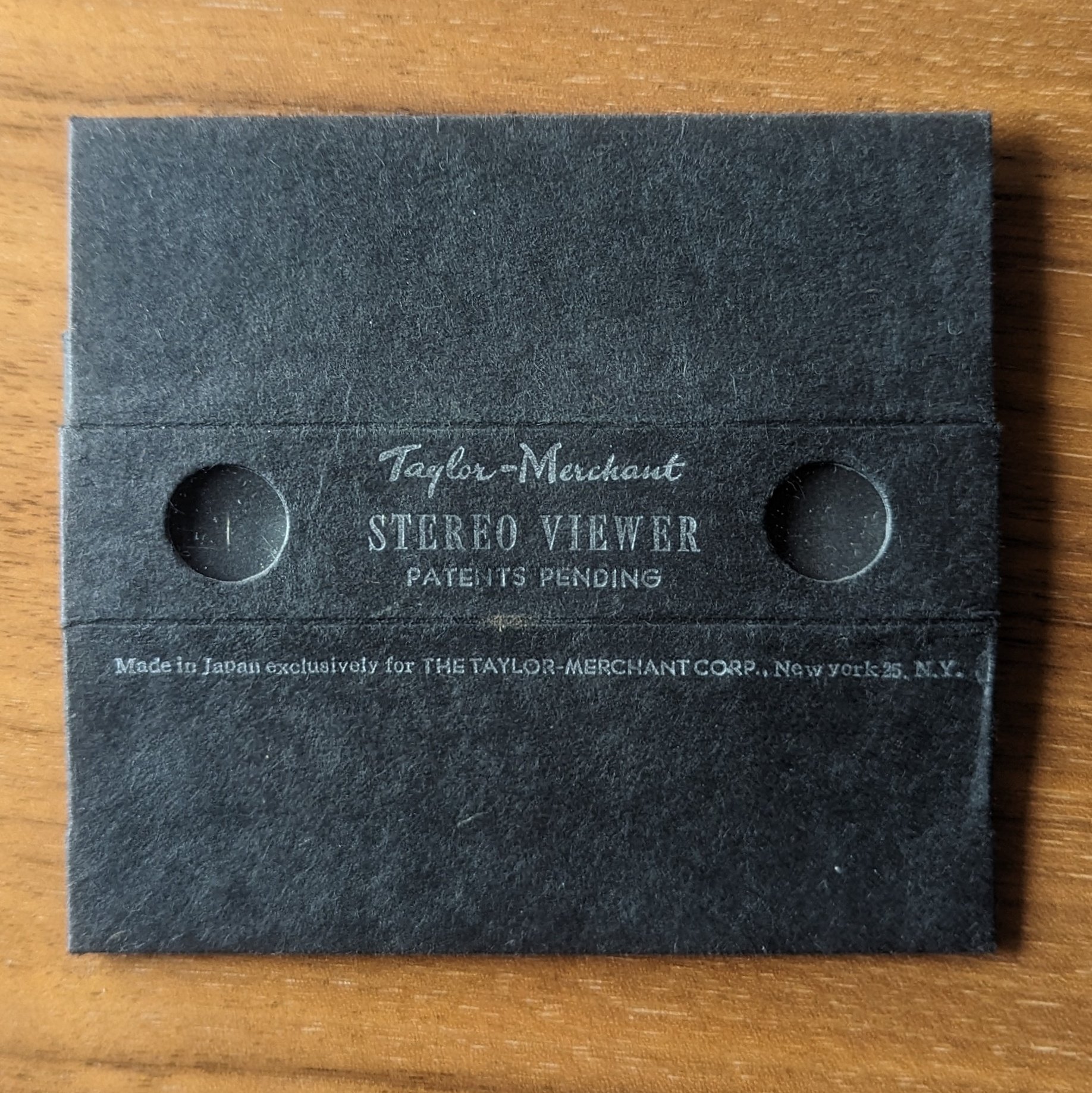
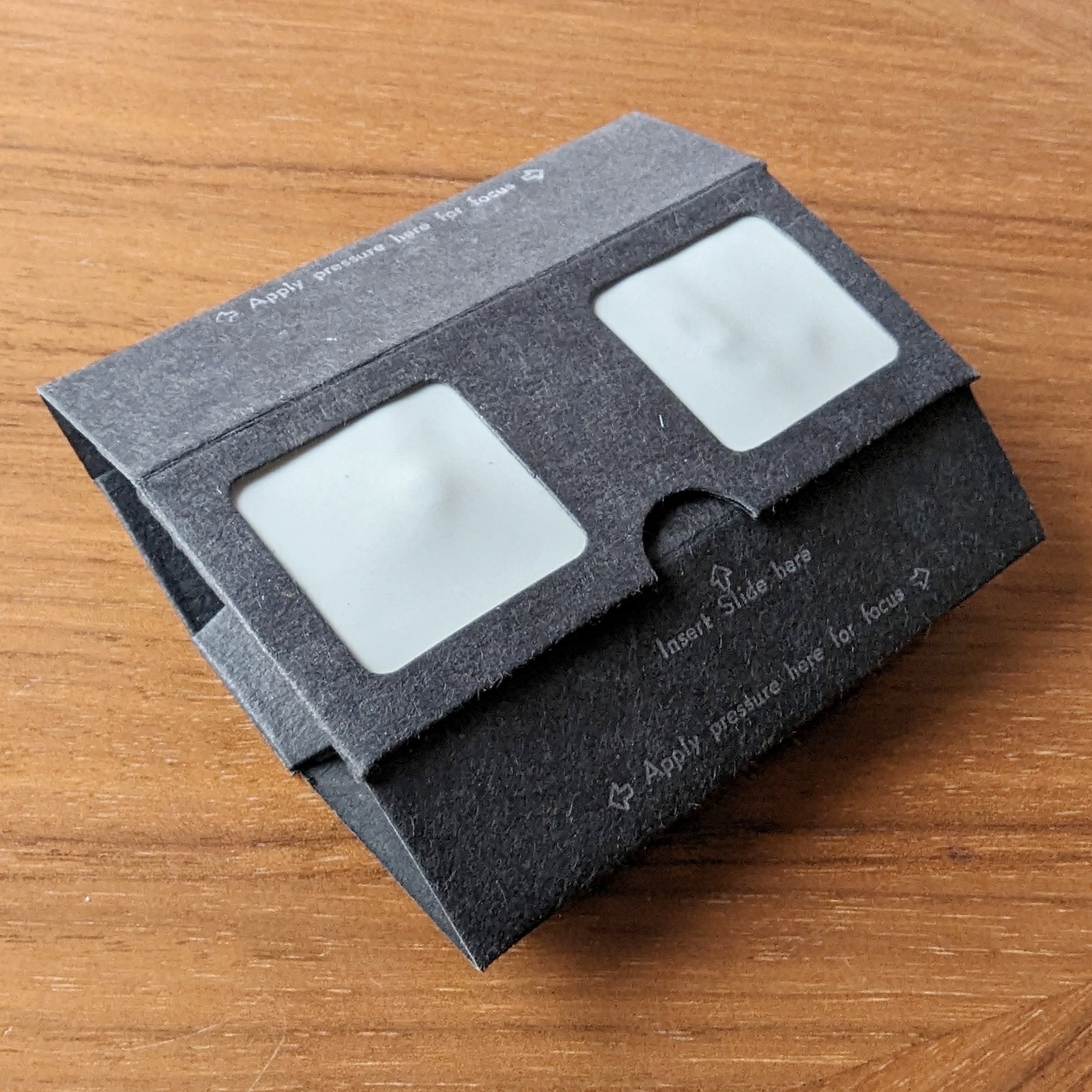
1957 Plymouth Automobile | Stori-viewer
The tagline “Suddenly, it’s 1960” on the packaging might lead you to believe this 1957 set of stereoviews had been stuffed in the wrong box. Or maybe we were the only ones unaware that “Suddenly, it’s 1960” was one of the most recognizable car slogans of its time, created by Plymouth to demonstrate the forward-looking designs of their 1957 line of cars: all long and sleek with cool fins. The box and stereoview cards are fully branded but the viewer is a standard issue early-version black Stori-viewer. We also have an earlier, 1955 Plymouth Stori-Viewer set pictured on our Stori-viewer page.
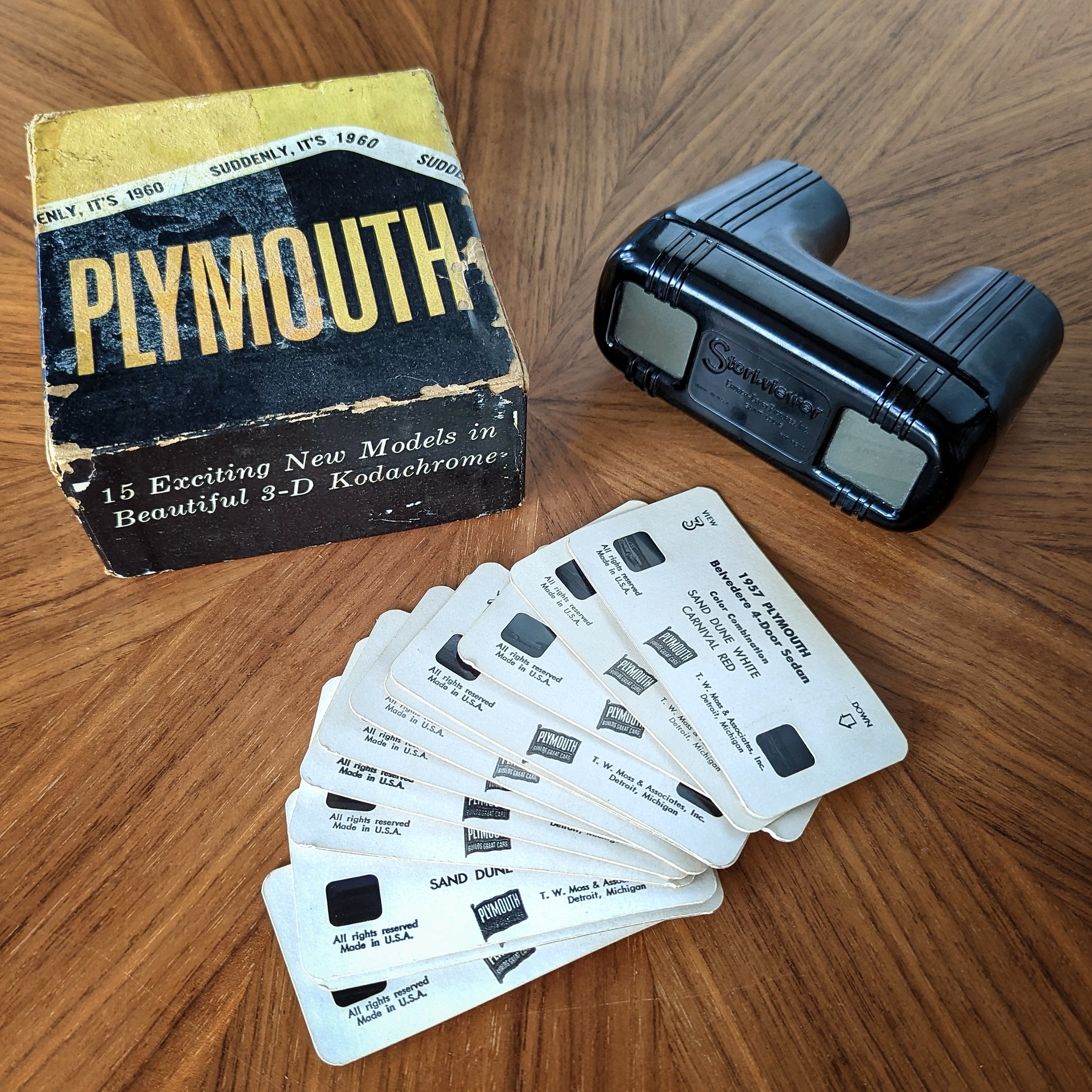
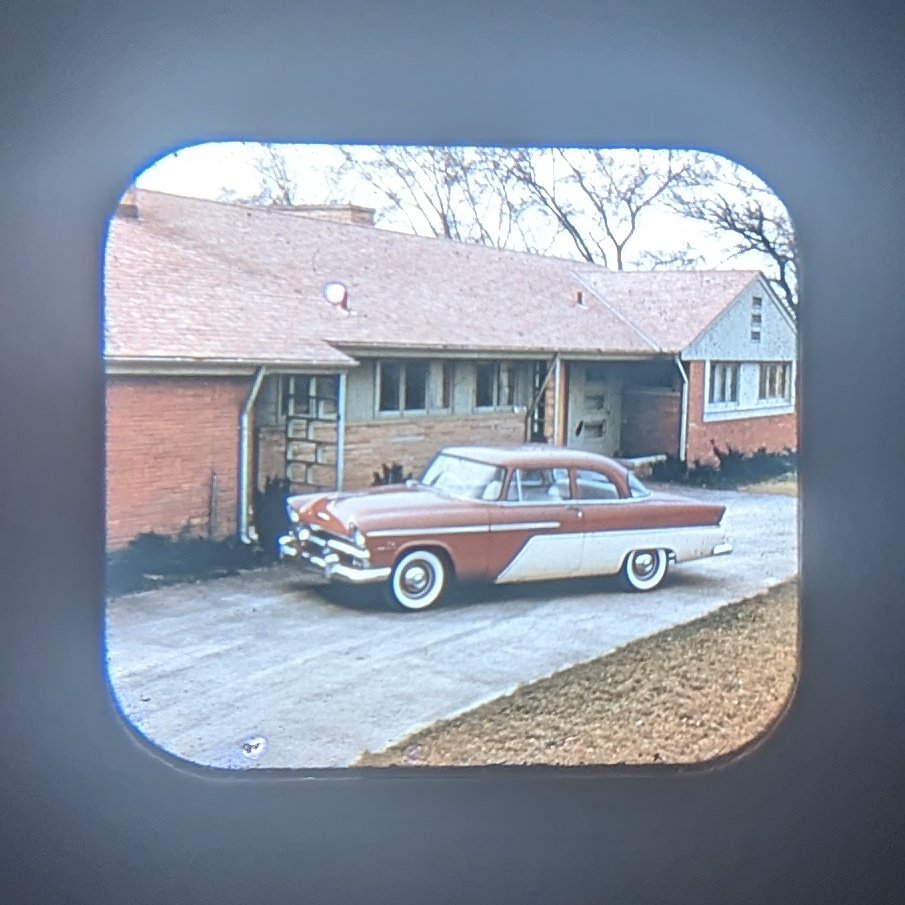
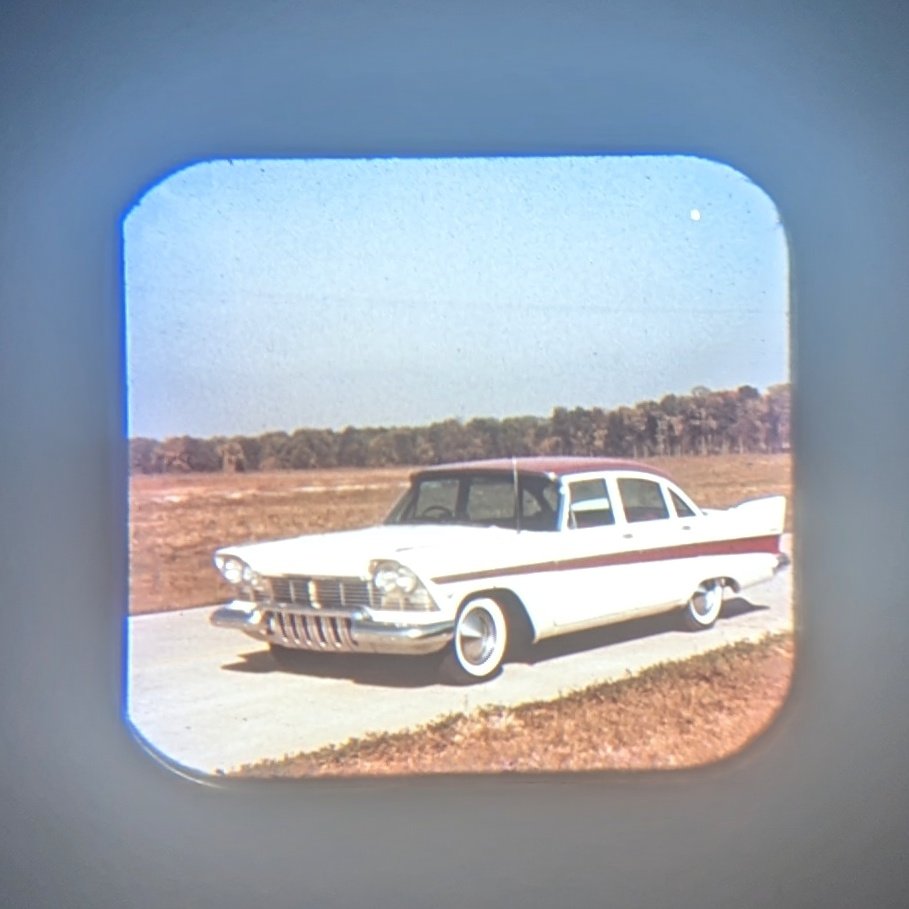
1959 Dodge | Stere-o-Card 3D Viewer
Everything about this Stere-o-card viewer is branded for the 1959 Dodge: the viewer itself and the stereoview card. But that’s the cool thing about Stere-o-card viewers — we’ve never found a plain un-branded one. They were designed to be promotional tools and they worked really well for cars (you’ll see two more below). Stere-o-card had a standard build for their viewers but added creative touches to some; for example, the blue Malay fabric swatch on the front of this viewer.
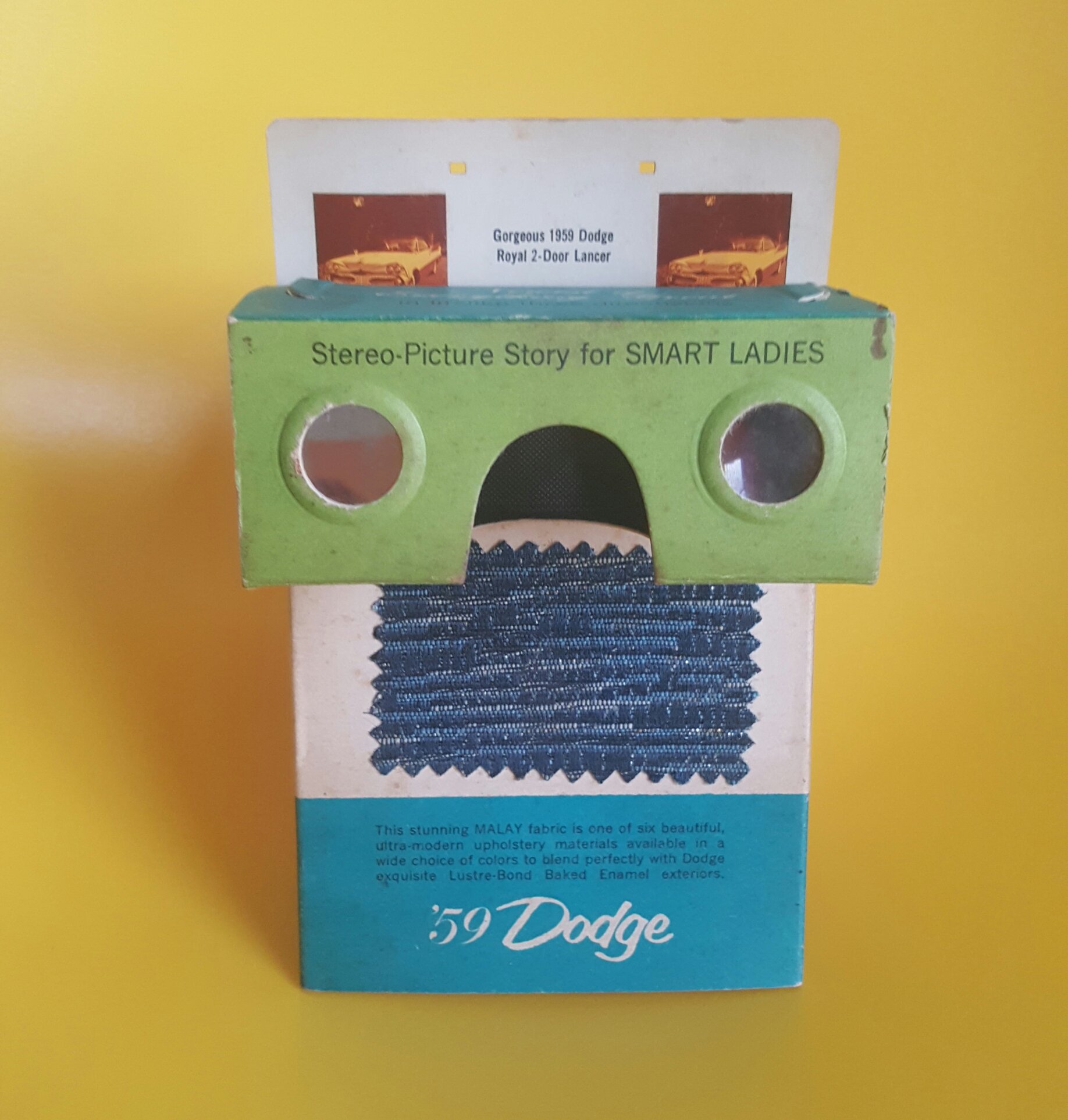
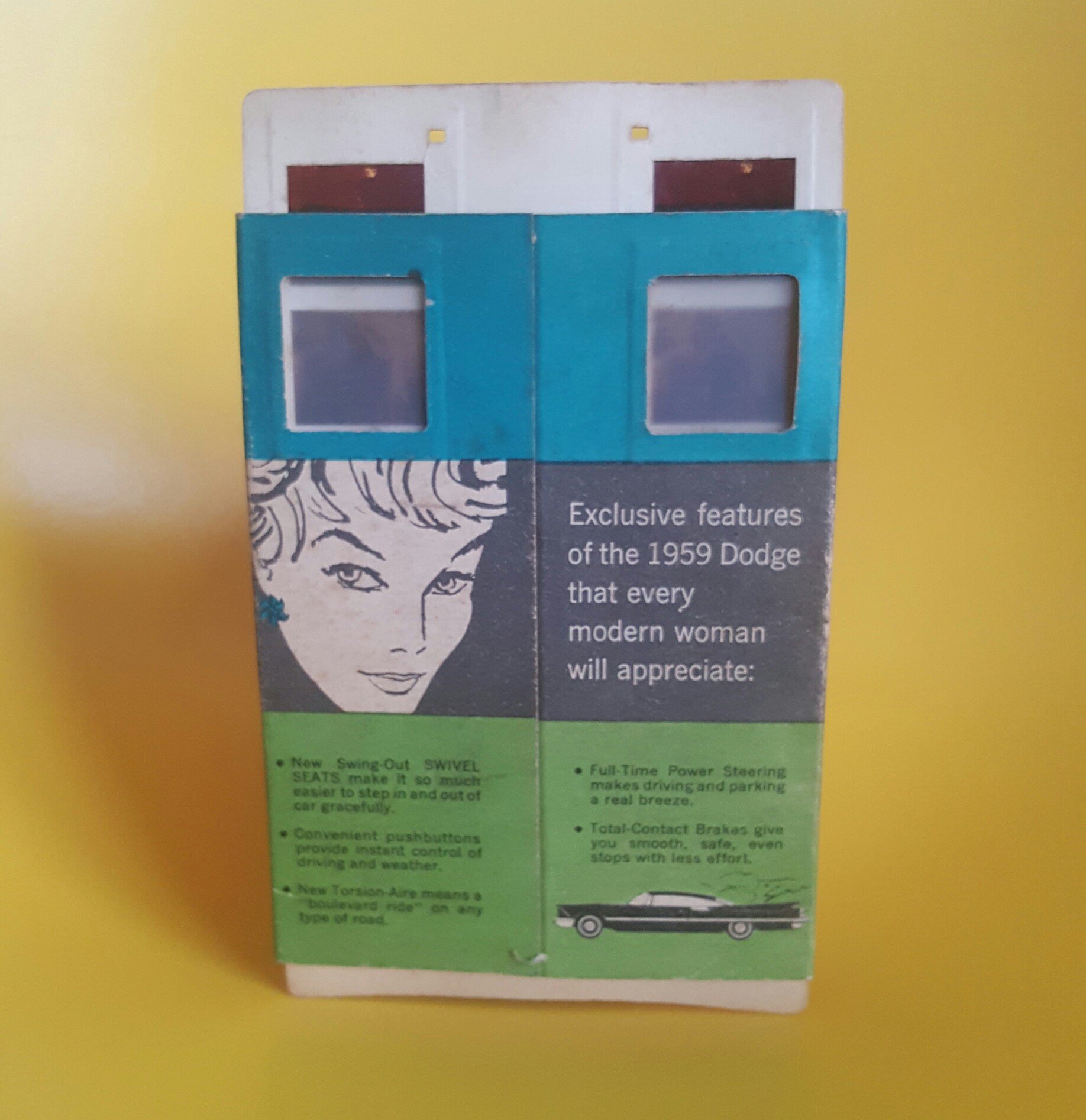
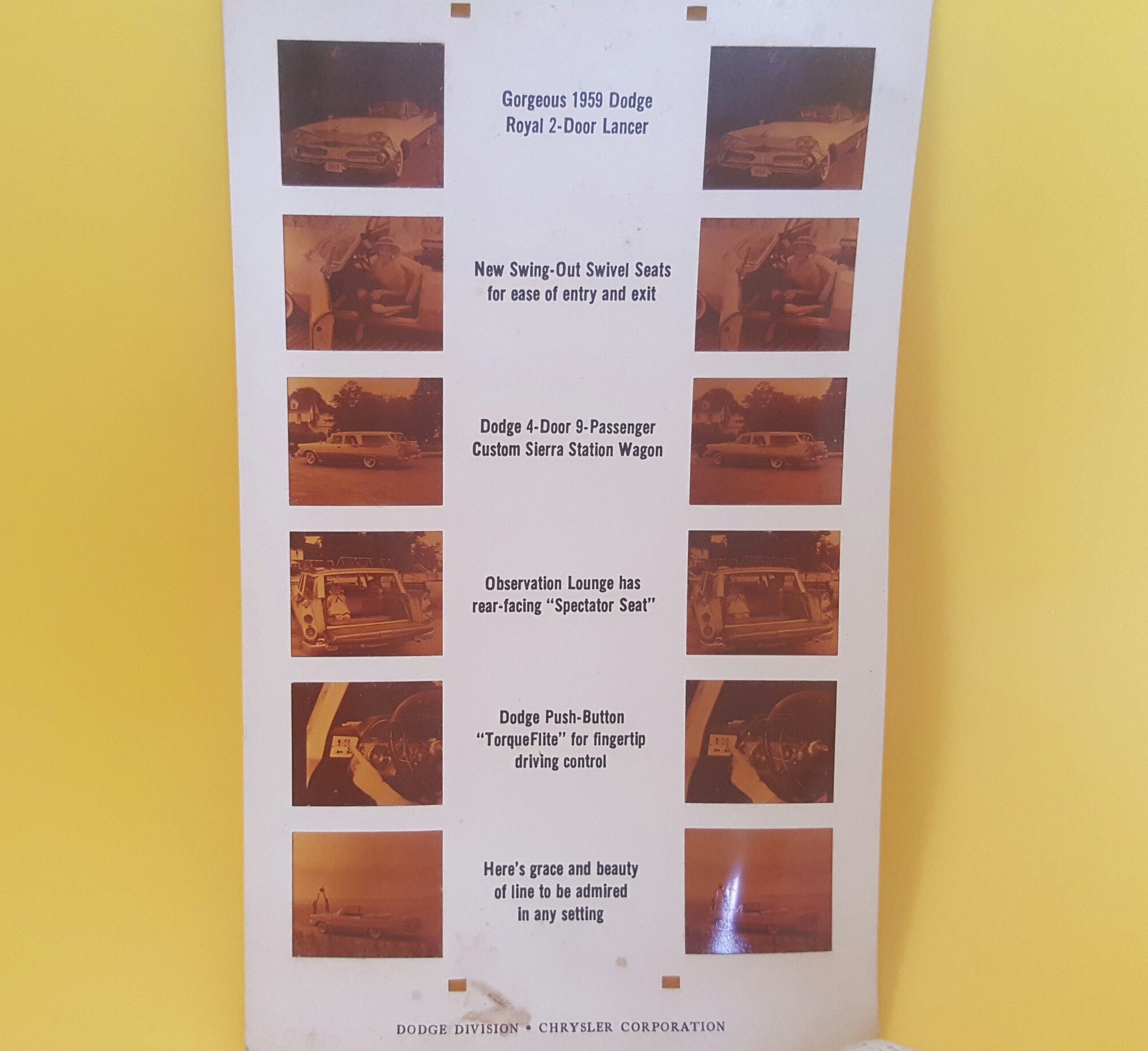
1960 Ford Falcon | Stere-o-card 3D Viewer
This Stere-o-Card viewer gives a “sneak-preview” of the Ford Falcon. The viewer is designed with a special fold-out flap printed with additional vehicle information. The viewer was provided to car salesmen to use on “prime small-car prospects.”
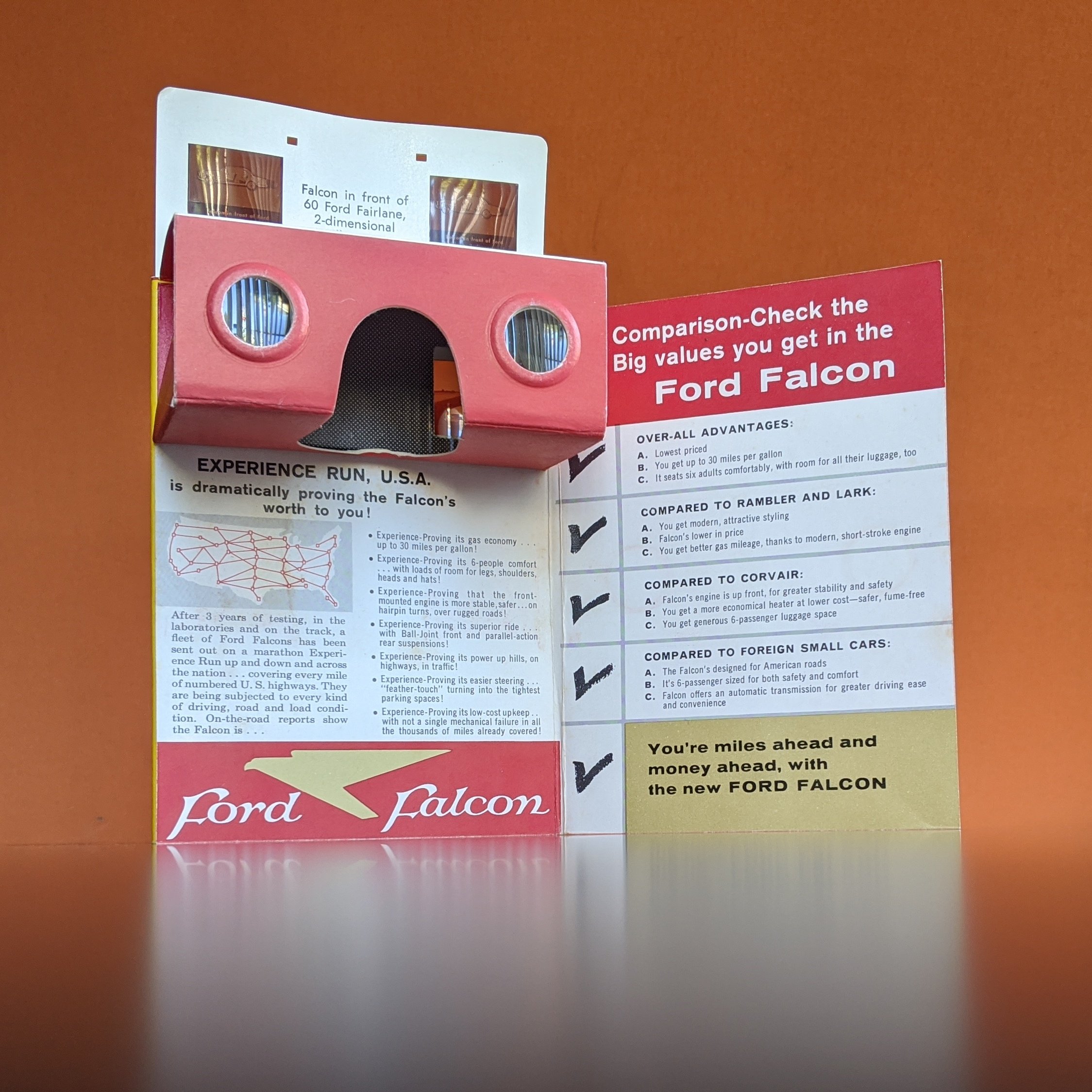
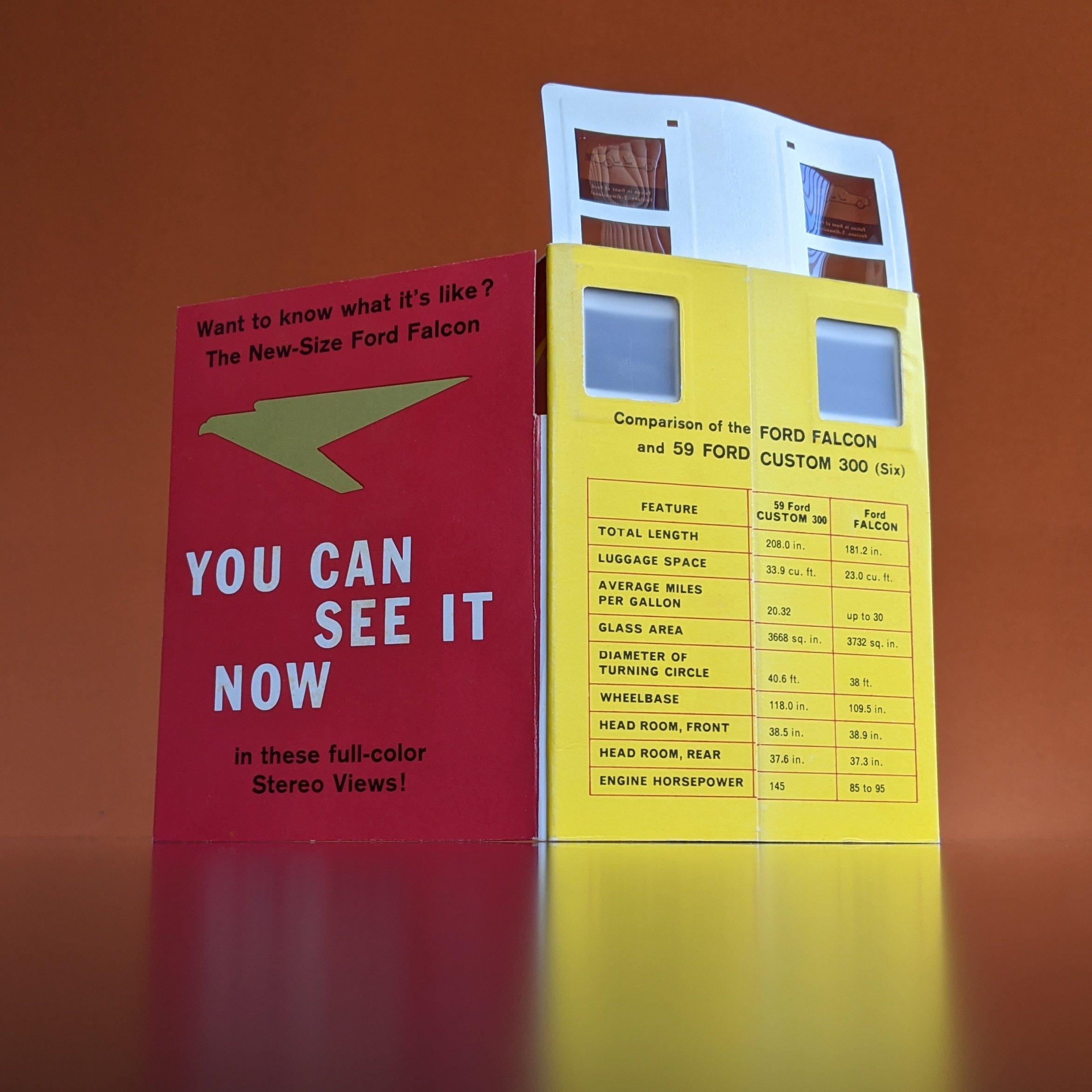
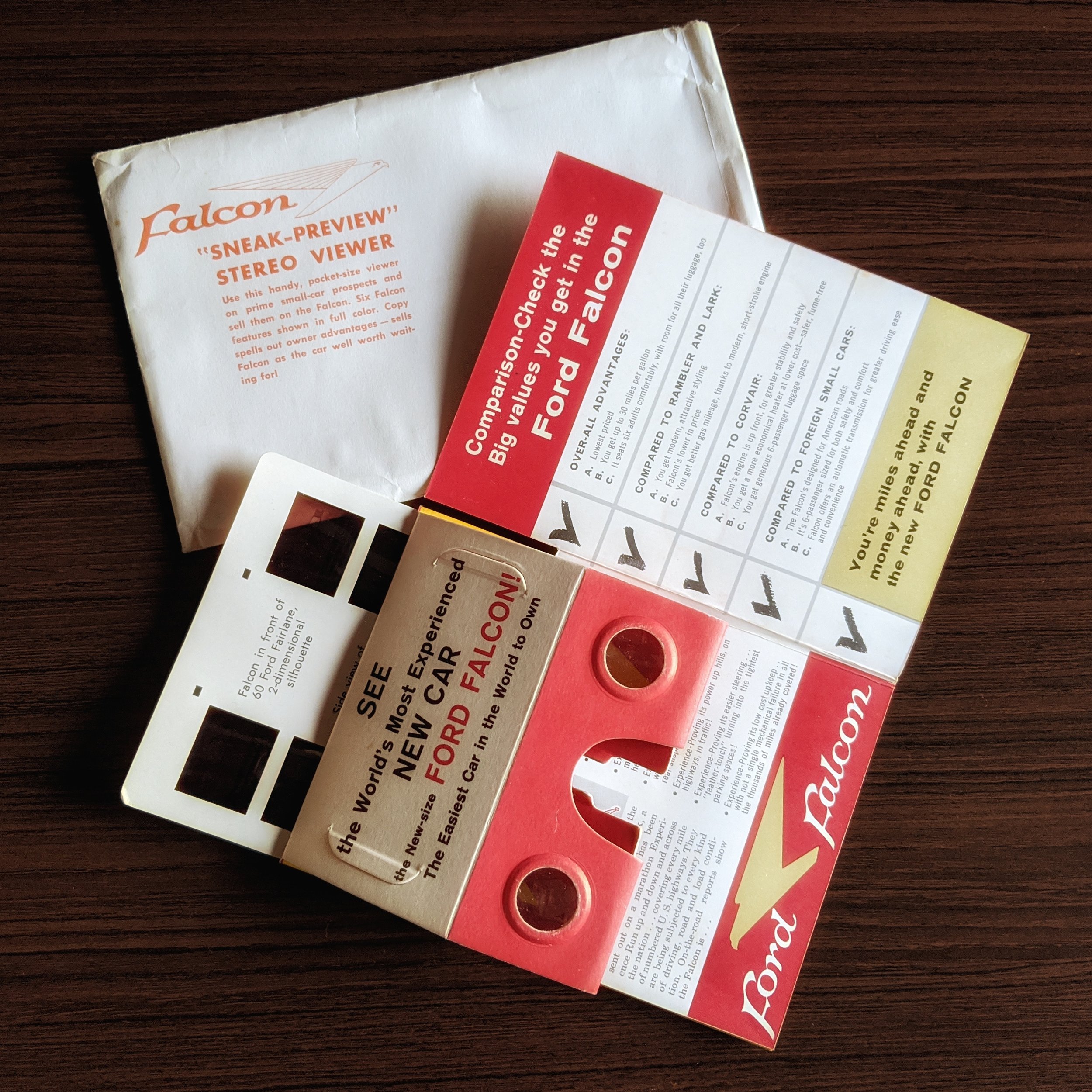
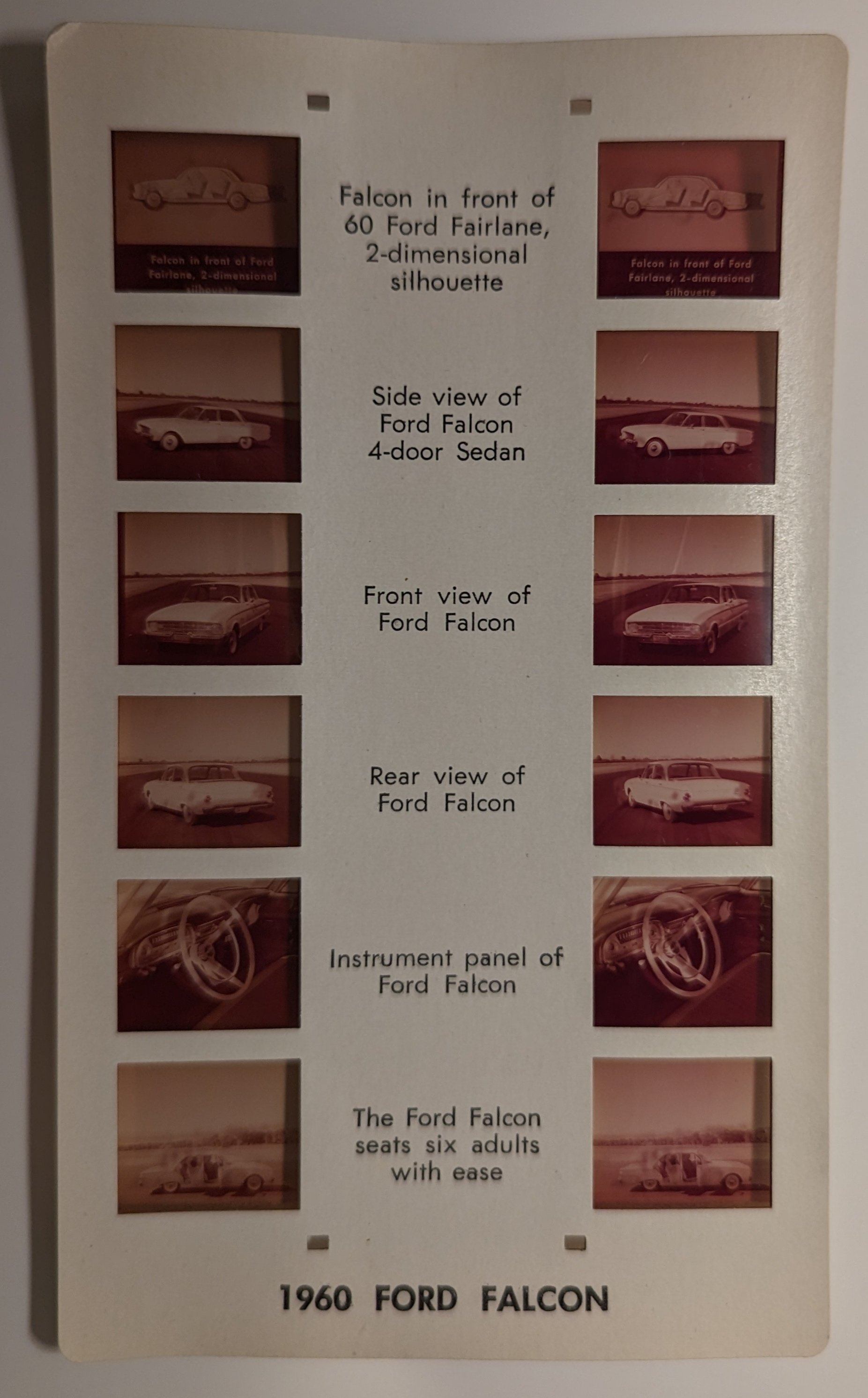
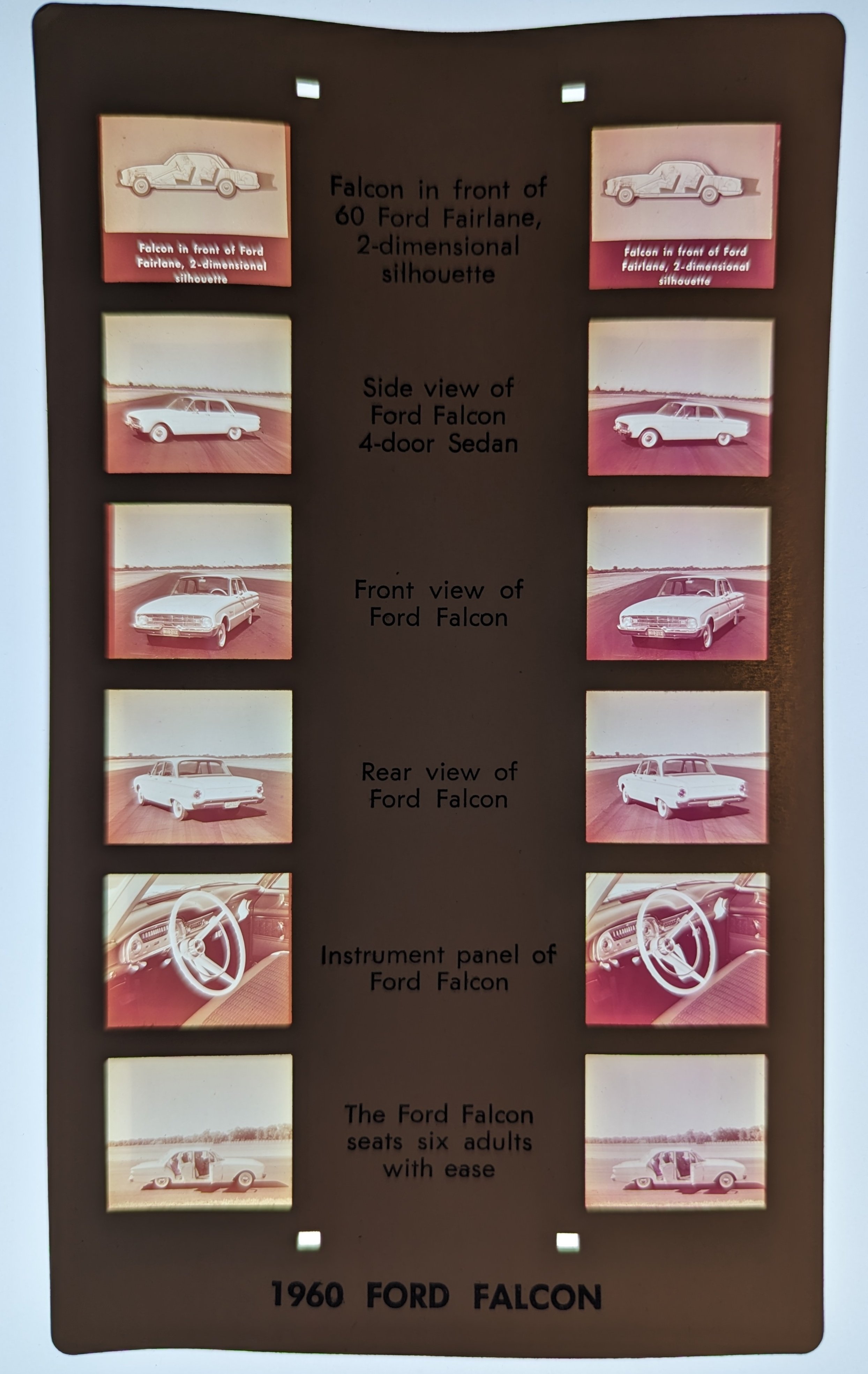
1960 Dodge Dart | Stere-o-card 3D Viewer
Our 3rd example of a Stere-o-card viewer advertising cars is for “the new economy car for ‘60” — the Dodge Dart. While Chrysler Corporation in the United States was using the Stere-o-card for 3D advertising in the late ‘50s, Chrysler Canada was gearing up to use Tru-Vue for its 3D advertising throughout the 1960s as you’ll see farther down in this post.
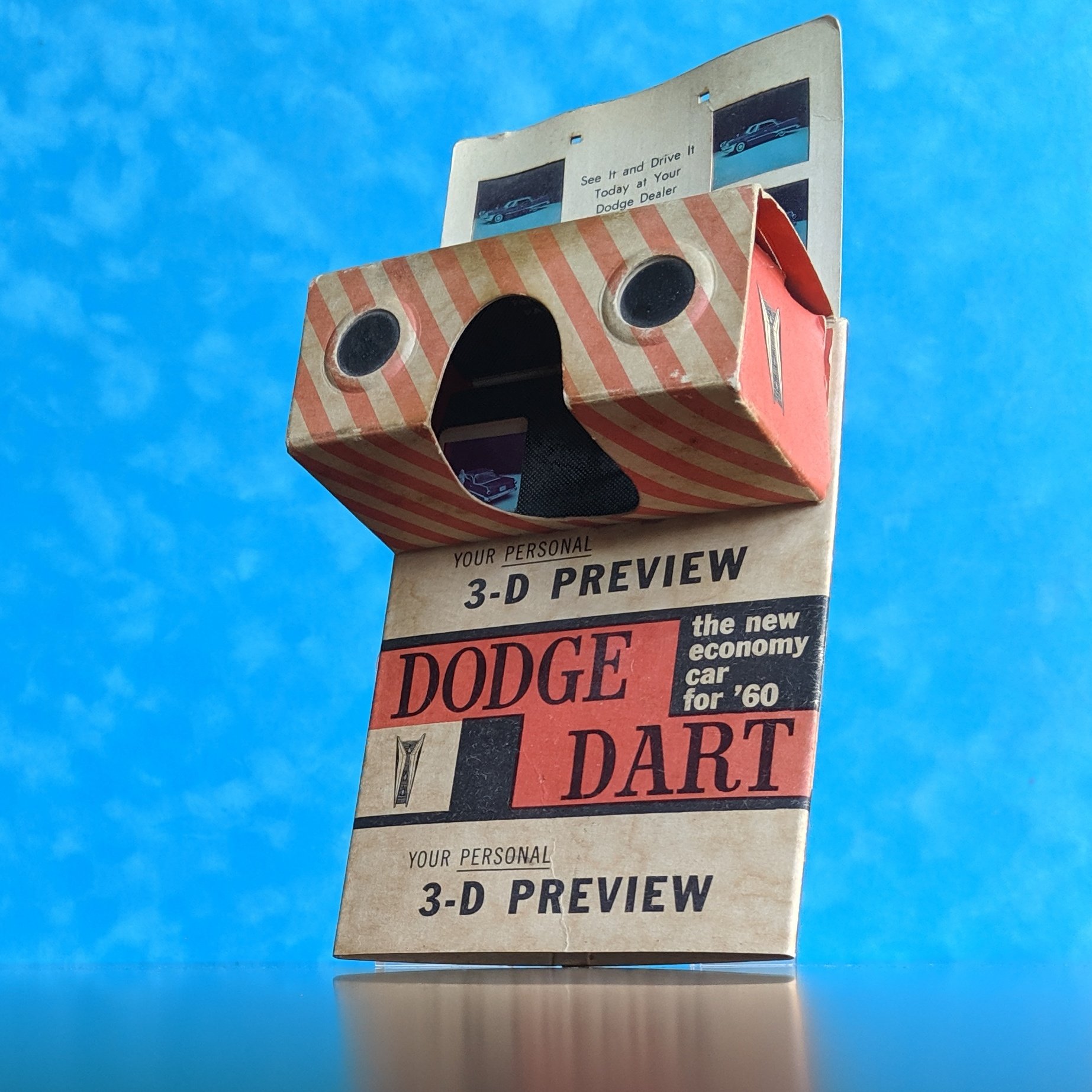
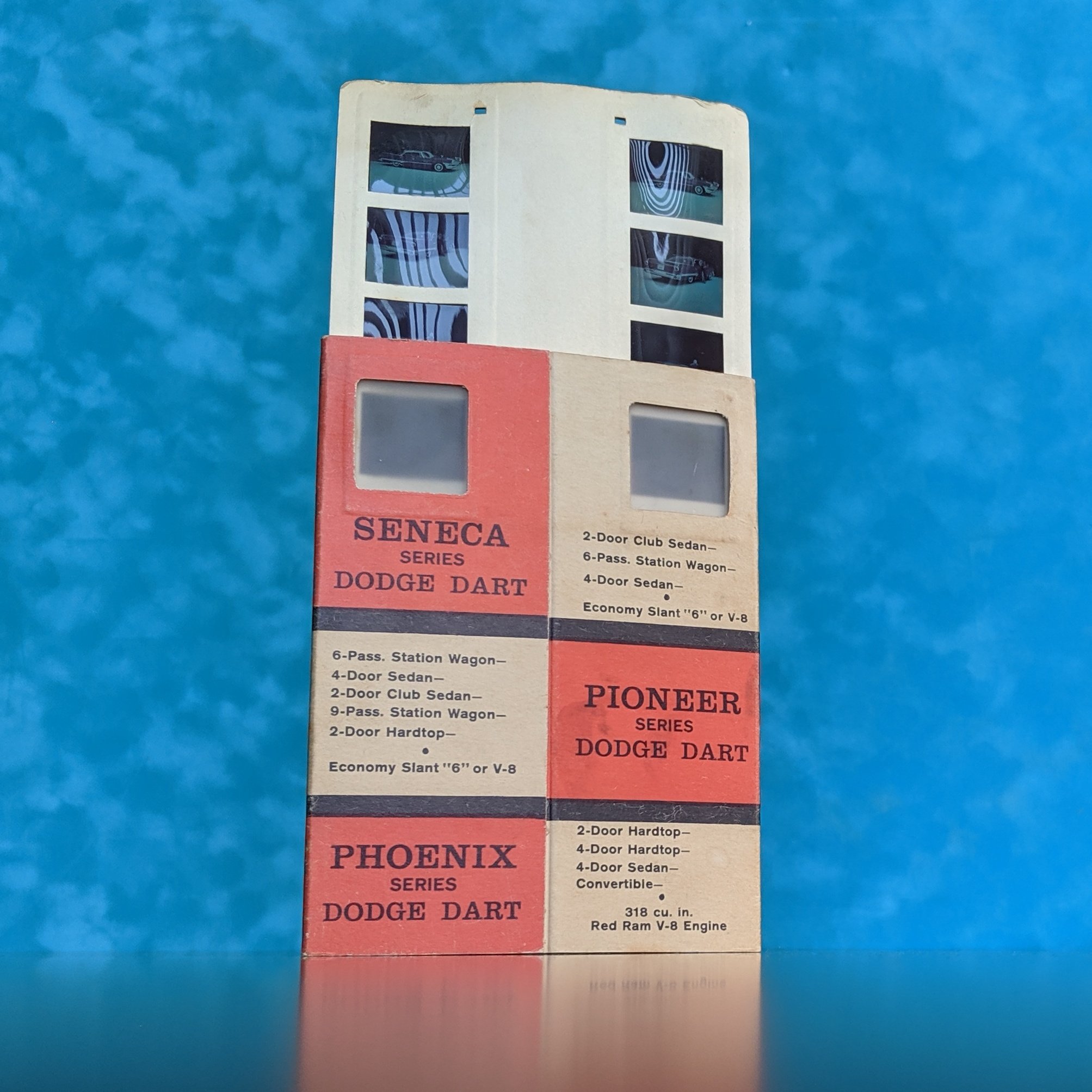
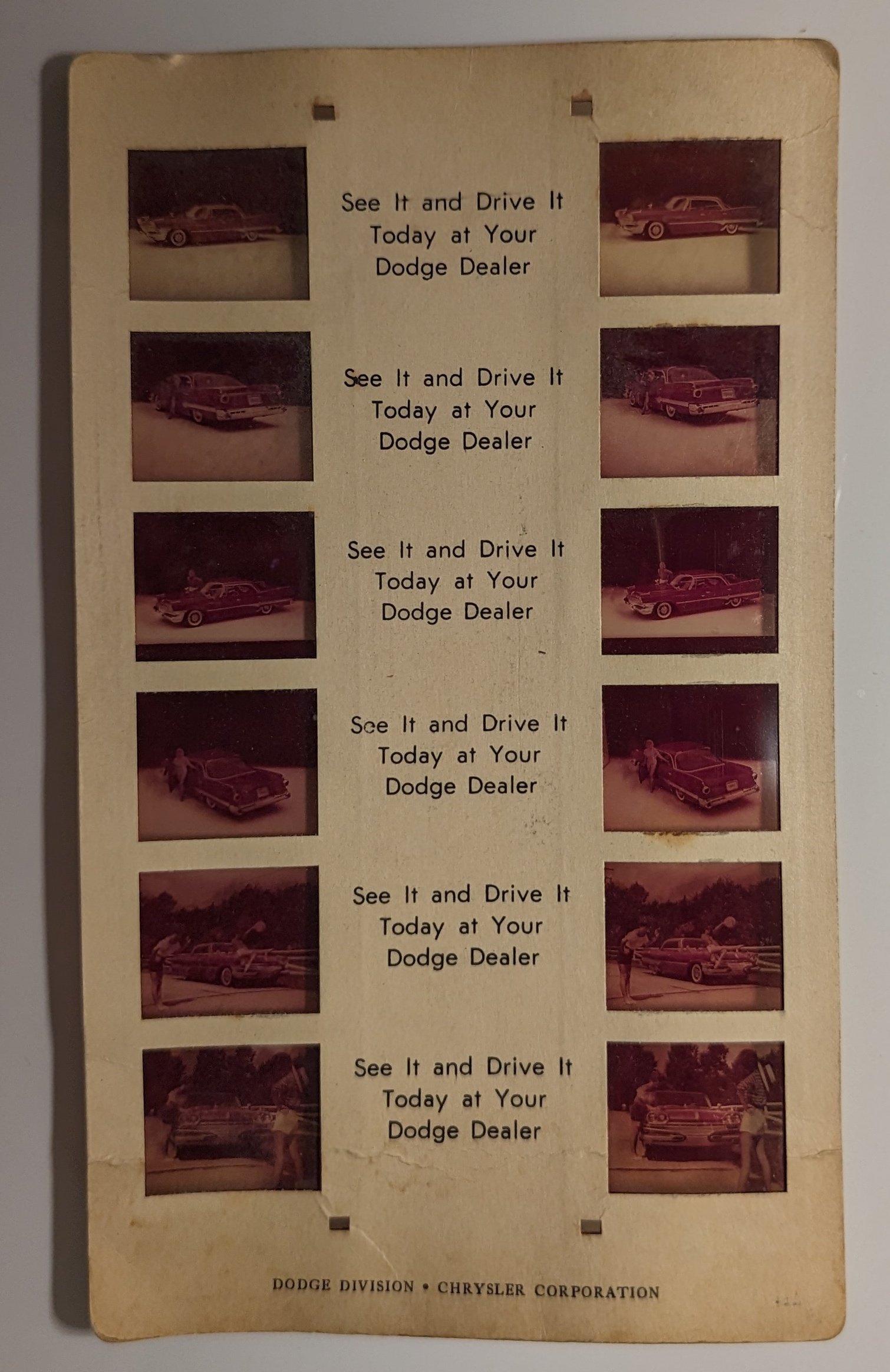


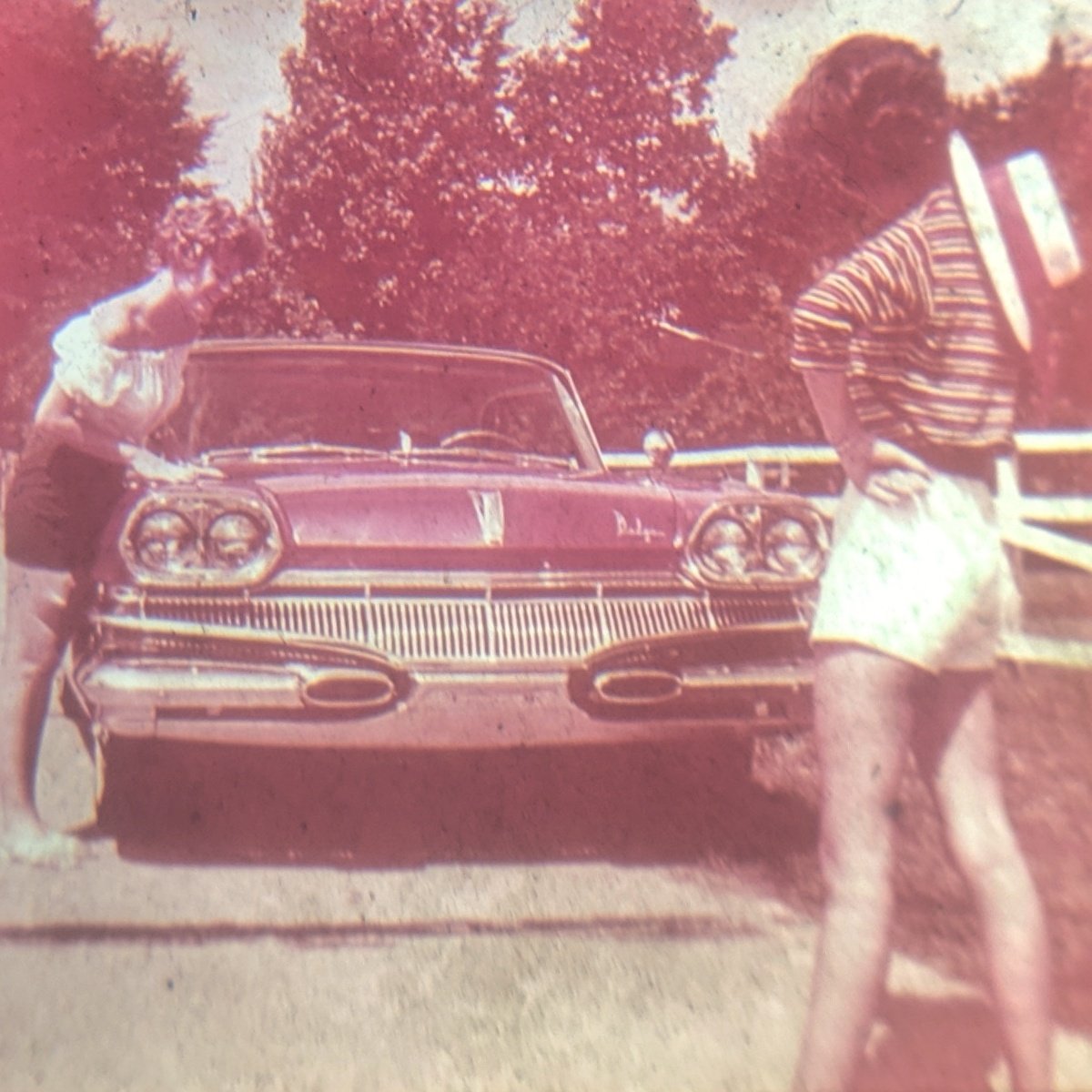
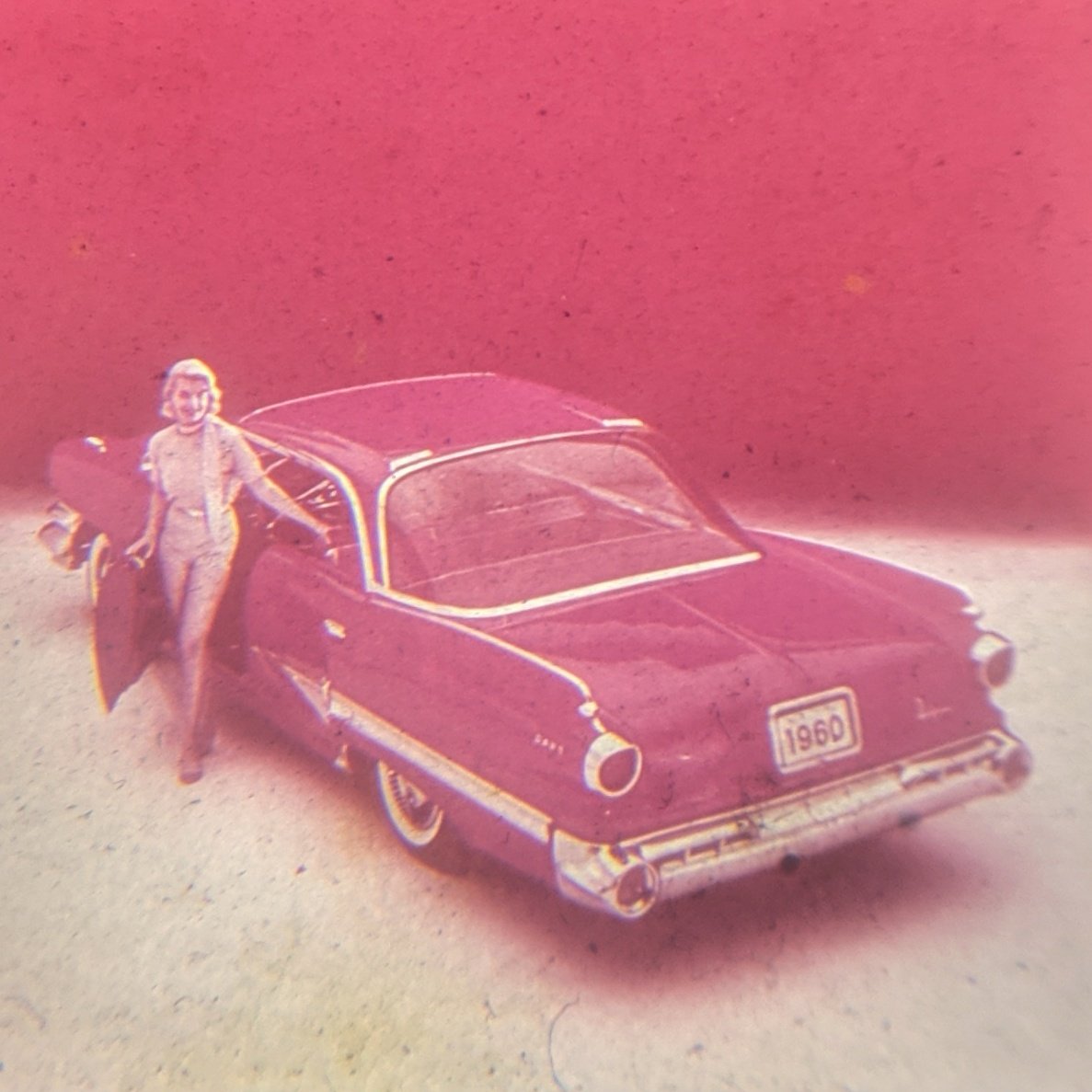


1960s Renault | Bruguière Super Stereoclic
This 1960s Super Stereoclic viewer is embossed with the Renault logo — it’s the only branded Super Stereoclic viewer we’ve seen. The stereo photos showing off the Renault 4, have retained their color.

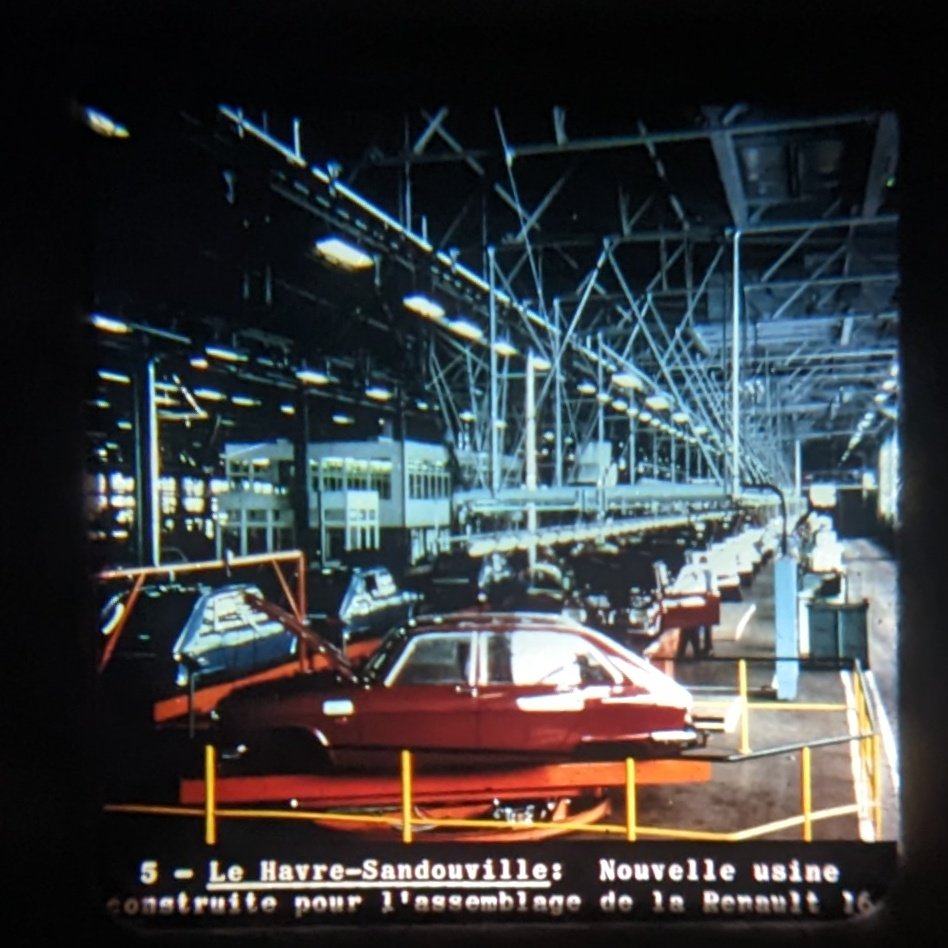
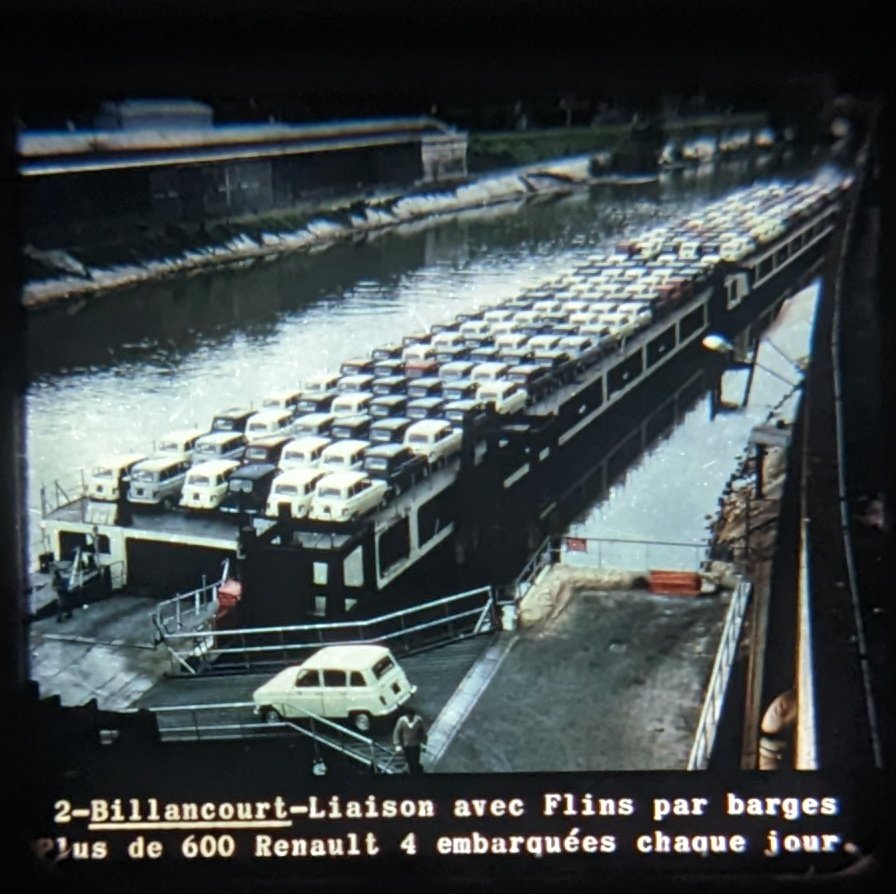
1961-70 Chrysler | Tru-Vue
Throughout the 1960s, Chrysler of Canada previewed their cars using Tru-Vue stereoview cards. In our collection, we have cards for 1961, 1962, 1963, 1964, 1965, 1968, 1969, and 1970. The stereo viewer was typically one of their standard-issue, blue plastic viewers; however, Tru-Vue also created a branded cardboard viewer and a special silver-gray, plastic viewer for these Chrysler cards (both shown farther down in this post.)


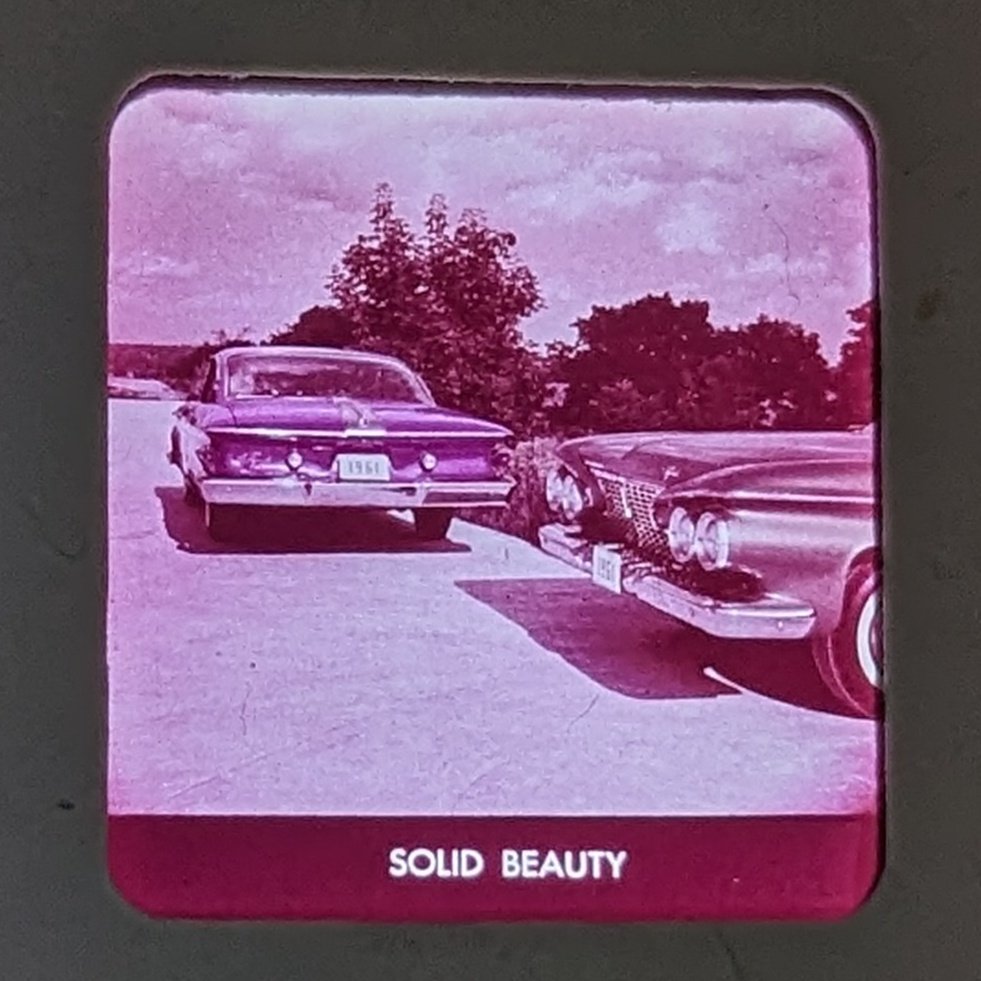
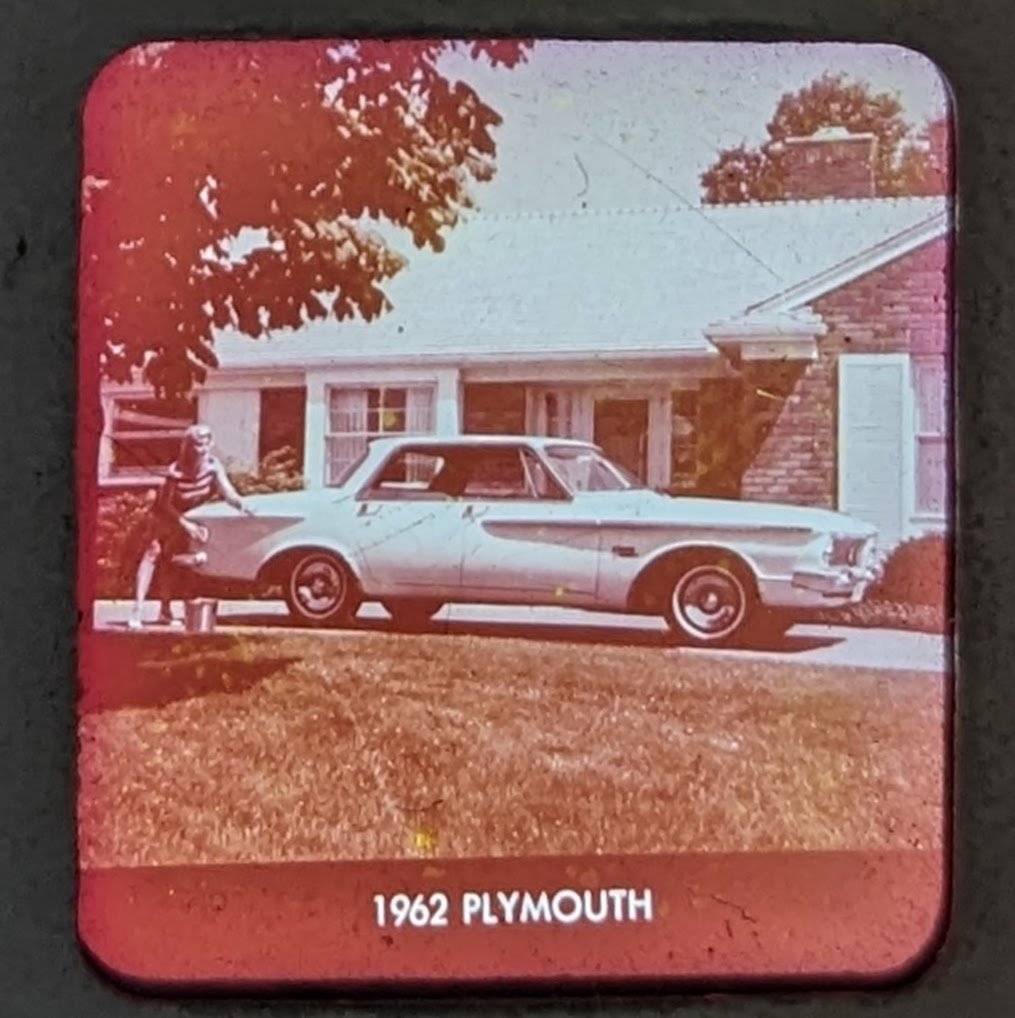
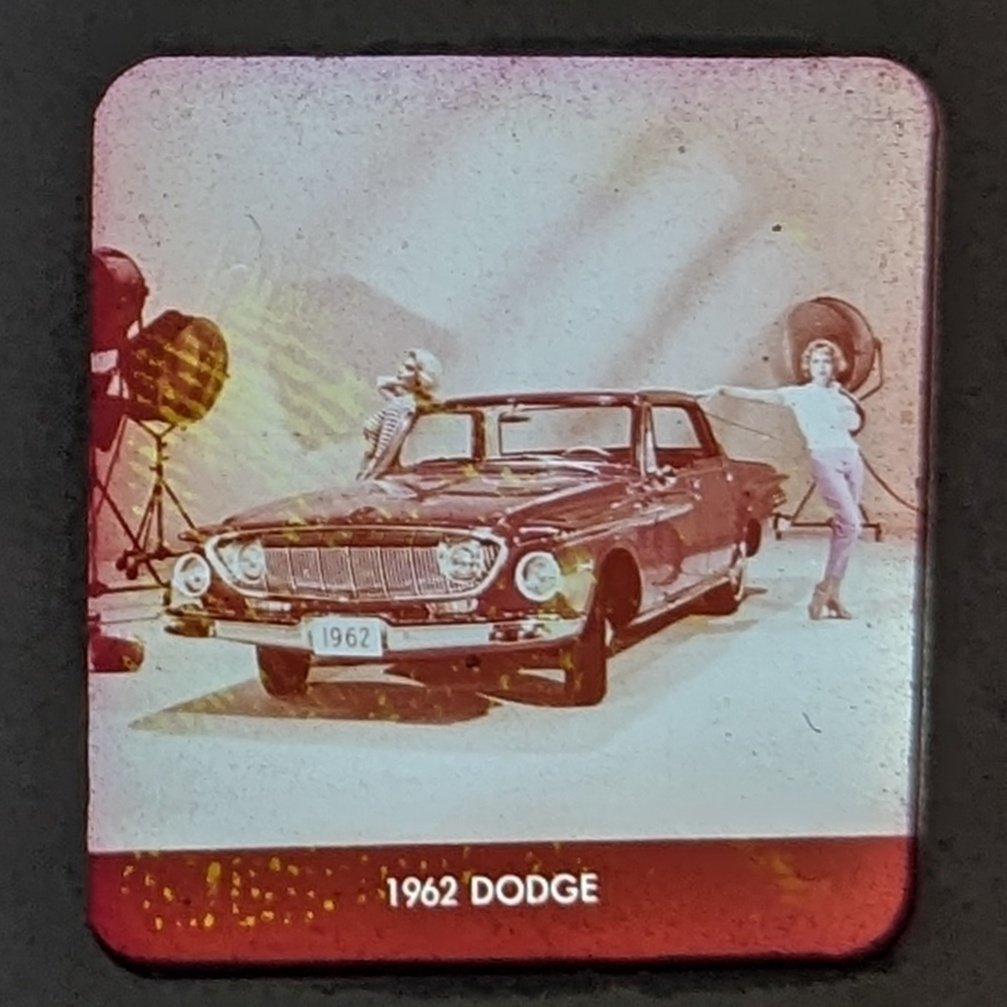
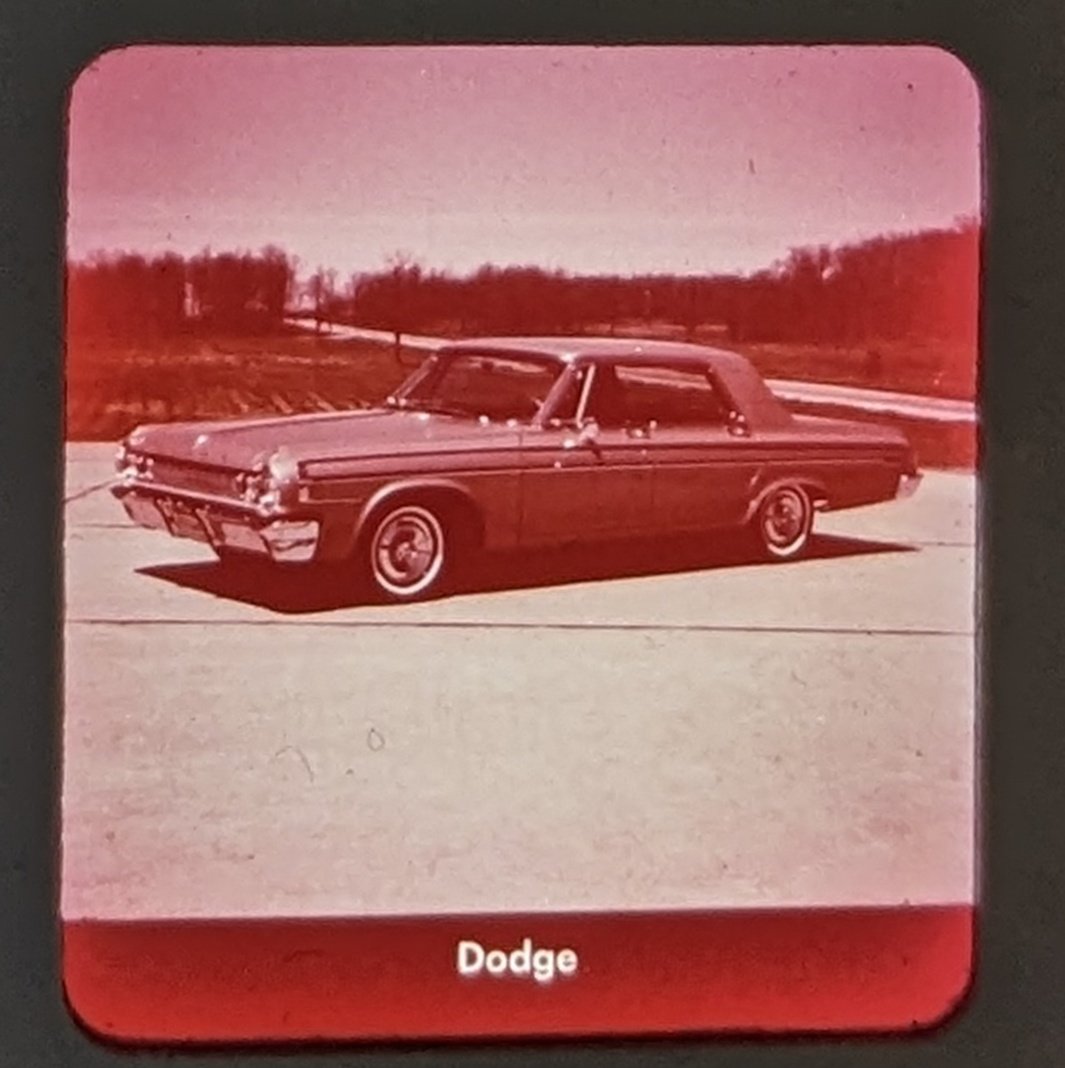
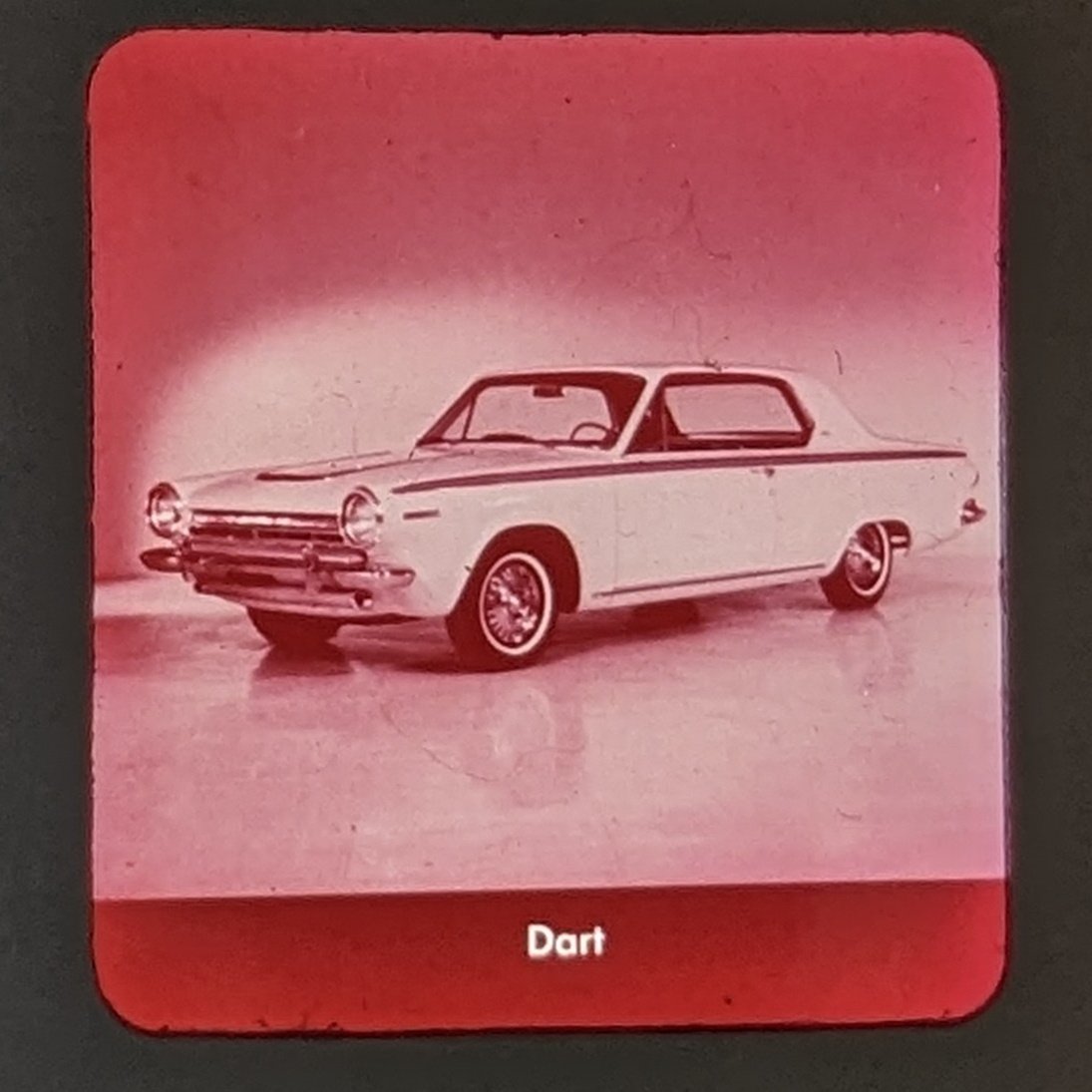

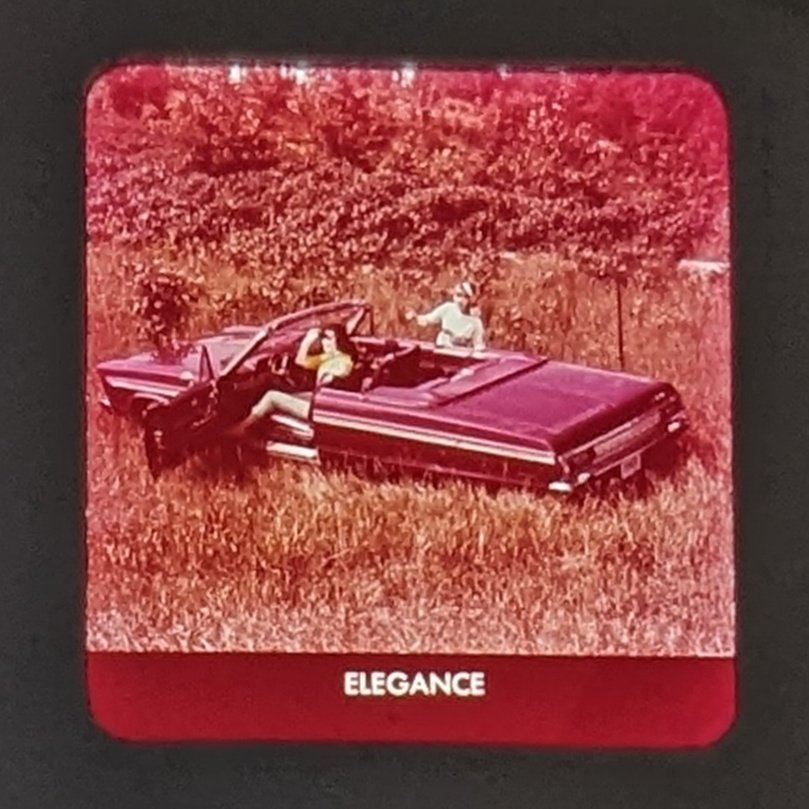
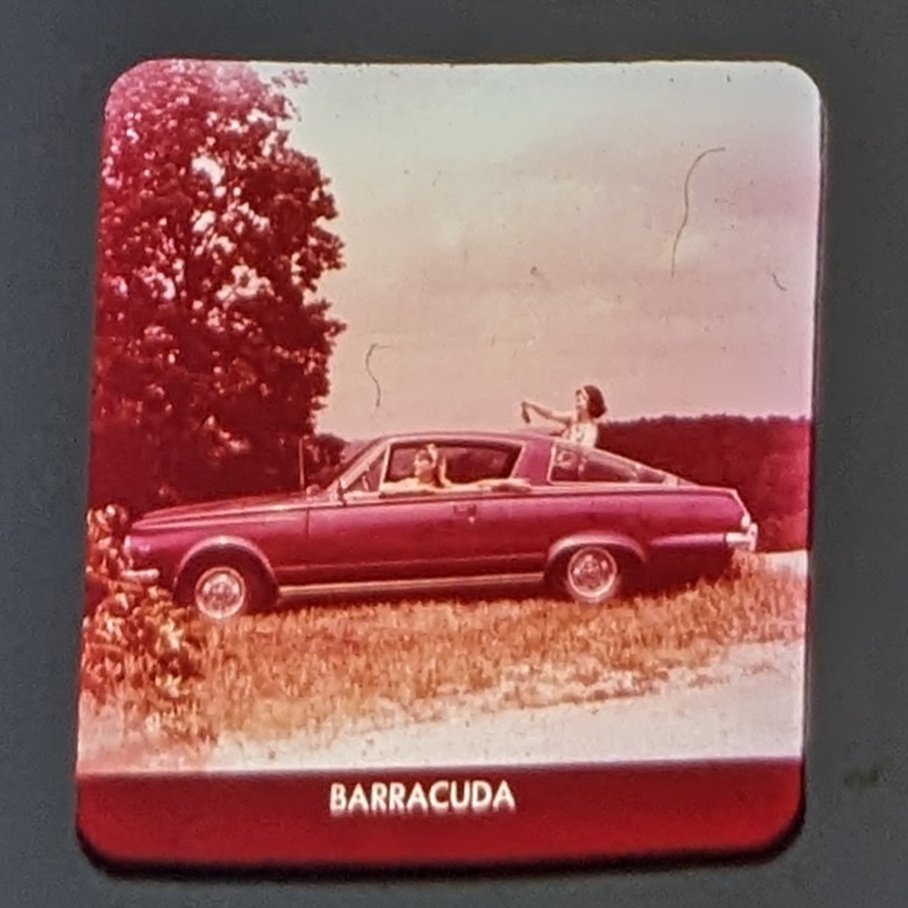
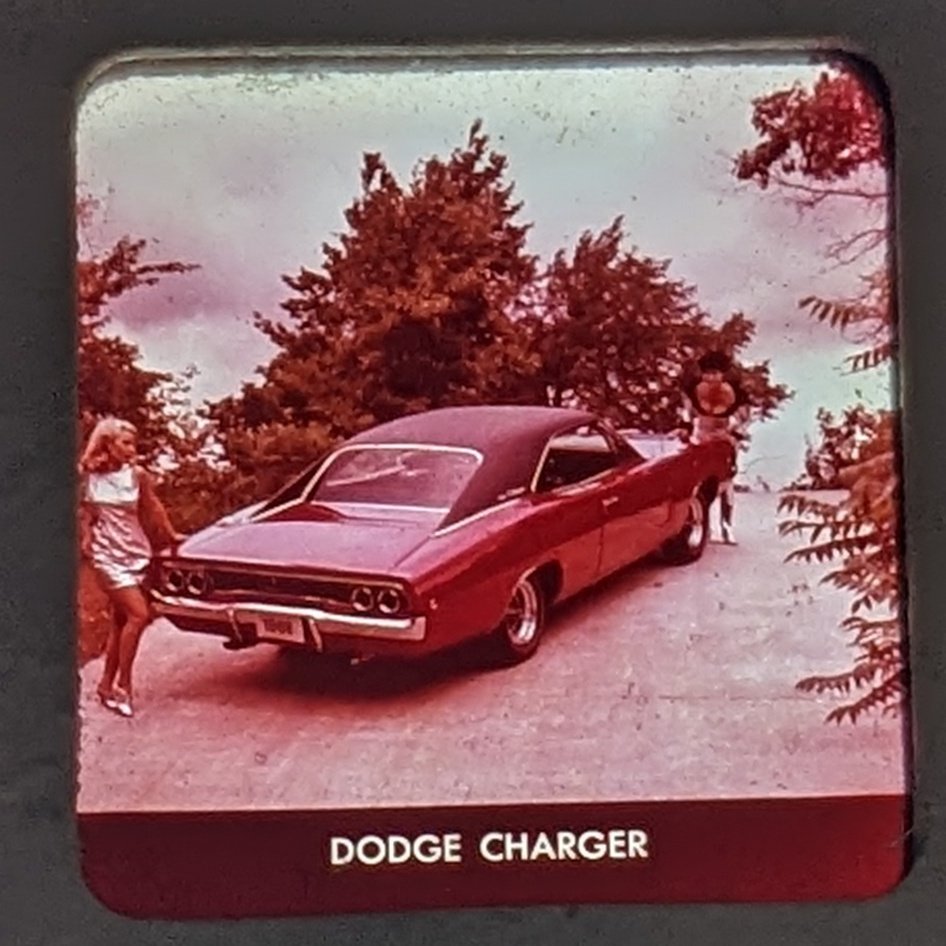


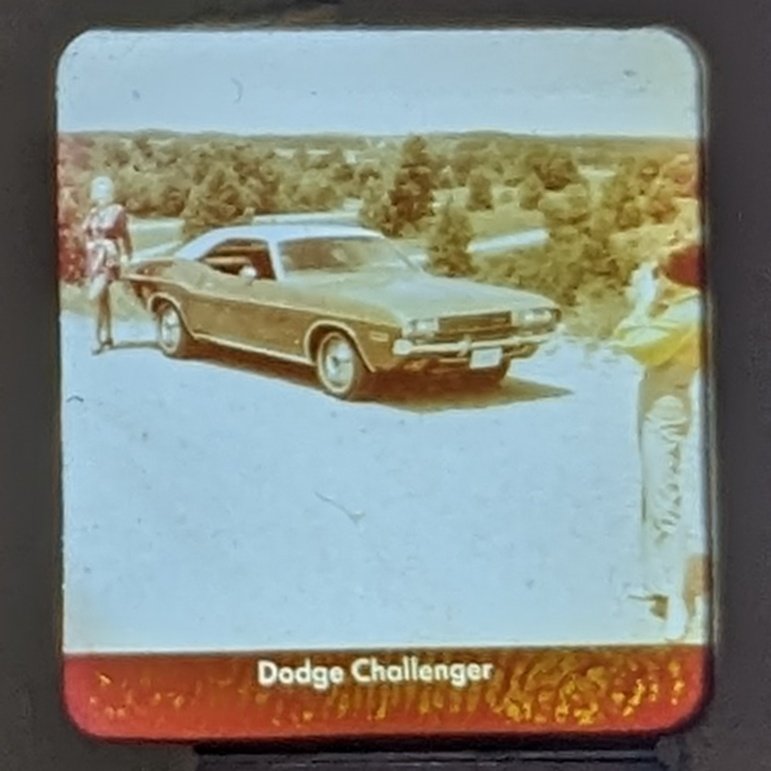
1963 Chrysler | Tru-Vue
Even some serious collectors weren’t aware that Tru-Vue created a cardboard “compact viewer” similar to the Stere-o-Card design above. This particular one was branded for Chrysler Motors Corporation and used by Chrysler of Canada to preview their 1963 cars in 3D.

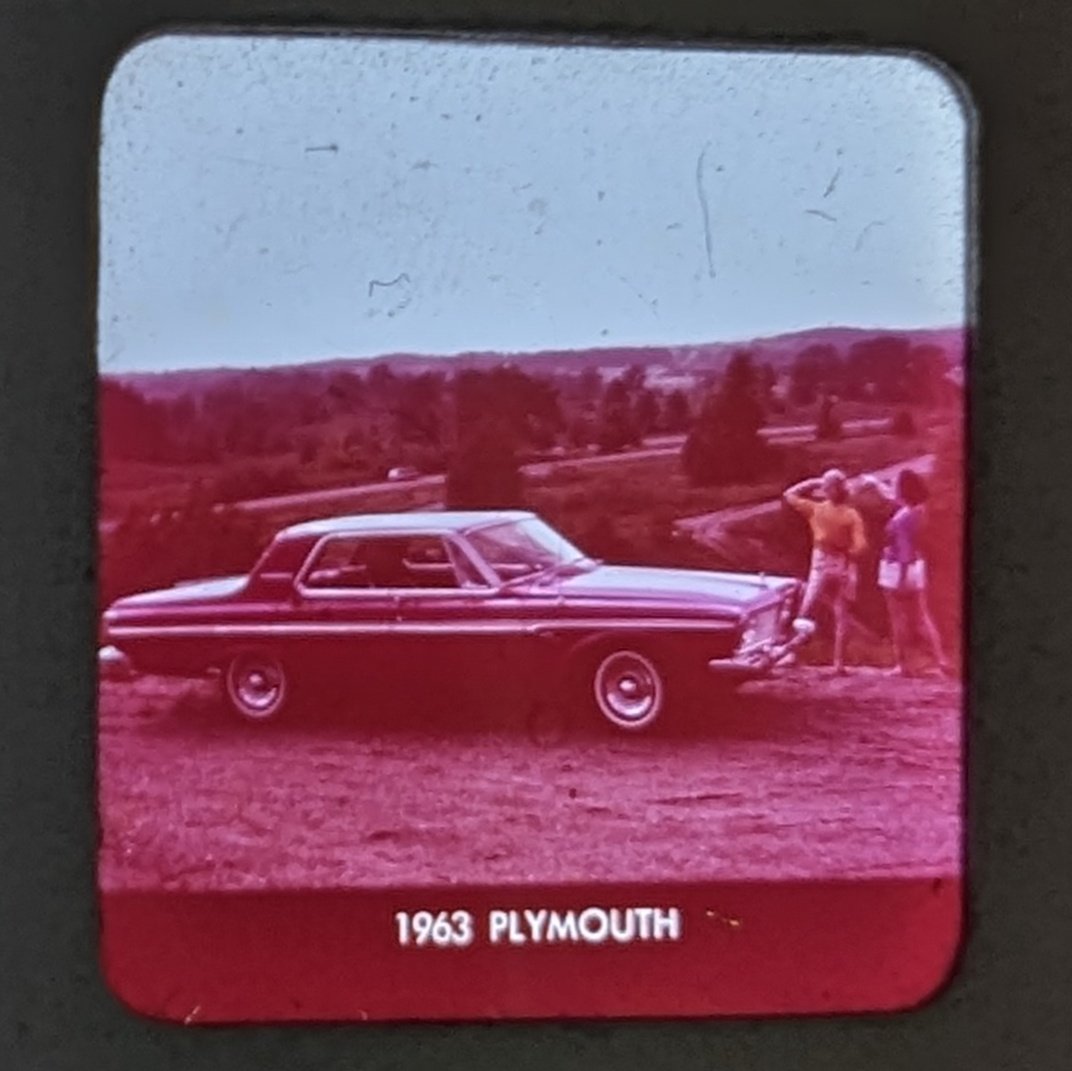
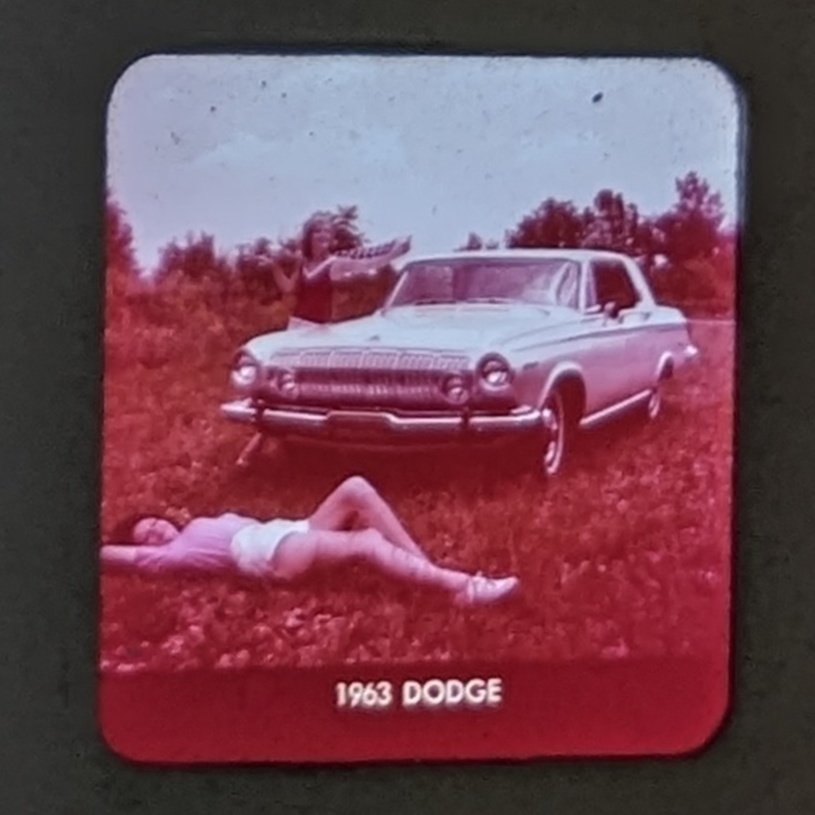


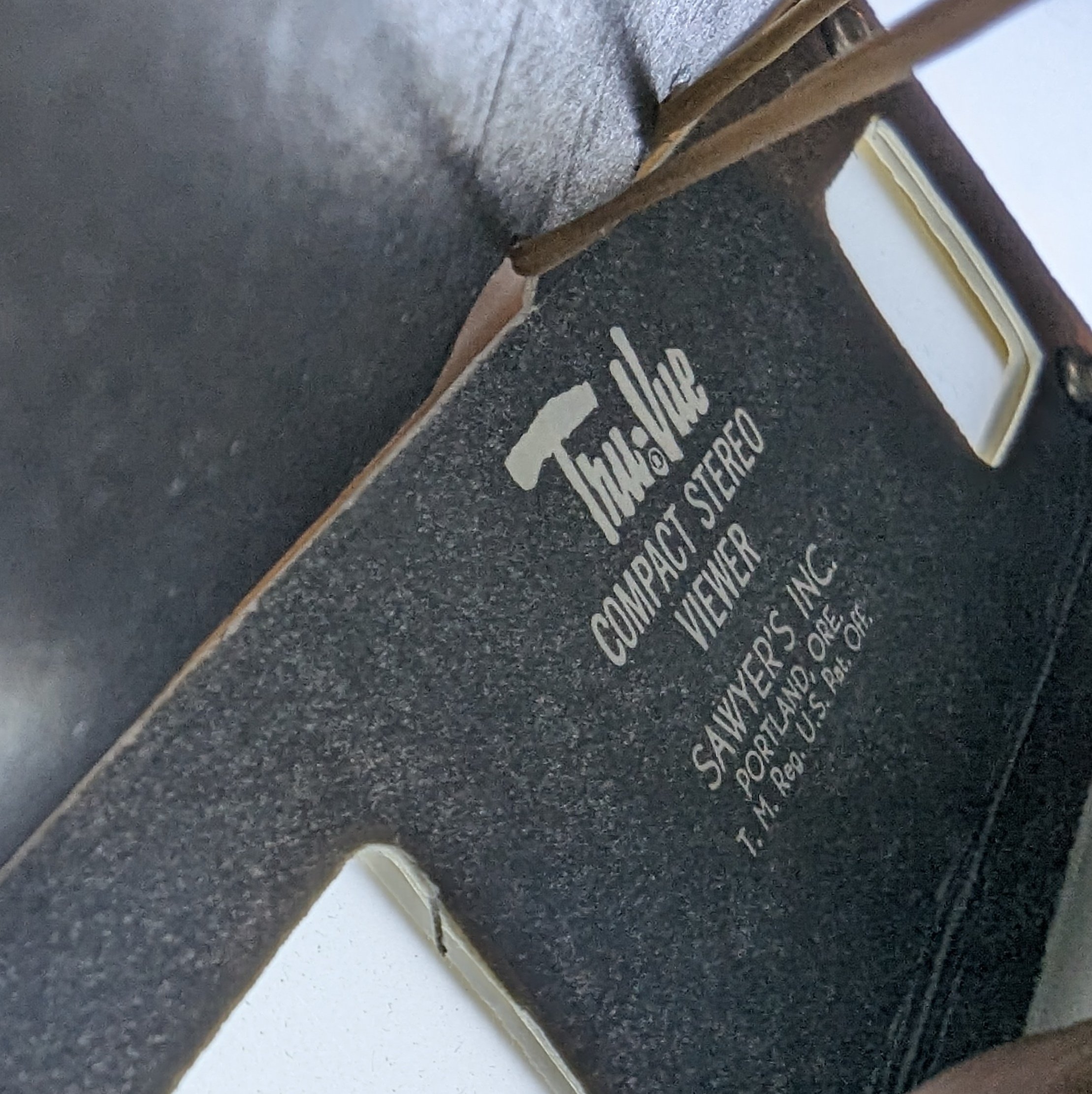
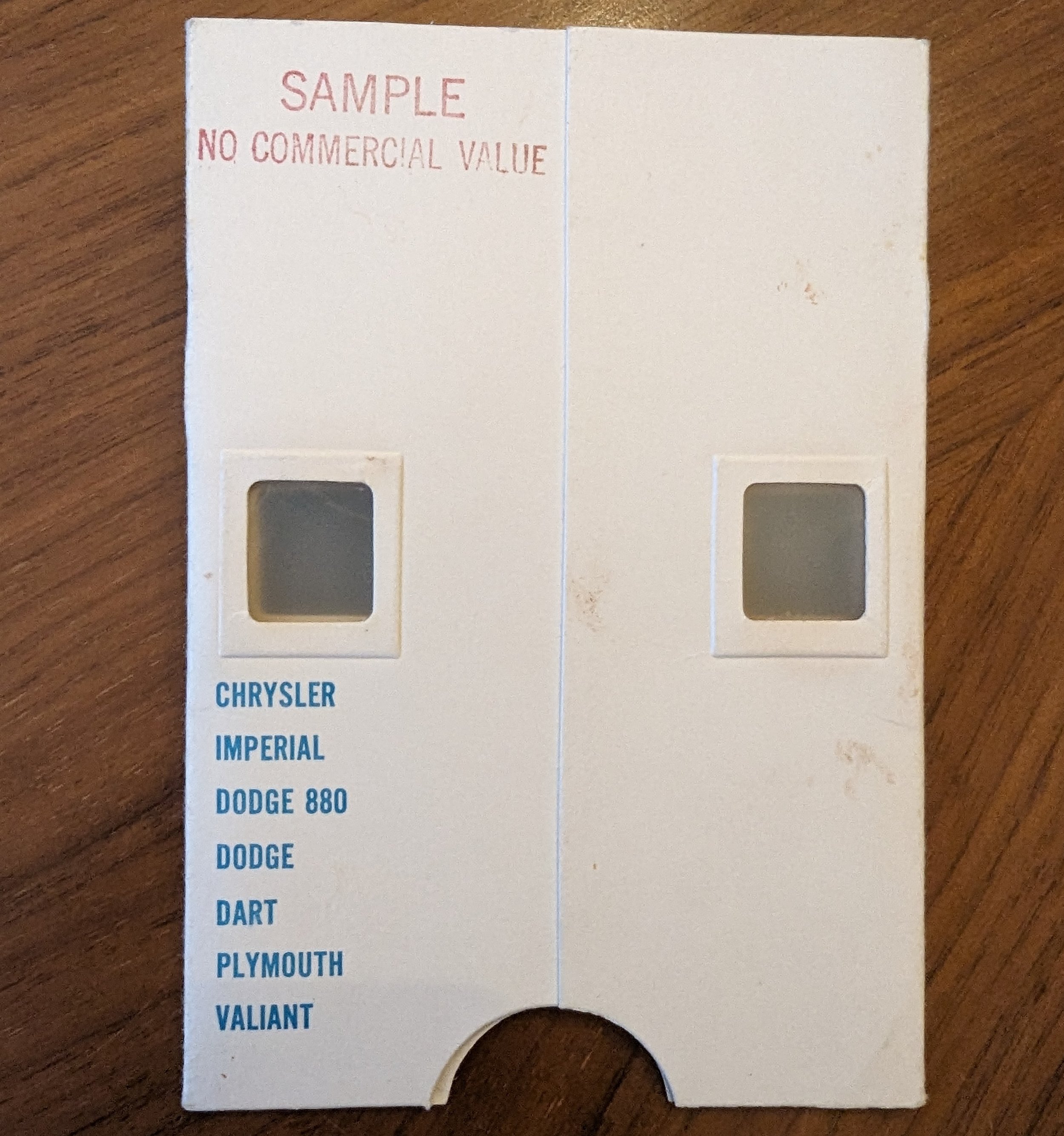
1969 Chrysler Imperial | Tru-Vue
This exclusive 3D preview of the 1969 Imperial came with a silver-gray viewer. It’s the only example of a Tru-Vue viewer in this color that we’ve seen so it may have been specially created for this set. The viewer and stereoview card were mailed to select prospective buyers, along with a brochure and a note from the president of Chrysler Canada, to give them a look at the 1969 Imperial before the general public.
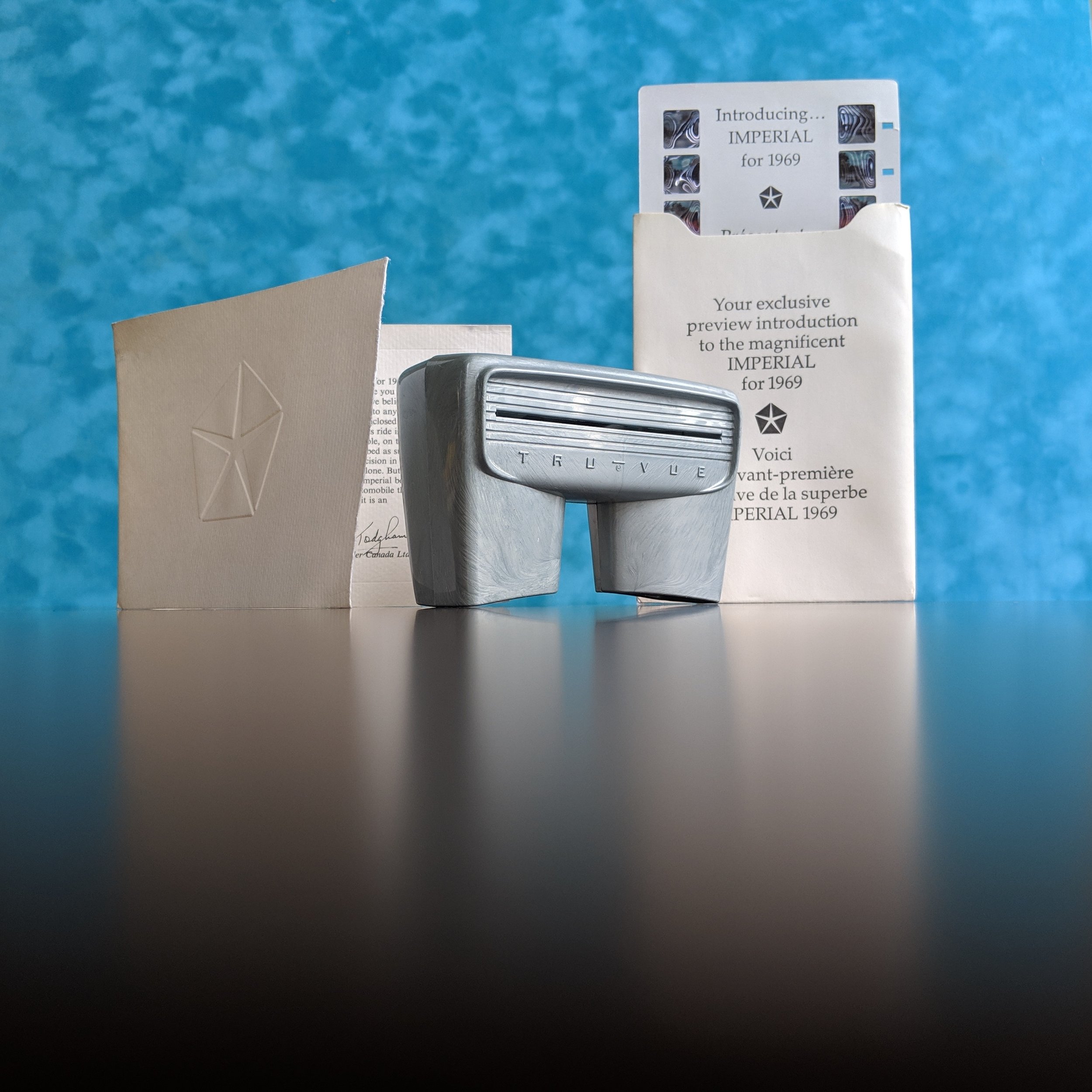
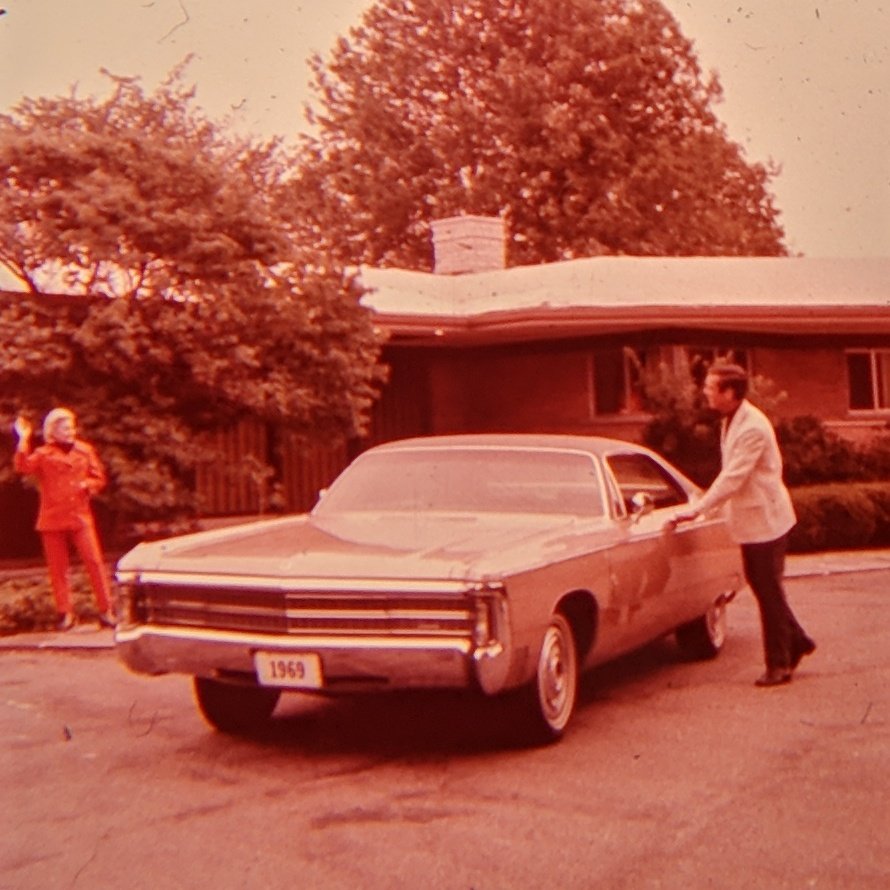
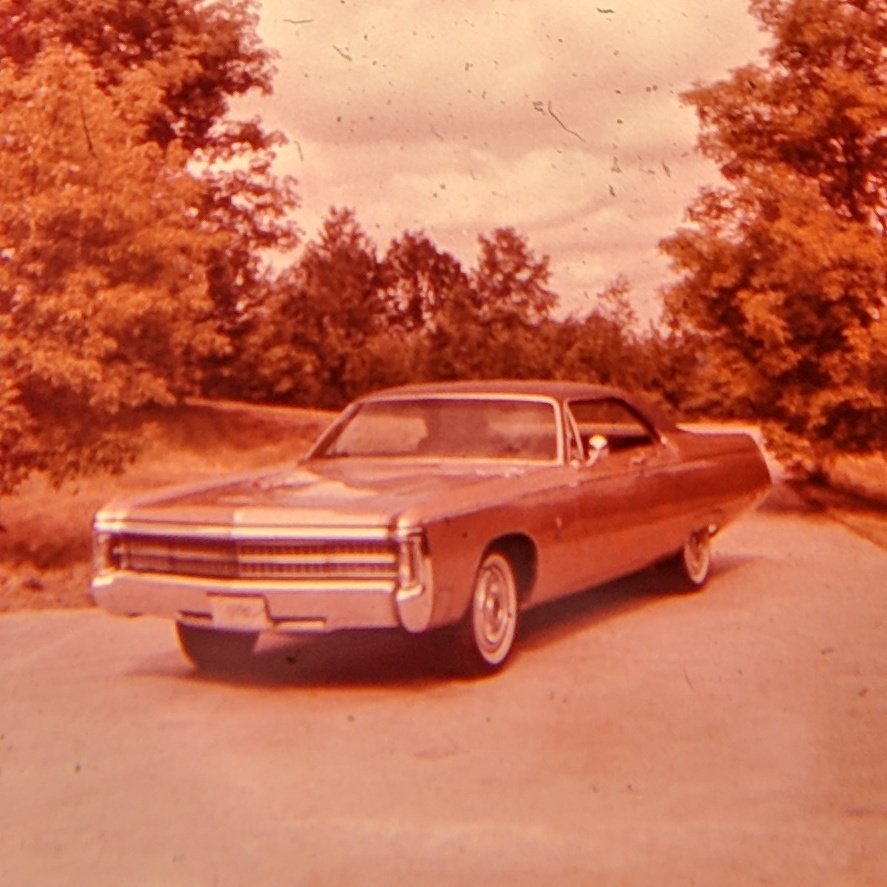
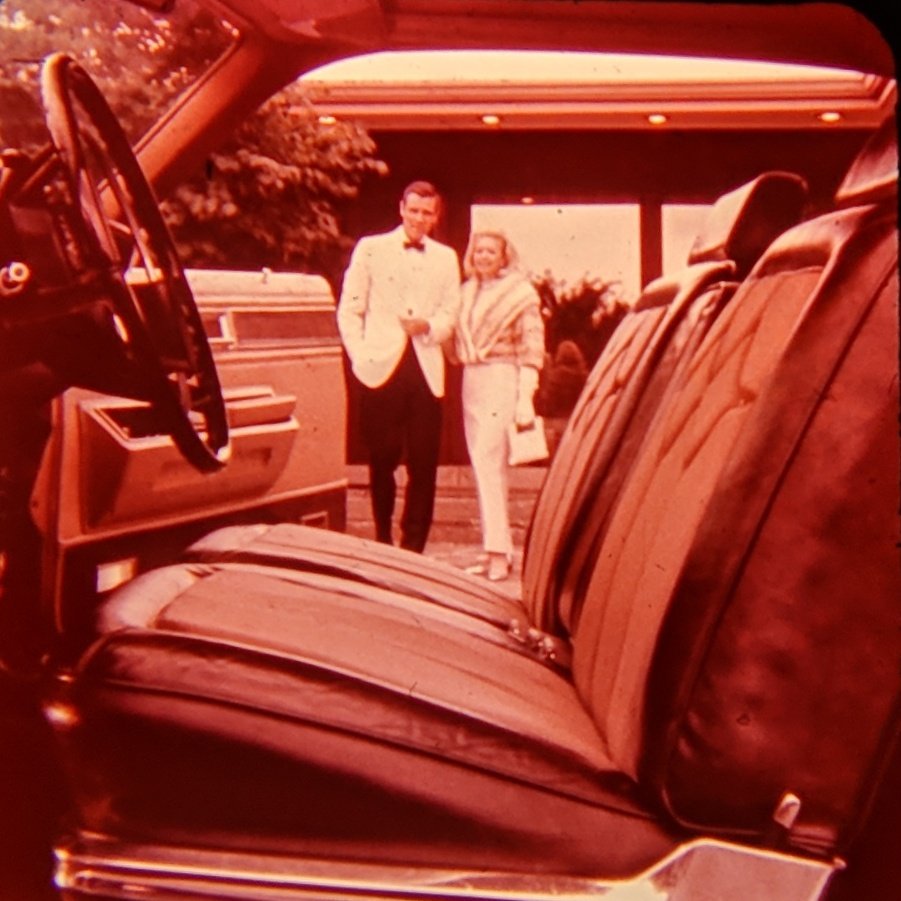
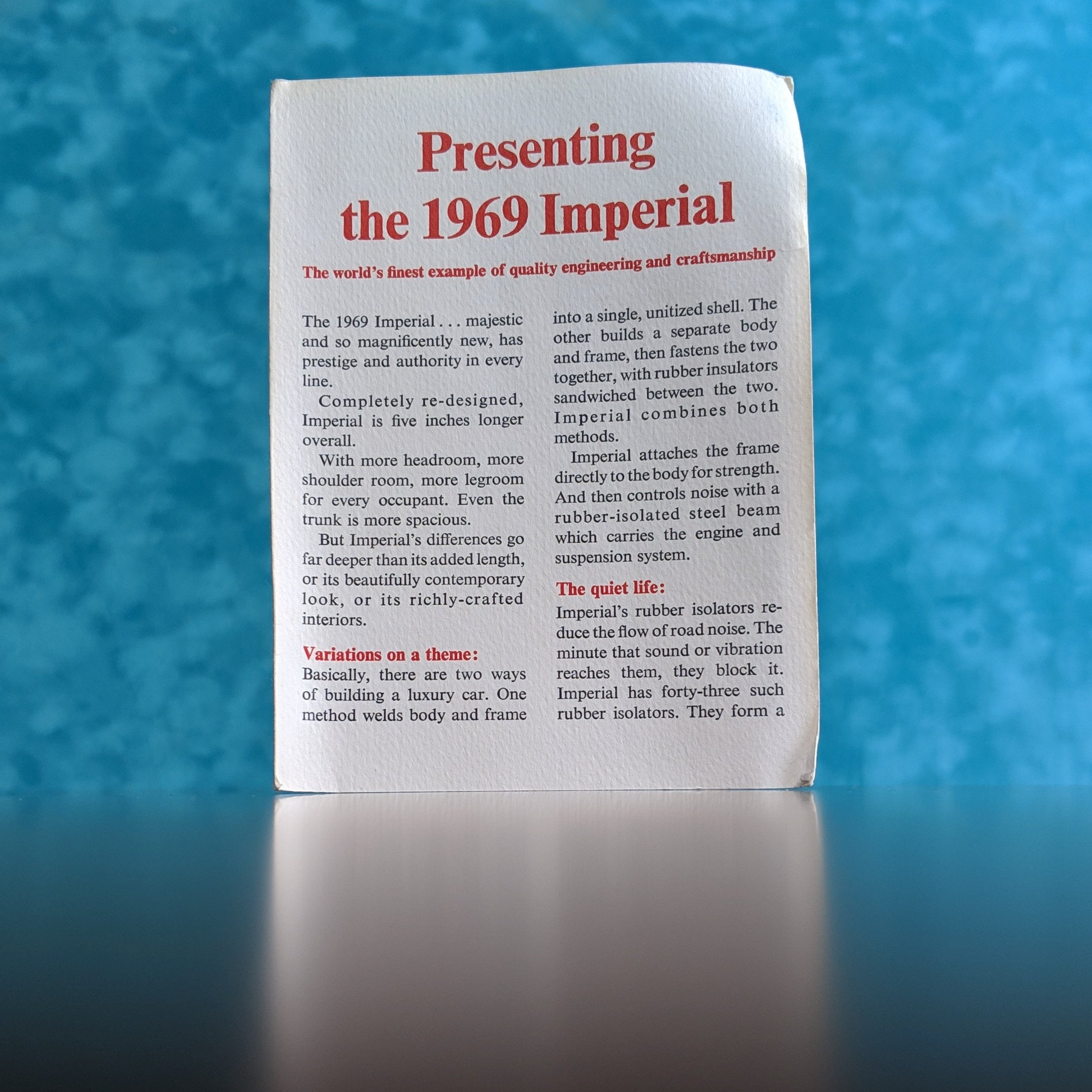
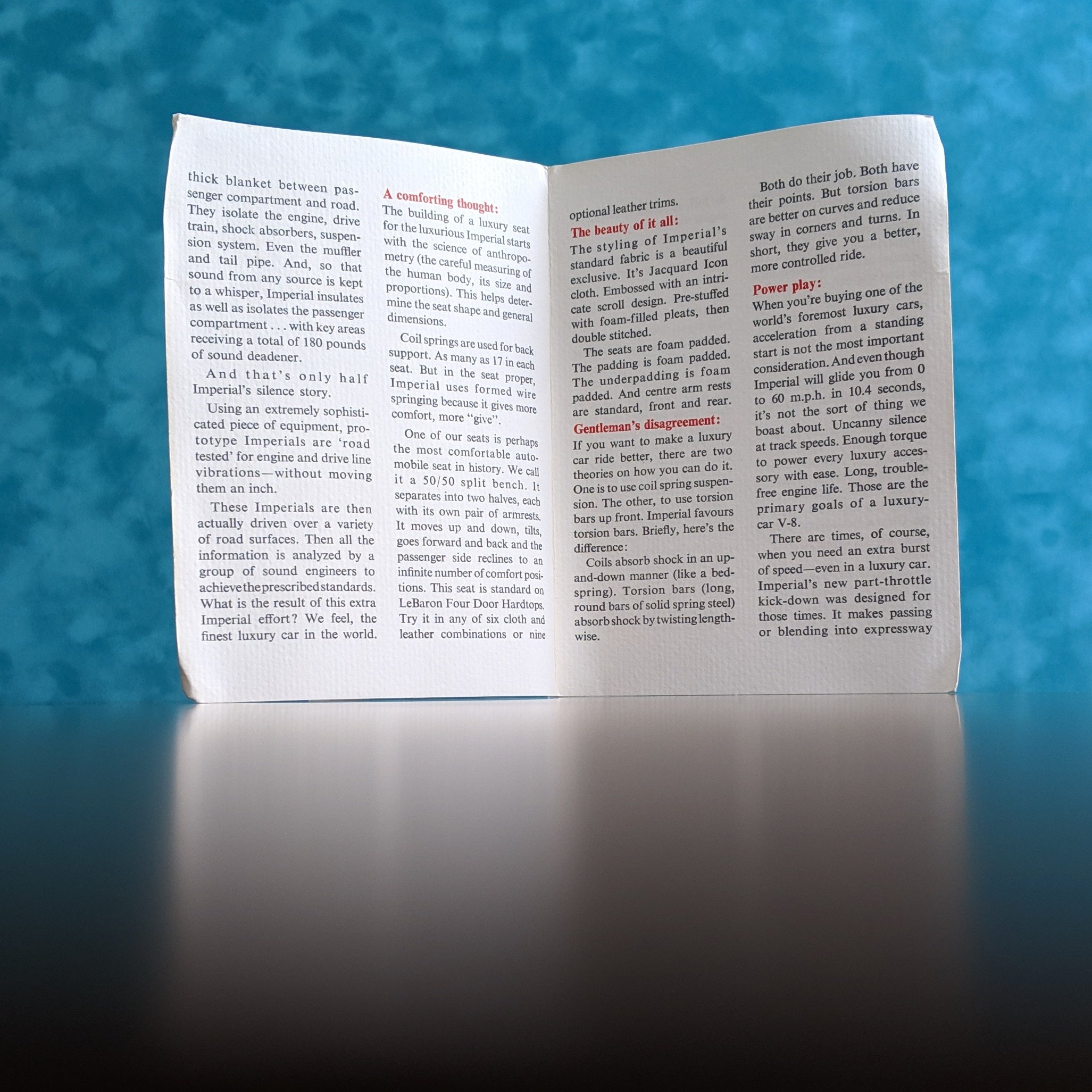
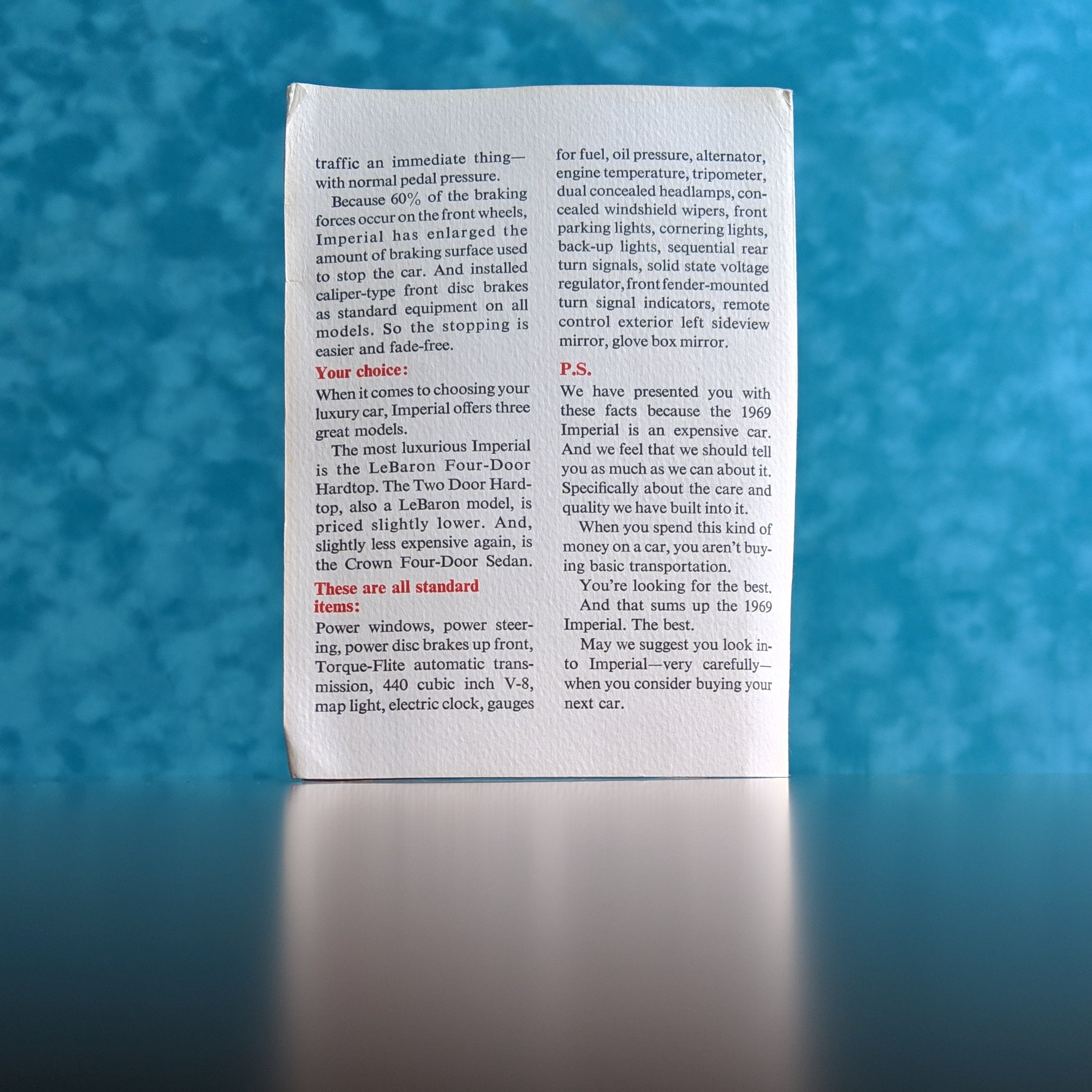
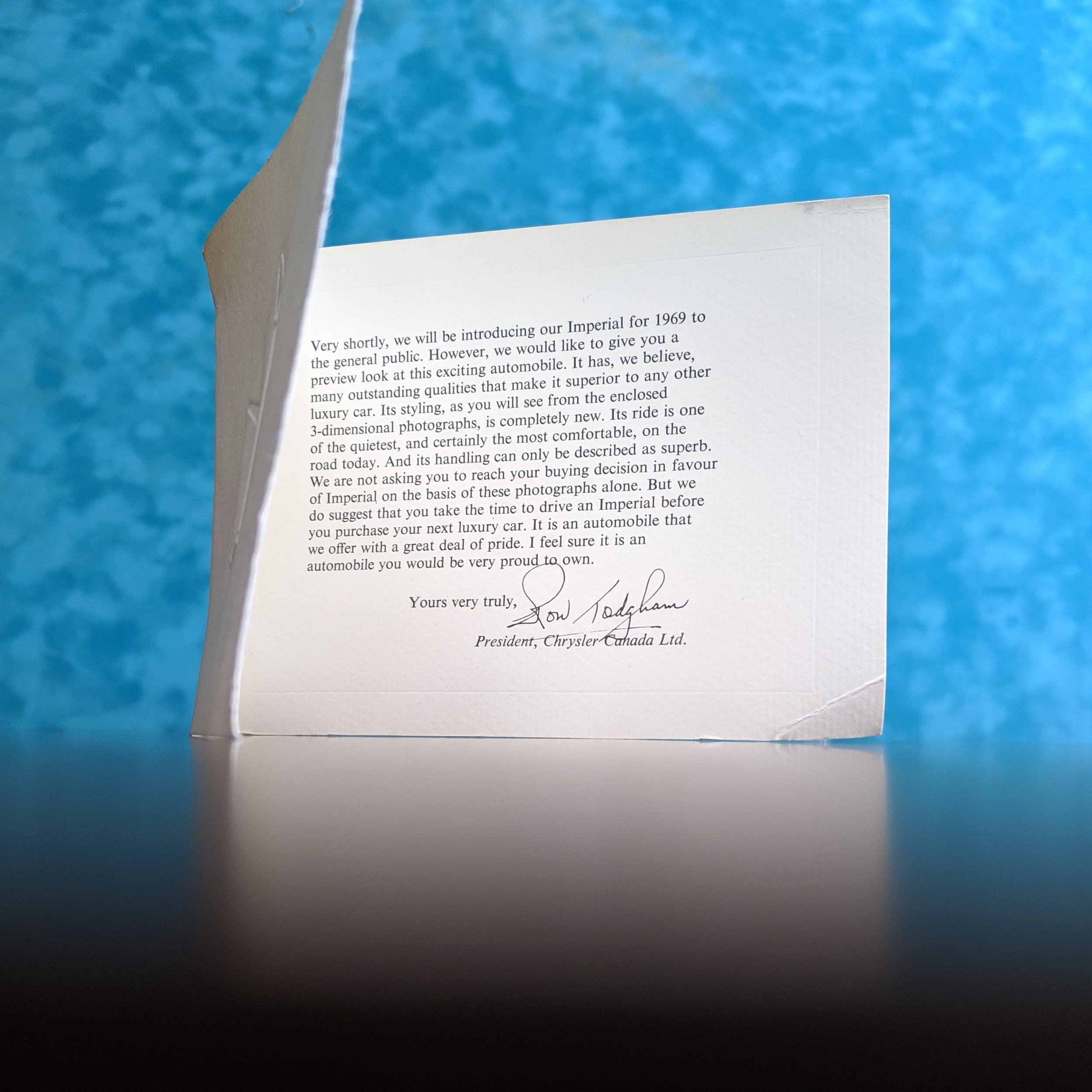
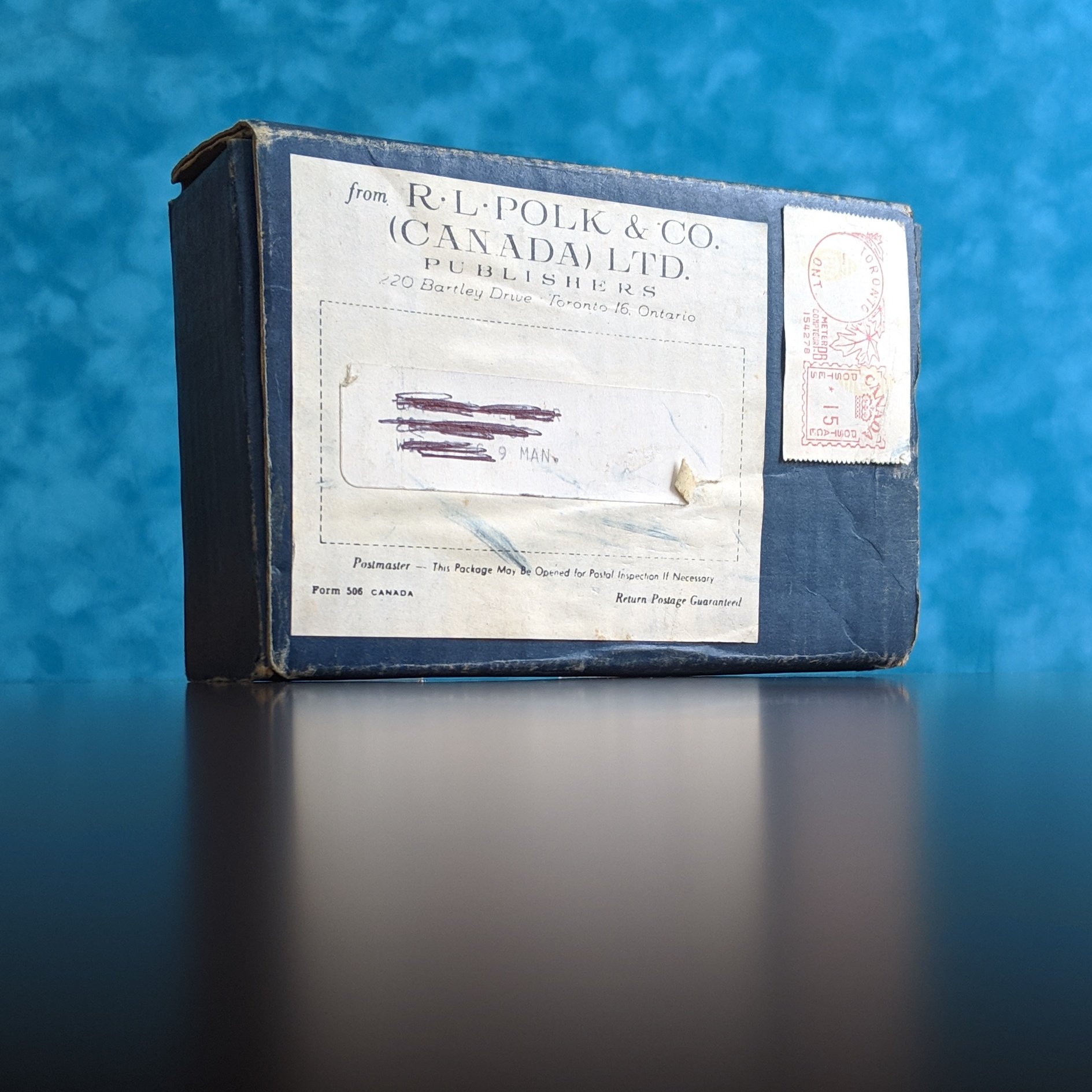
1980s Renault | Lestrade Collapsible Viewer
Renault returned to 3D advertising in the 1980s. This set shows off the Renault 9 in 3D using a nicely designed and branded multi-view stereoview card. The viewer color matches the “Renaurama” logo but other than that, it’s a standard-issue, unbranded collapsible Lestrade viewer.
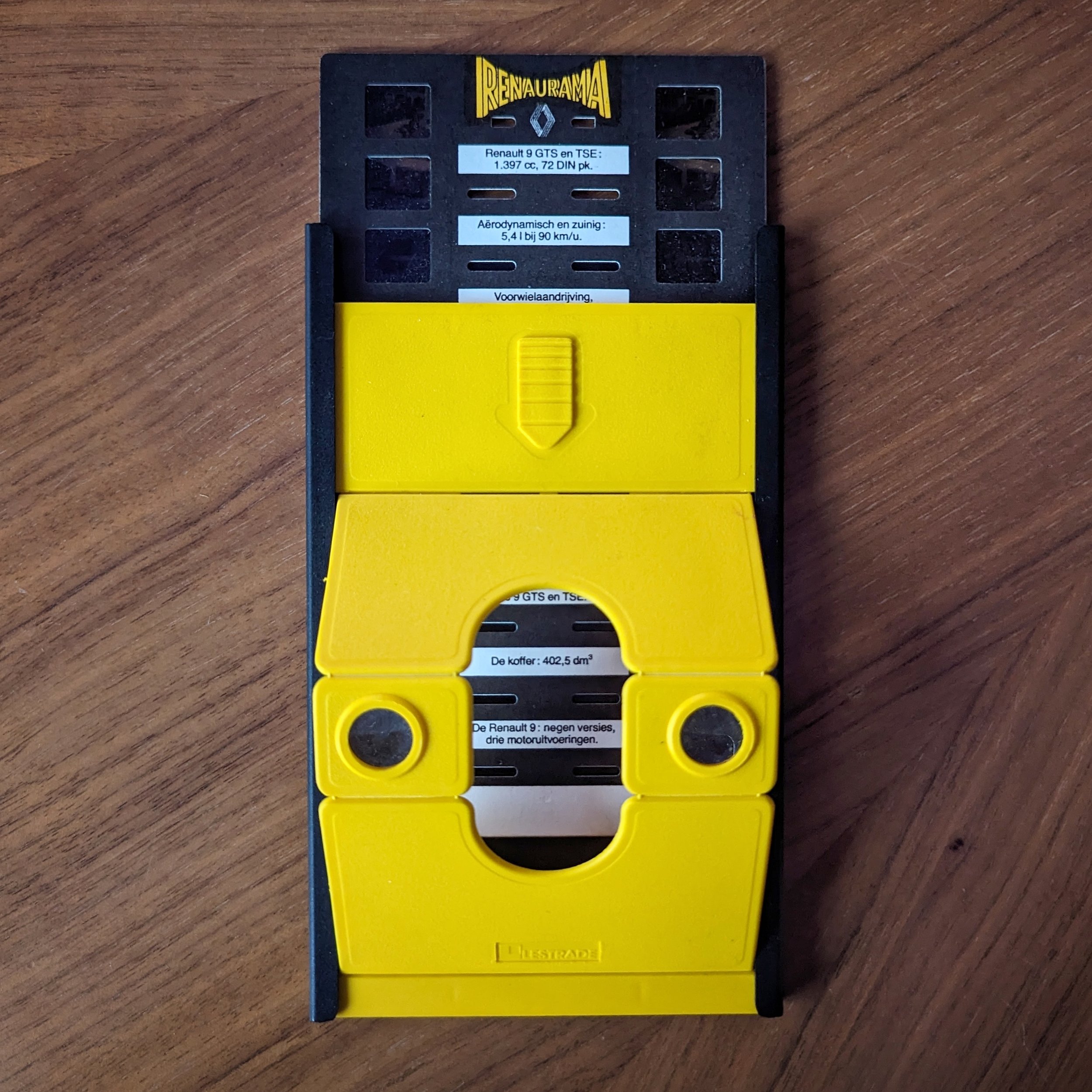

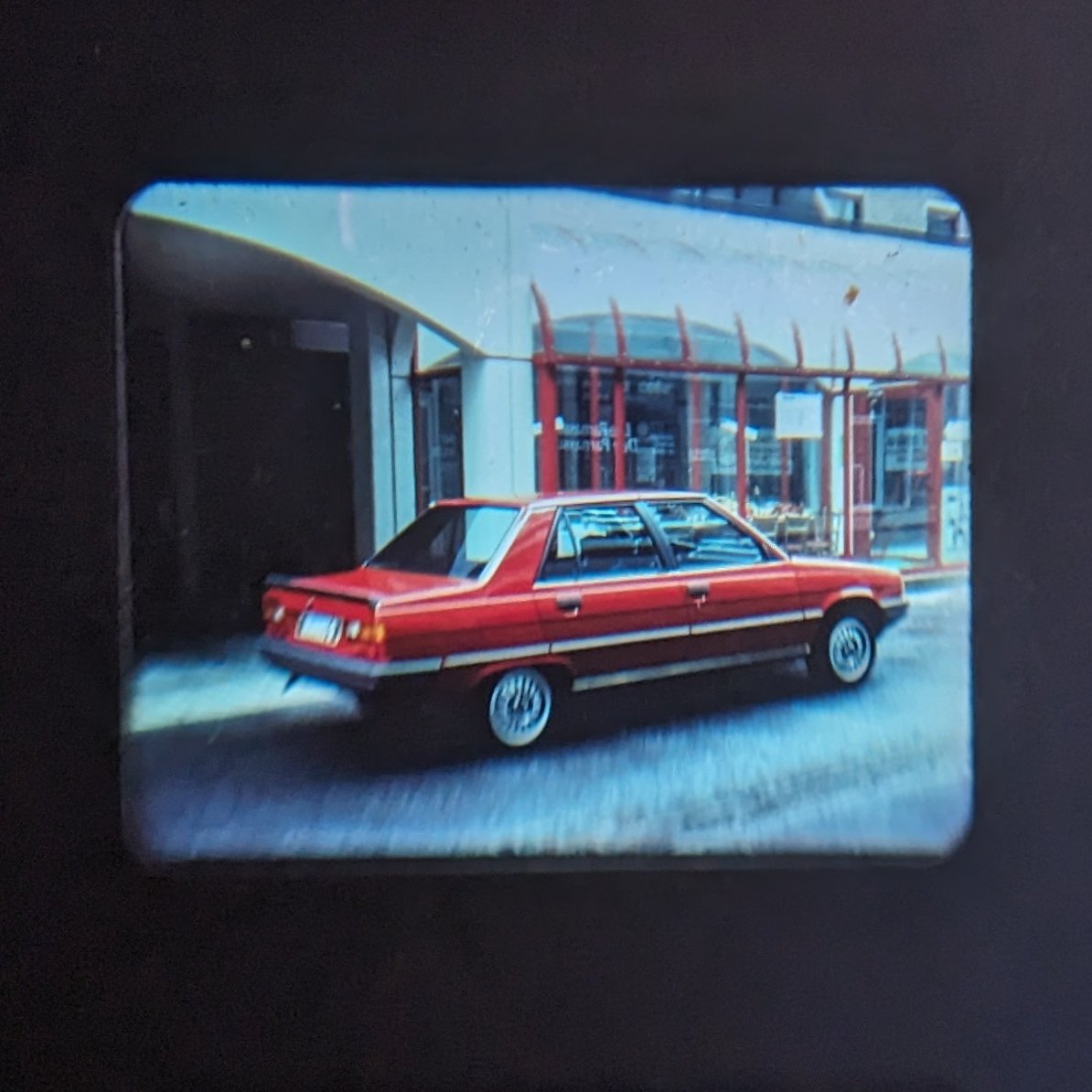
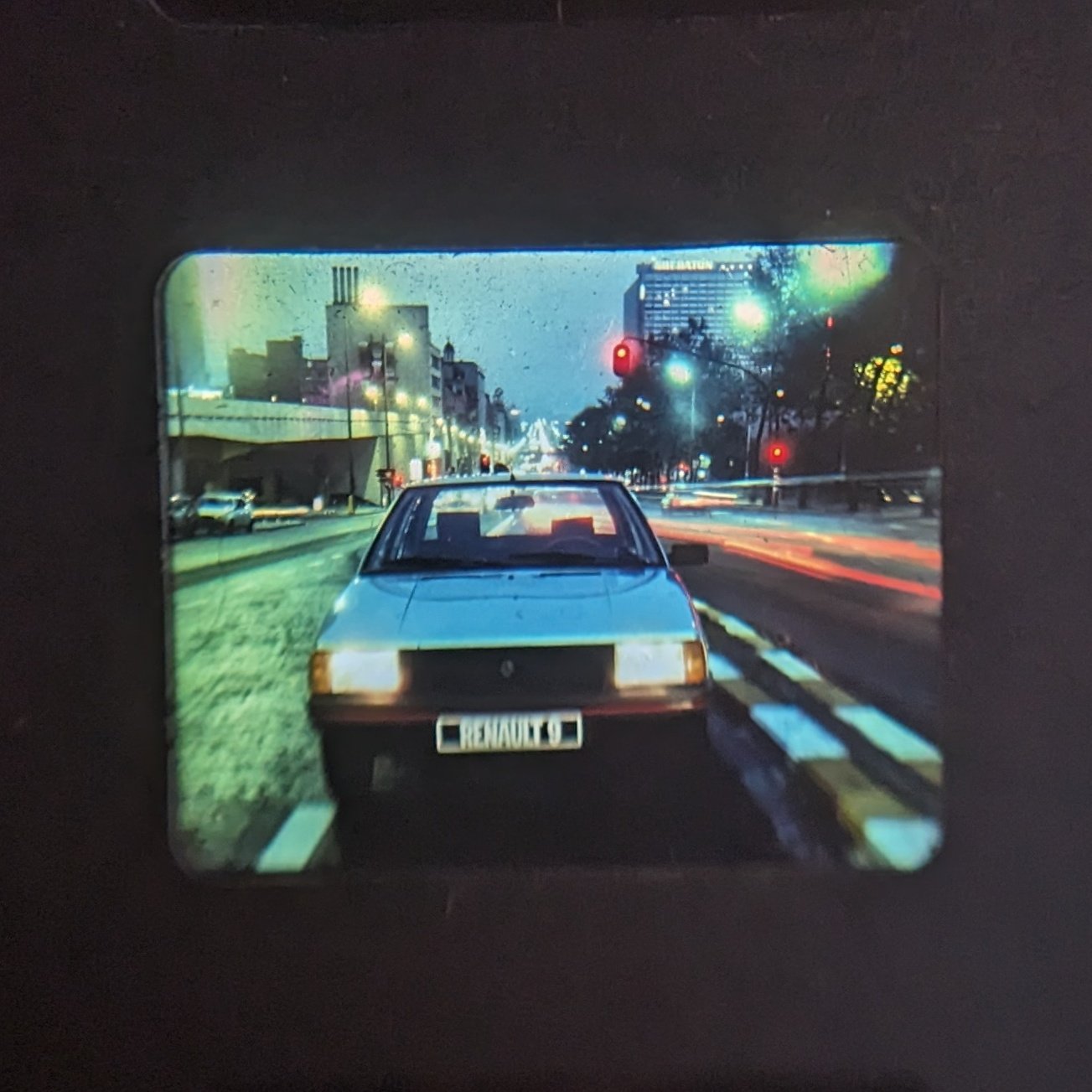
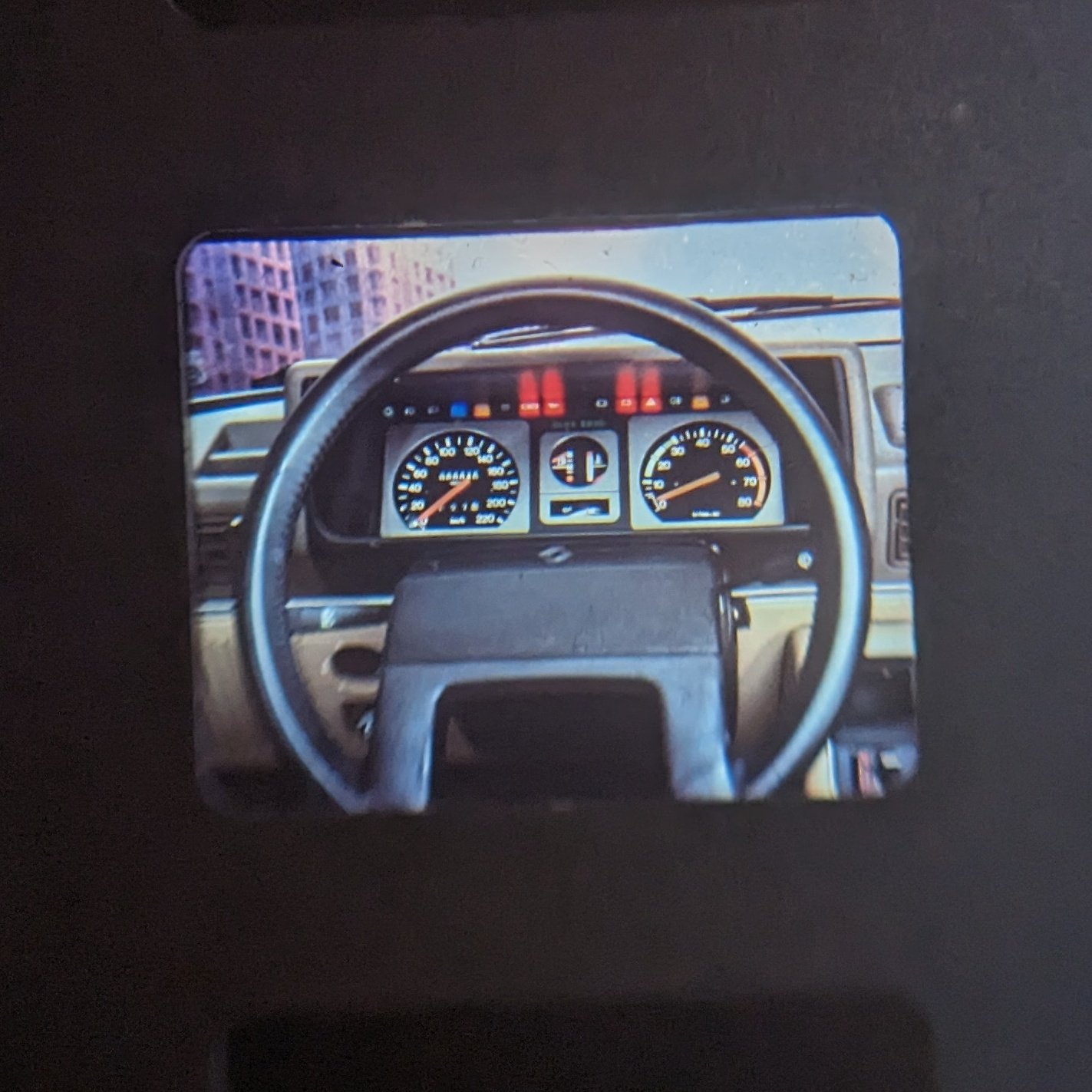
1990s Oldsmobile Alero | 3Discover
Our most recent example of car advertising in 3D — and our second entry in this post for Oldsmobile — comes from the 1990s filmstrip viewer 3Discover by 3D Vision in Canada. 3Discover filmstrips covered a wide range of subjects but featured here is the cartridge for the Oldsmobile Alero. For more info about this viewer, see our 3Discover page.
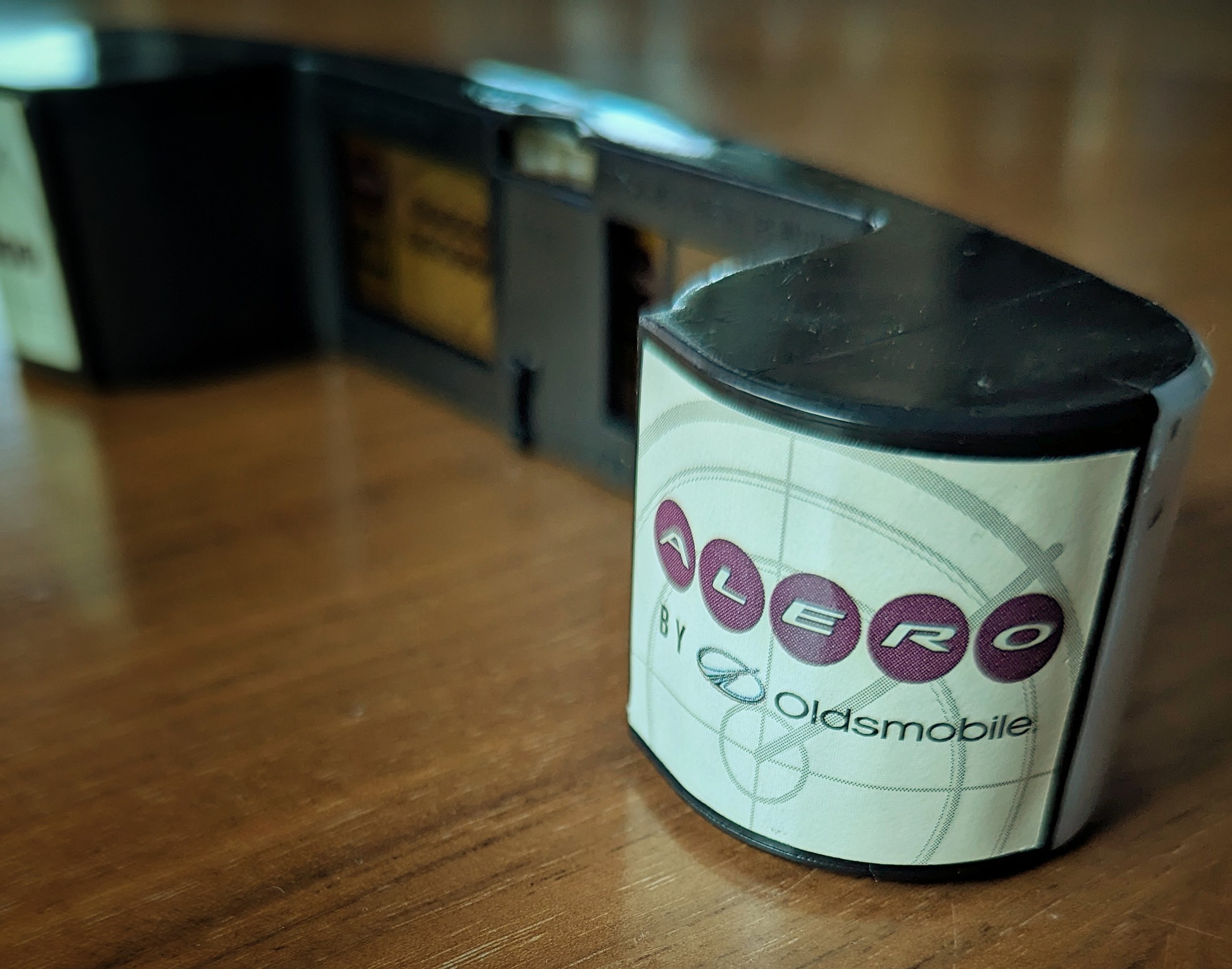
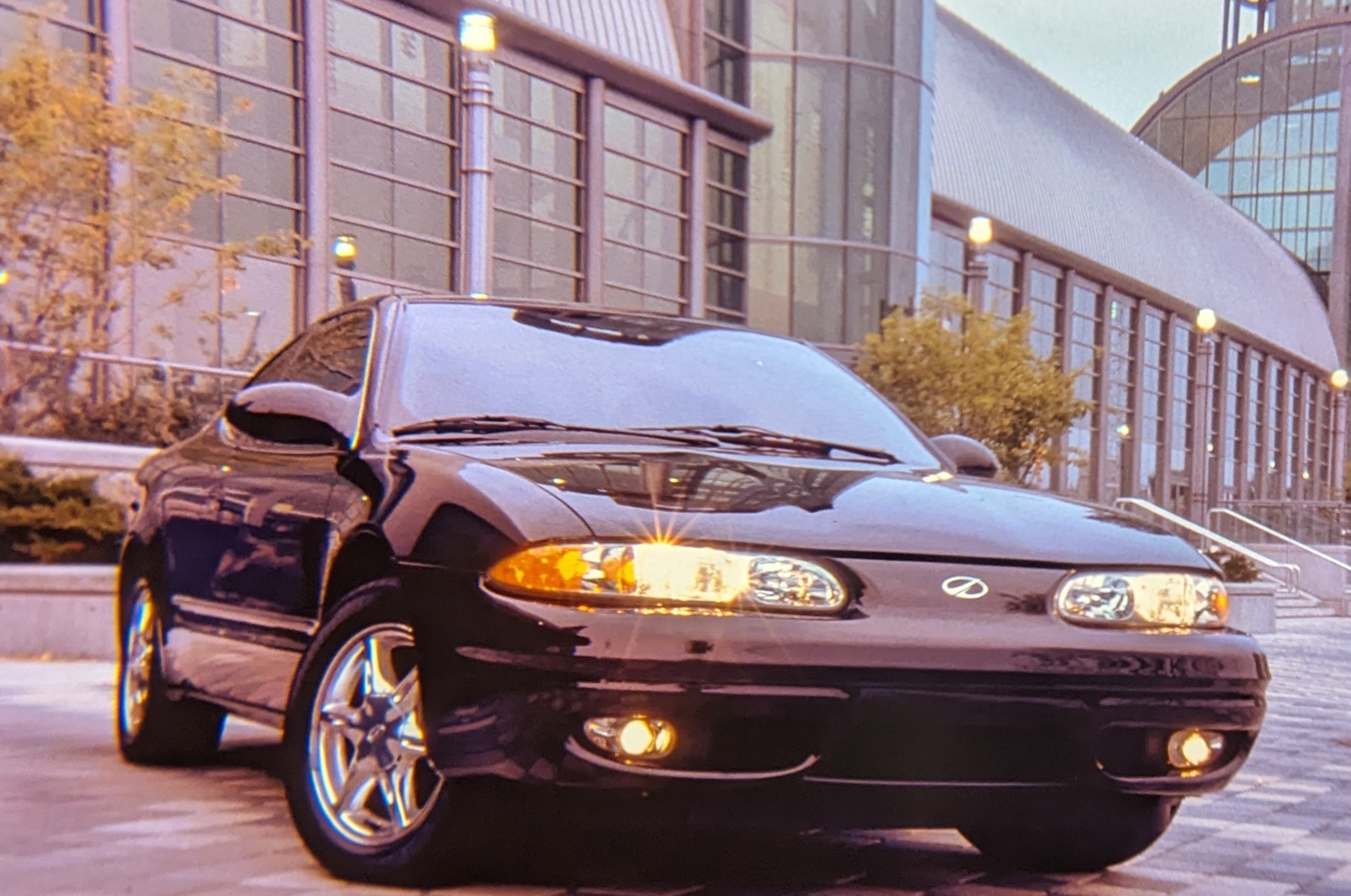
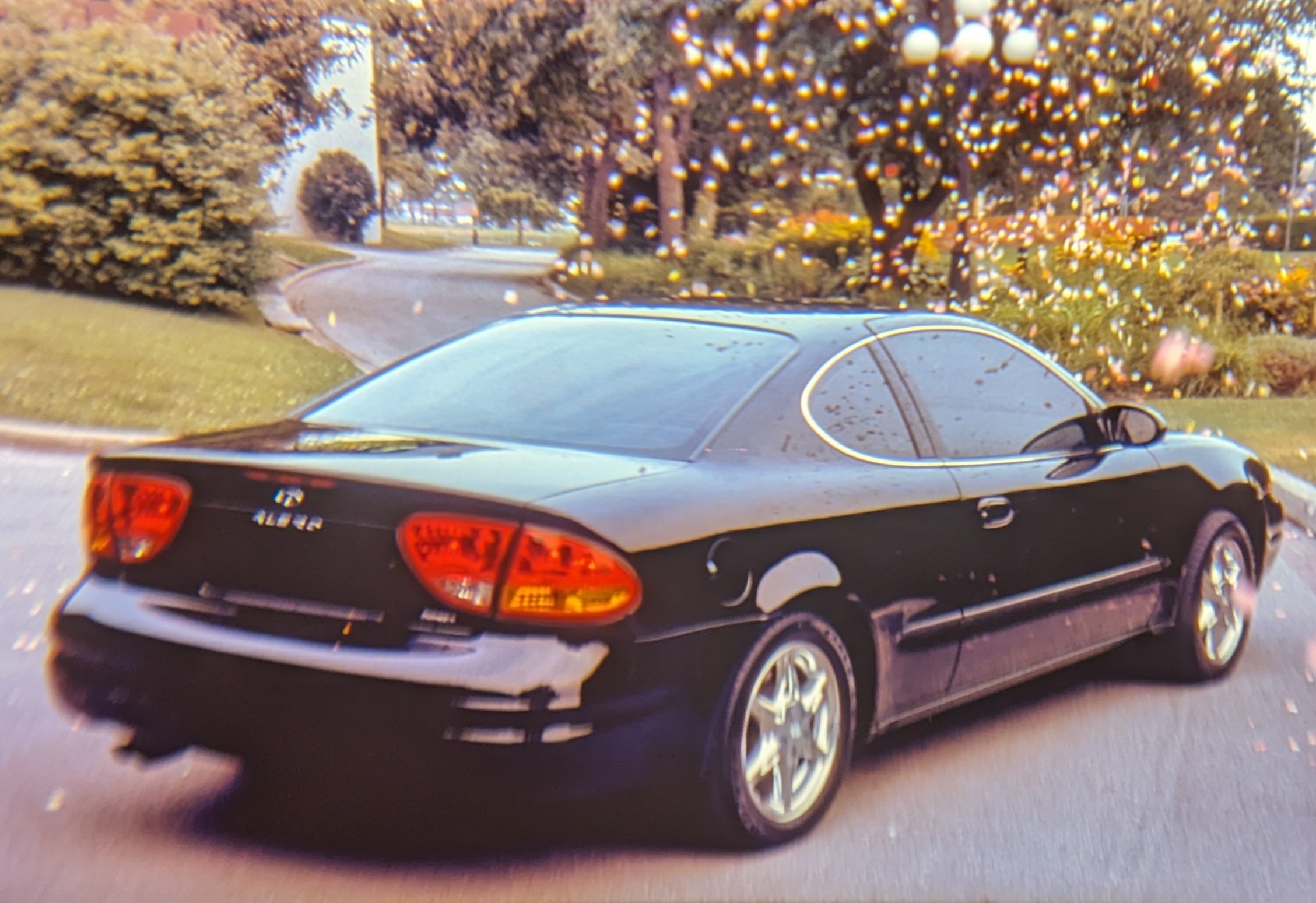
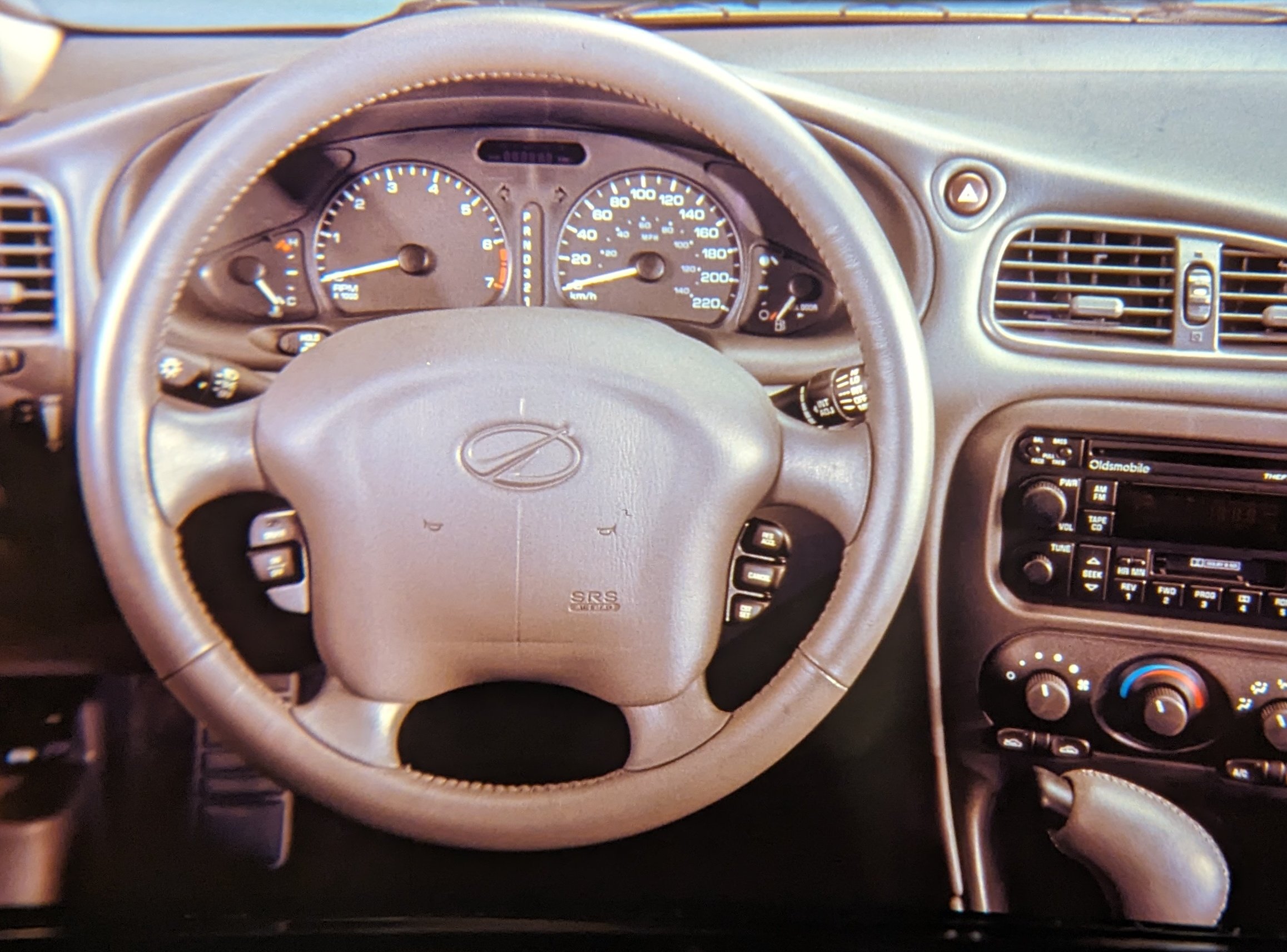
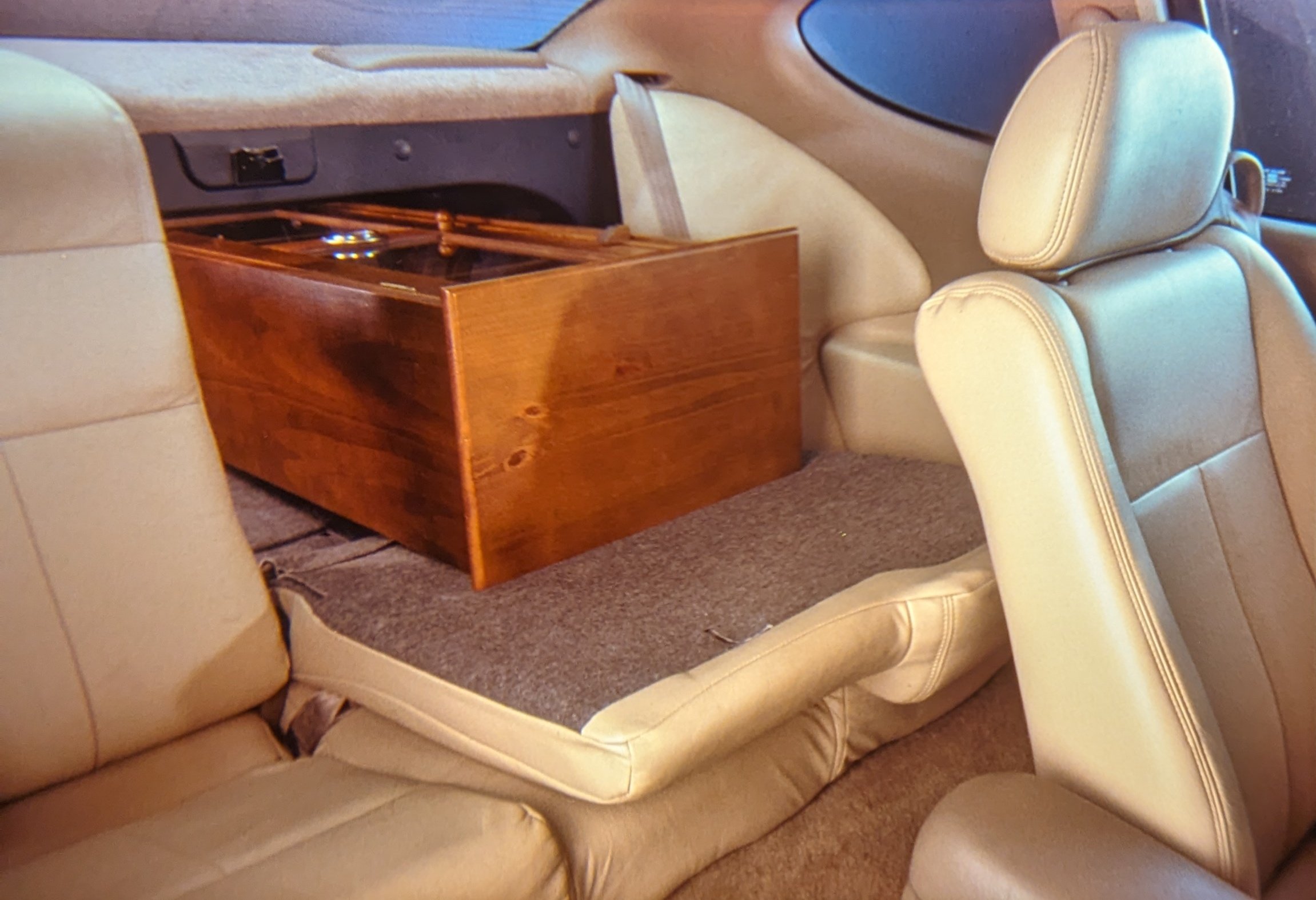
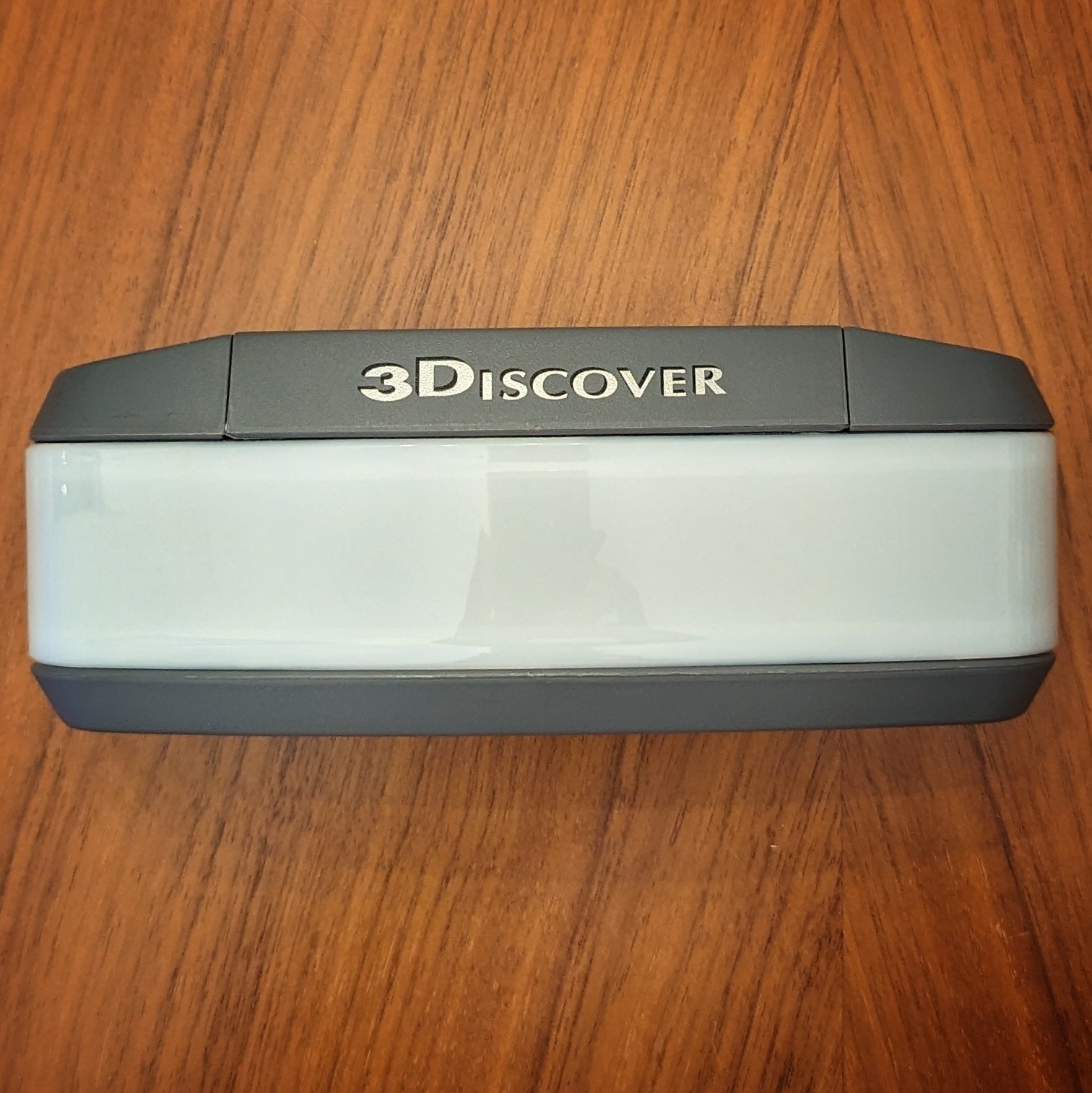
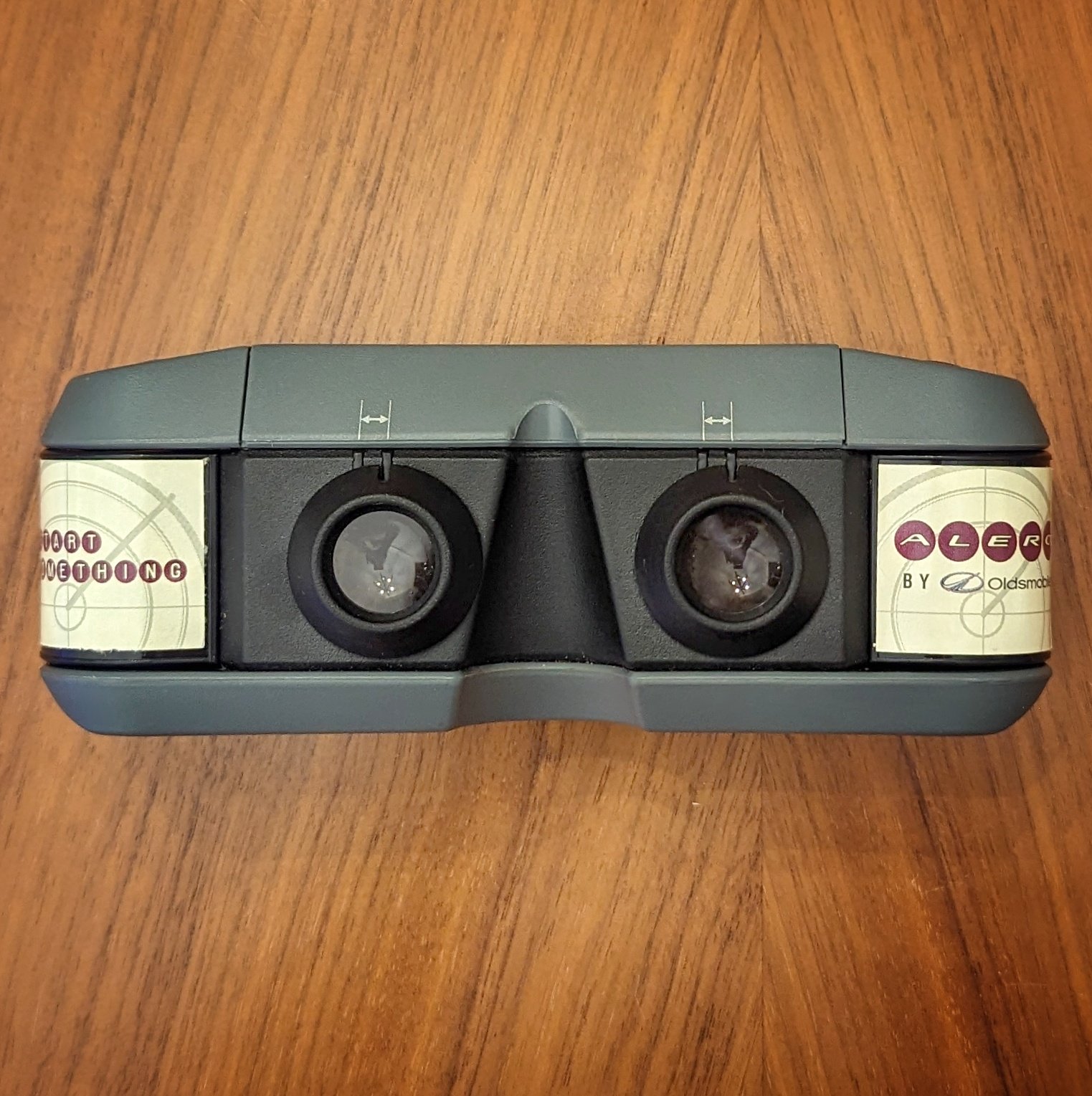
1998 Toyota | 3Discover
This 3Discover film cartridge was a partnership between Toyota and the now-shuttered department chain Les Ailes de la Mode in Canada. The promotion was a flirty tease for the 1998 Corolla with the text on the images translating to: “I will reveal to you my new curves during a very special fashion event at your store.” For more info about this viewer, see our 3Discover page.
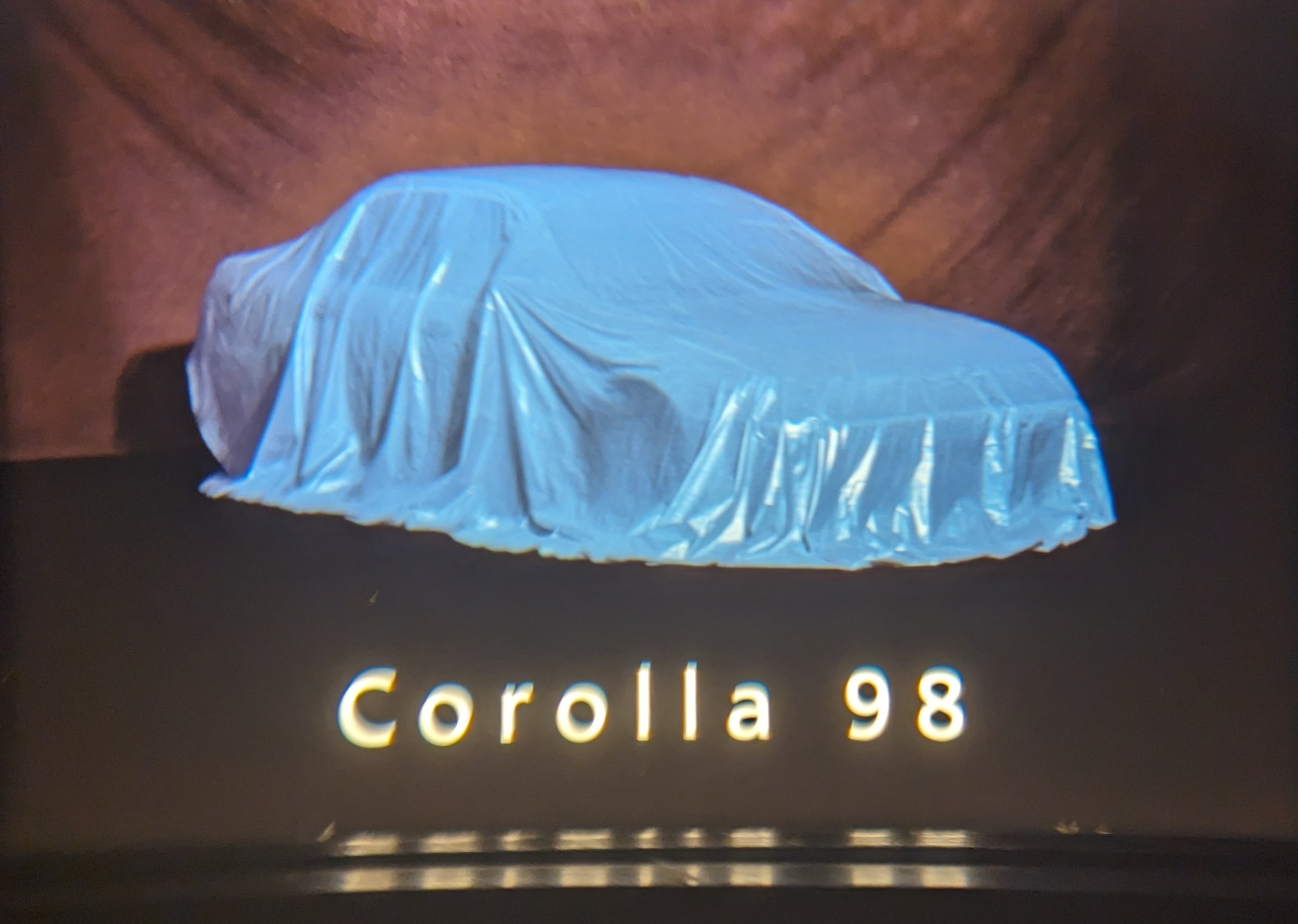

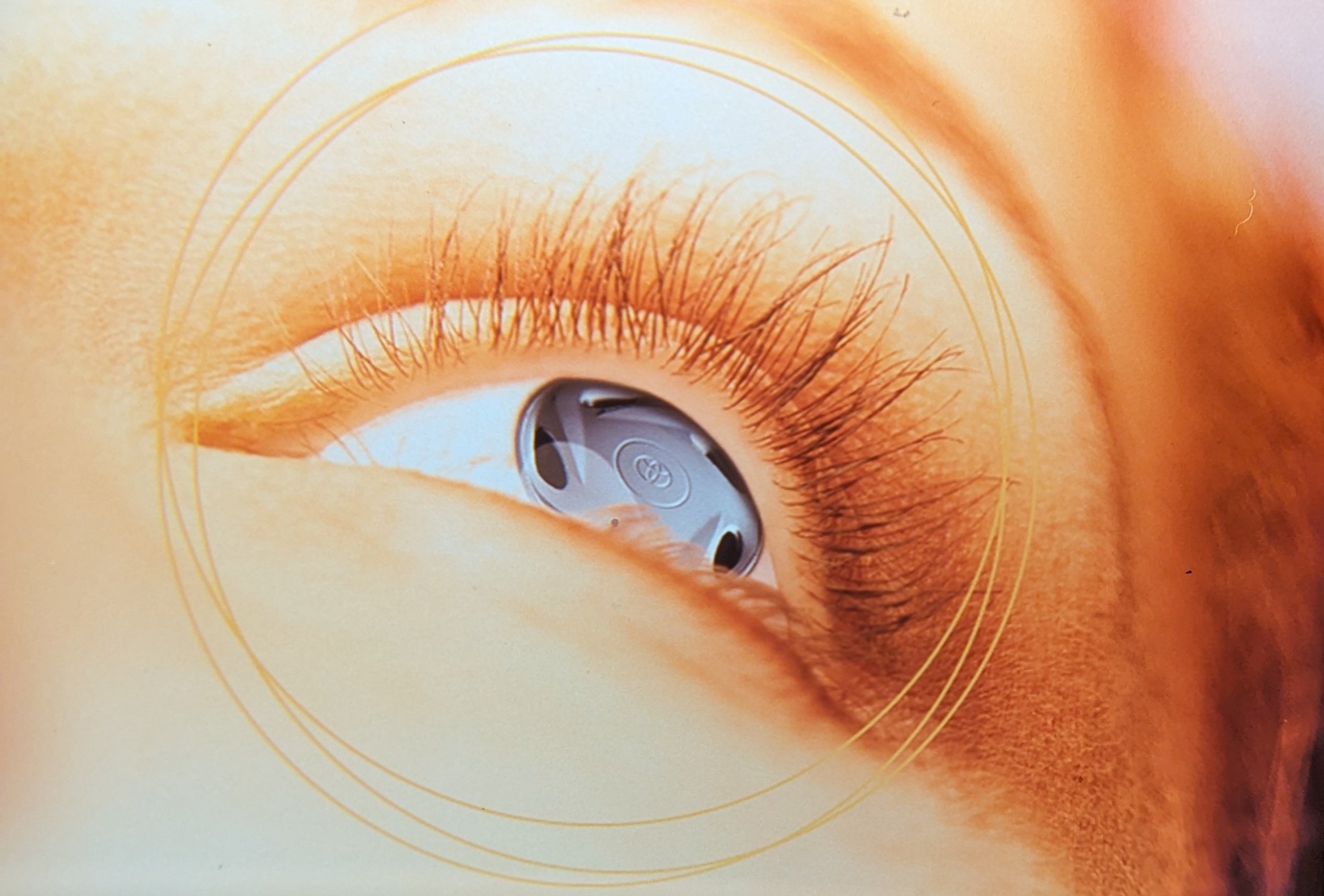
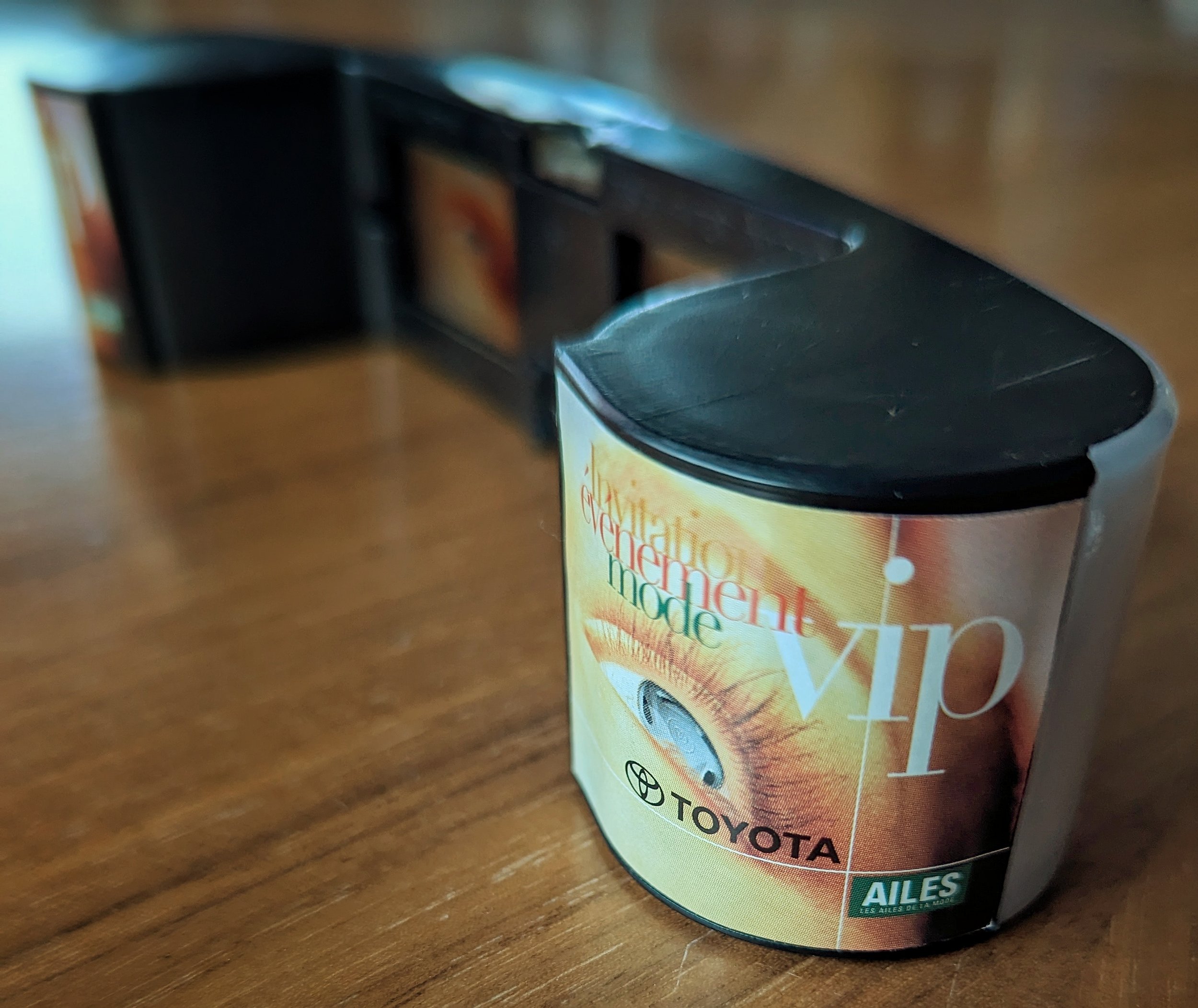
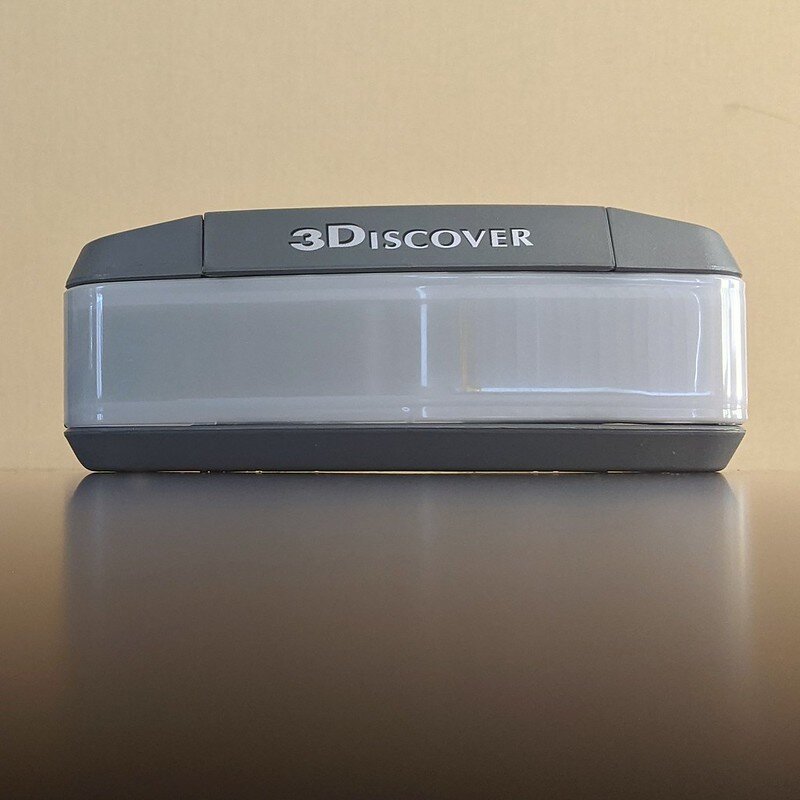
We had so much fun putting this post together that we’ve decided to do another post focusing on commercial vehicles in 3D. That one will be shorter but we hope you’ll still find it interesting.
